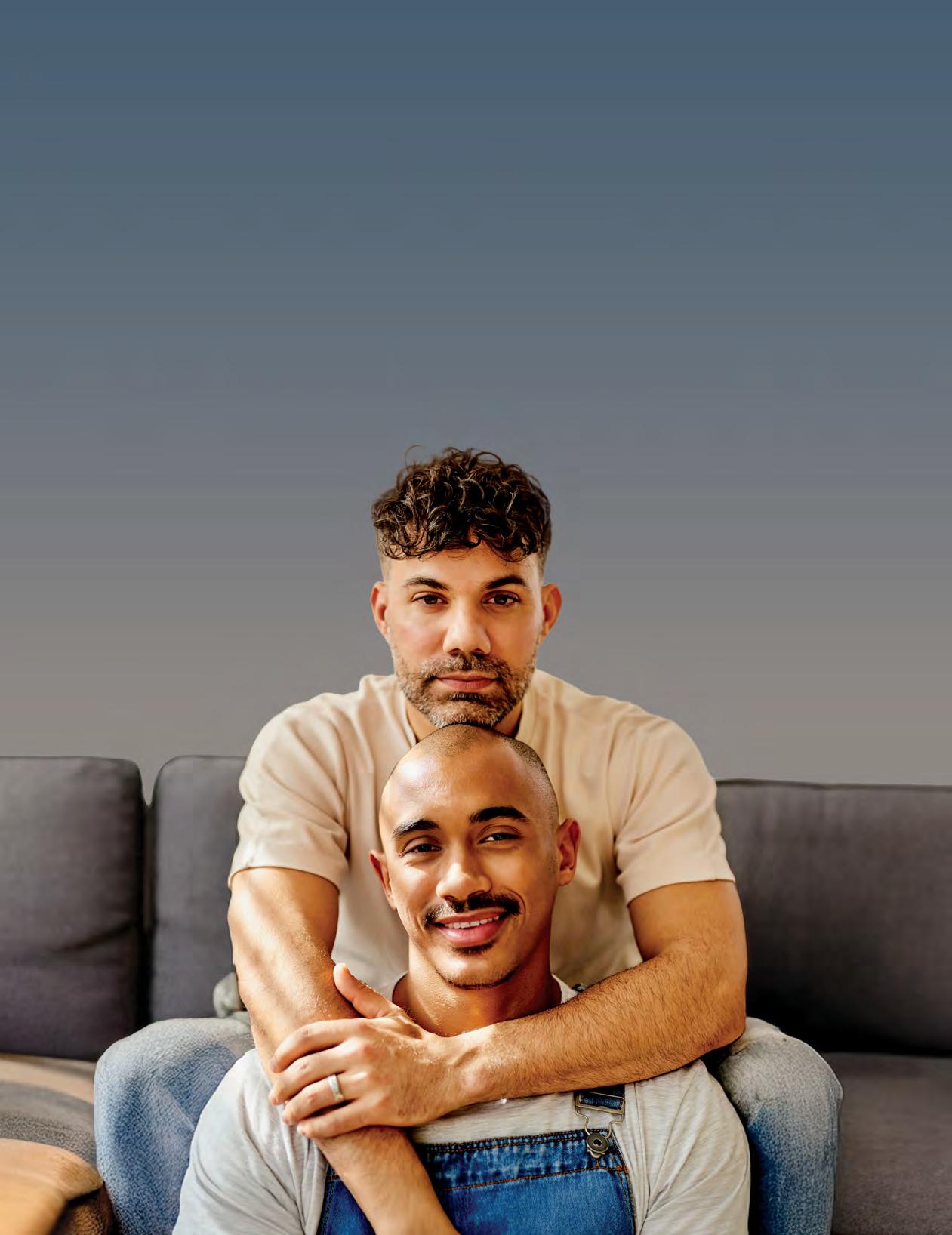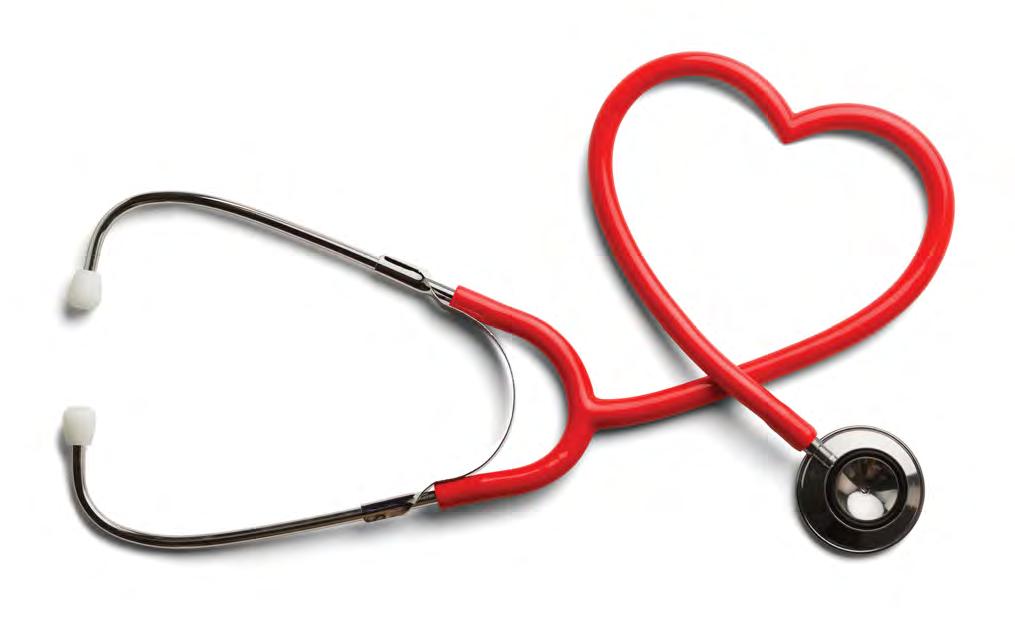
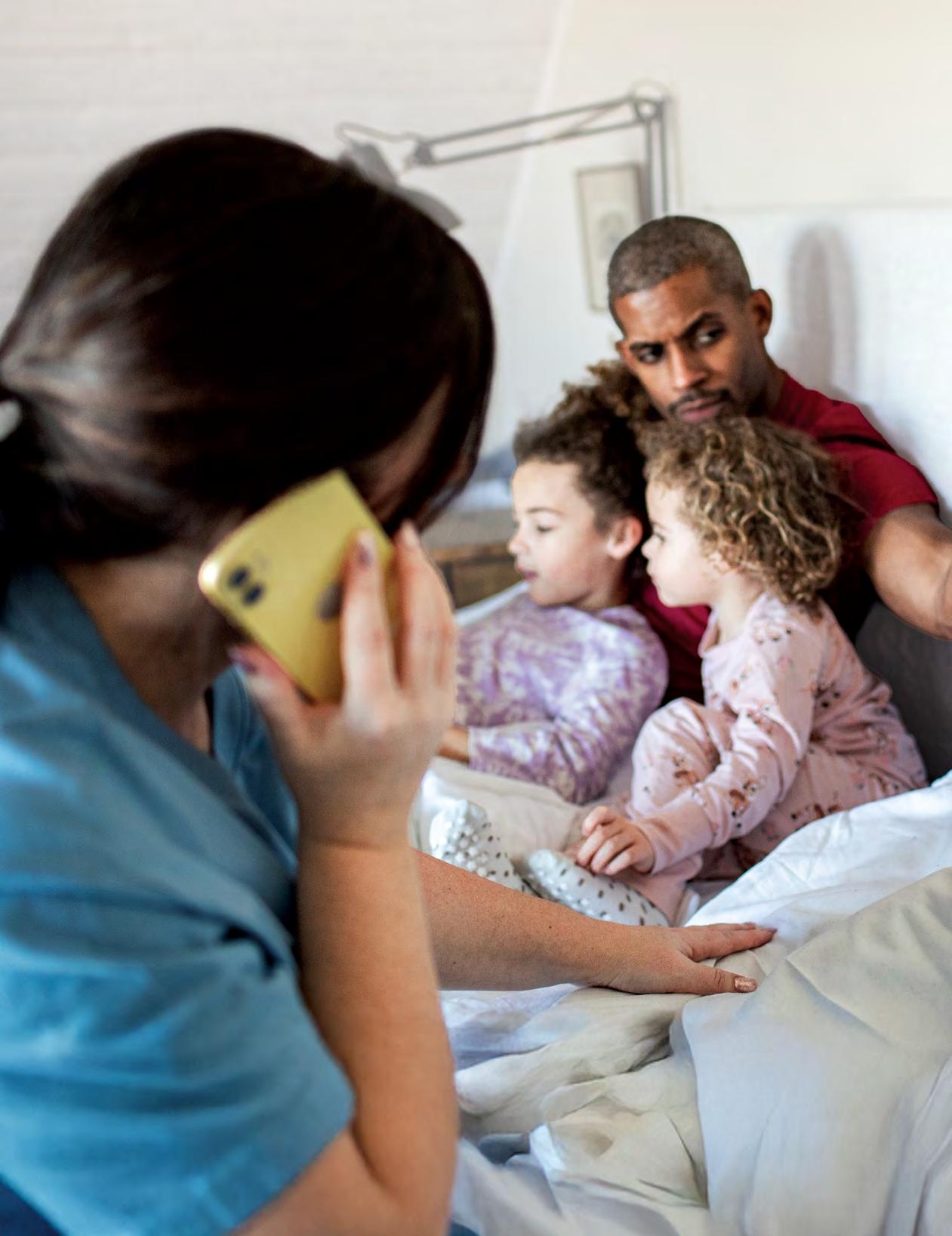





Fast, friendly, walk-in care — no appointment needed.
• Coughs, colds, flu, sinus infections
• Stomach pain, nausea, or diarrhea
• UTIs, STIs, and minor rashes
• Sprains, strains, cuts, burns, or eye irritations
• Blood pressure & blood sugar concerns
Cathedral City 760.321.6776
El Cajon 619.401.0404
Escondido 760.871.0606
Desert Hot Springs 760.676.5240
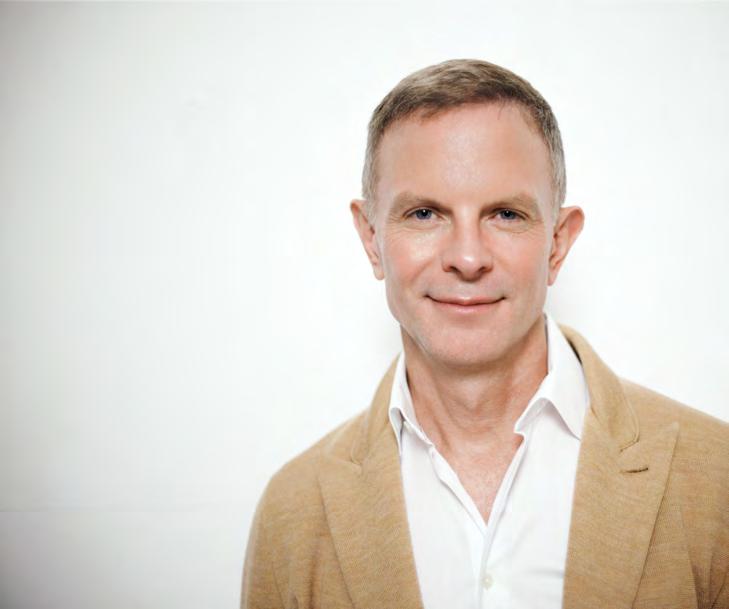
Welcome to the sixth edition of DAP Health magazine. Each time we publish, I am reminded that our story is not just about health care it is about people. It is about you, our patients, supporters, staff, and community who believe in a future where everyone is seen, heard, and cared for with dignity.
In these pages, you will find stories of courage, resilience, and transformation. From patients who trusted us during their most vulnerable moments, to clinicians who bring healing hands and open hearts, to donors who create brighter tomorrows through their generosity each story reflects the spirit of DAP Health.
This issue highlights the importance of advocacy, because health care is not just delivered in exam rooms. It is protected in boardrooms, at the ballot box, and in our collective voice for equity.
You’ll also meet new leaders helping to carry our mission forward, and discover how programs like pediatrics, sexual wellness, and mental health are expanding to meet the needs of our growing and diverse communities.
As we celebrate our progress from the Steve Chase Humanitarian Awards to the transformation of Revivals we remain deeply committed to our roots: compassionate care, community connection, and the belief that health equity is a human right.
Thank you for walking with us on this journey. Together, we are building a healthier, more just future.
In gratitude and partnership,
David Brinkman, MBA CEO, DAP Health
DAP HEALTH
1695 N. Sunrise Way
Palm Springs, CA 92262
8:00 a.m. – 5:00 p.m. | Monday – Friday 760.323.2118
PRESIDENT AND CEO
David Brinkman
CHIEF MARKETING OFFICER
Steven Henke
DIRECTOR OF MARKETING AND COMMUNICATIONS
Dustin Gruber
SENIOR COMMUNICATIONS
MANAGER AND EDITOR
Daniel Vaillancourt
ART DIRECTOR
Tes Schaff
PHOTOGRAPHERS
Trey Burnette, Brandon Harman, David A. Lee, Anna Grace Lynch, Demarcus O’Dell, George Peterson, Scott Rohlfs
WRITERS
June Allan Corrigan, Diane AndersonMinshall, Jacob Anderson-Minshall, Greg Archer, Staci Backauskas, Fabiola Berriozábal, Kent Black, Ellen Bluestein, Trey Burnette, Maggie Downs, Daniel Hirsch, Kay Kudukis, Jeffrey Norman, Victoria Pelletier, Amelia Rodriguez
BOARD OF DIRECTORS
Eve E. Fromberg Edelstein, Esq., Chair
Kevin Bass, Vice Chair
Fred Drewette, Treasurer
Mark Adams, Secretary
Patrick Jordan, Member-at-Large
BOARD MEMBERS
Carolyn Caldwell, Frank Figueroa, Ed.D., Bruce W. Finch, Jordan M. Hall, Scot Karp, Karyl E. Ketchum, Ph.D., Veronica Valenzuela Williams, MBA, MSN, PHN, RNC-OB, RN
ABOUT US
VISION: DAP Health envisions a world where every person achieves their full potential.
MISSION: DAP Health provides comprehensive health care and support services where all people are seen, heard, and affirmed.
COVER
Photo by Anna Grace Lynch
Creative Direction by Lucie Doughty
THIS PAGE
Photo by Demarcus O’Dell
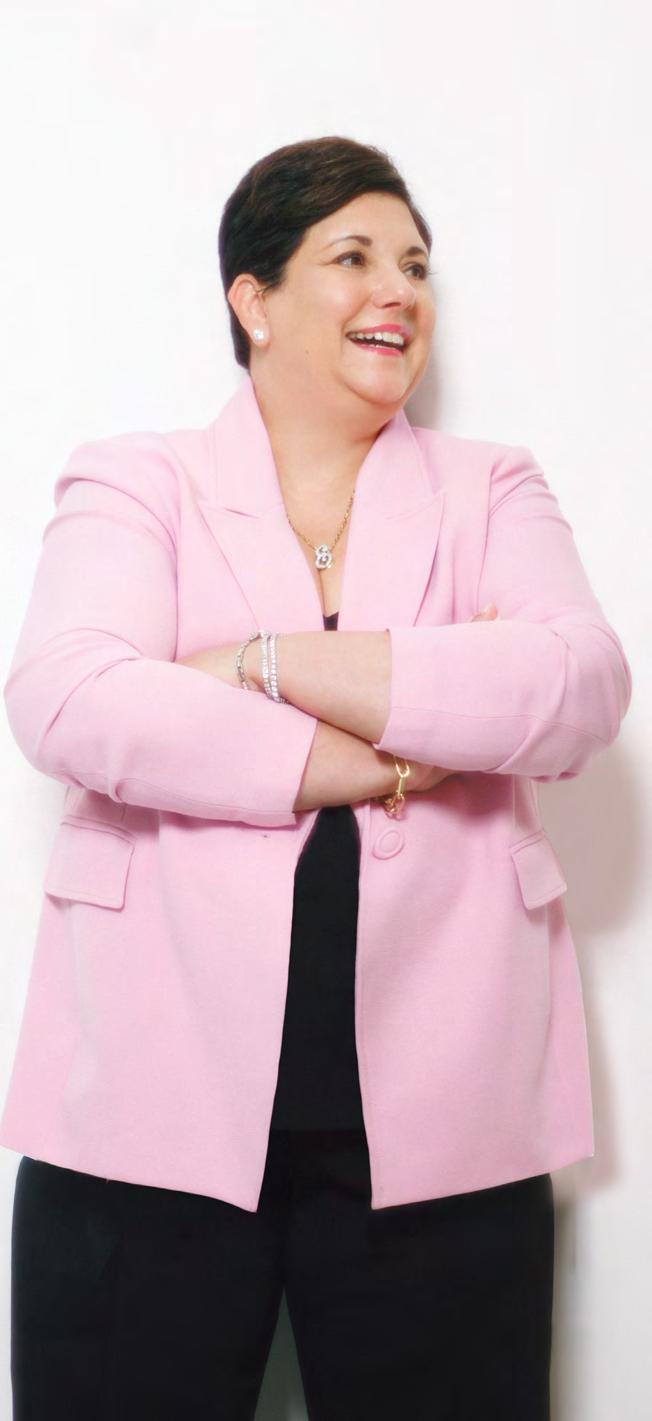
As longtime DAP Health Board Chair Patrick Jordan concludes his distinguished service, former Co-Vice Chair Eve Fromberg Edelstein, Esq., steps into the role with vision and resolve — supported by remaining Vice Chair Kevin Bass.
Words by Staci Backauskas • Photos by Demarcus O’Dell
When Eve Fromberg Edelstein, Esq., became the new chair of DAP Health’s board of directors last May, it wasn’t a changing of the guard. It was more a passing of the baton. “Changing of the guard sounds like things are going to be dramatically different,” says Kevin Bass, current vice chair. “The leadership style may change a little, but we all work in tandem and the basic principles of what we do remains the same.”
Fromberg Edelstein takes the reins from Patrick Jordan, who served as chair since 2020 and, along with DAP Health CEO David Brinkman, steered the organization not only through the COVID-19 pandemic, but also the acquisition of Borrego Health. “The bottom line is the buck stops with the board of directors,” says Jordan. “We are responsible for an organization that now impacts over 85,000 human lives.”
The strategic plan developed for 2025-2028 addresses how to continue providing the highest quality health care for current clients while adding bold goals, especially around health equity. “Our strategic plan takes everything we’ve learned, combines it with where we want to be, and memorializes it,” says Fromberg Edelstein, who lives in Rancho Mirage with her husband and son. She wants to lead the organization by ensuring the needs of marginalized populations beyond the HIV/AIDS community women, children, those with chronic health issues due to poverty or exposure to toxic environments are addressed.
Jordan wants to allay any concerns the HIV/AIDS community might have about DAP Health expanding its client base. “What people need to realize is that the HIV/AIDS crisis which isn’t over, by the way is what built DAP Health.
From it, the phoenix rises from the ashes and is able to care for and protect other vulnerable populations.”
Fromberg Edelstein points out that, from its inception, DAP Health was created to be a port in a storm, a place for people to go when they were in a health crisis. “That has continued,” she says. “First with AIDS, then COVID-19, mpox, and the opioid crisis.”
With managing new crises of political strife and funding issues around the sensitive populations that DAP Health serves, her objective is to elevate the organization. “From each one of these dilemmas, we learn something that we then take into our DNA that makes us more resilient and stable. That epitomizes DAP Health.”
Fromberg Edelstein is deeply appreciative to Jordan for his leadership and the work he’s done over the last five years. “Patrick’s intention when he started was probably to serve as a three-year chair, the lifespan of most board chairs,” she says. “But because of the merger and the current climate, Patrick stayed on. He has created continuity and stability because he’s such a great leader.”
Fromberg Edelstein is thrilled about the future. “We are in a growth and branding pattern,” she says. “Part of that is to broaden our understanding of the populations we serve and explore those microcultures to make sure we are talking to patients and clients in a way they understand and trust.”
In addition, she wants to help the organization expand its role as a national player, citing the size of DAP Health as one of the largest organizations of its kind. She knows implementing the plan will require a lot of energy and collaboration, but perceives the work as a calling.
“We’re looking at how we can be the most powerful voice for those we serve [while continuing] to see and treat them holistically,” she says. “How do we enlist those people in our society who feel like they’re not seen, heard, or affirmed? We want them to know you are seen. You are heard. And we will affirm you.”
“The bottom line is the buck stops with the board of directors. We are responsible for an organization that now impacts over 85,000 human lives.”
Jordan, who will remain on the board for a year to support the transition, believes it’s important to use this strategic plan as a map to grow. “You have to be like Gumby and bend and change with whatever shows up. Thankfully, we have a board of directors that is of a size that we’re able to make decisions quickly and move on those decisions just as quickly.”
Bass believes Fromberg Edelstein as both a female lawyer and a DAP Health board member for four years brings a unique perspective to the position. “We’re all equal,” he says. “But a woman’s approach and perspective are different from a man’s.”
In addition, her nonprofit and business experience, along with her understanding of the legal obligations necessary to keep the board healthy, are a winning combination. “Eve’s background and absolute passion for the work we do makes this an exciting time.”
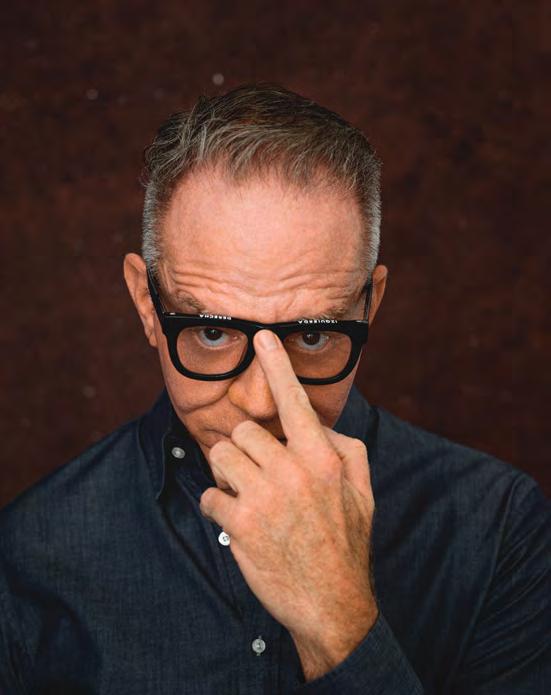

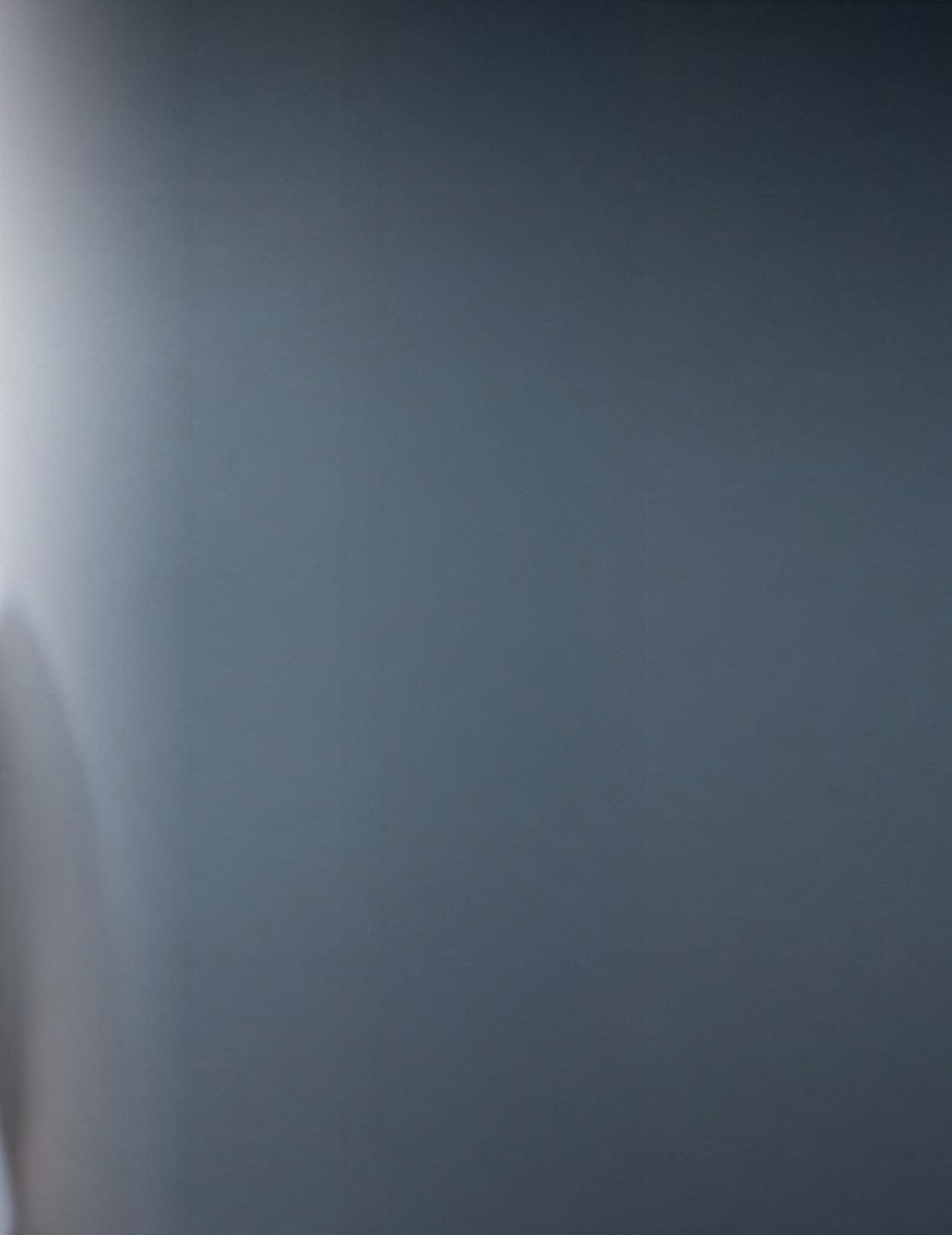
where to go when she hit rock bottom.
Words by Kay Kudukis • Photo by Demarcus O’Dell
As first days go, Maria Elias’ was the worst imaginable. “I was born dead,” she says matter-of-factly. “Upside down, feet first, the umbilical cord wrapped around my neck.”
The doctors in Oceanside gave her first breath, then gently laid her in her 16-year-old mother’s arms. And for all the nights before her brother and sister were born and all of the nights thereafter this was the only time she was safe.
“The majority of my youth, we were homeless,” she reveals. “So, if it wasn’t in the car, it was in a closet, in a garage, or in a tiny room. The soup kitchens were not always welcoming to [brown-skinned people], so we ate out of dumpsters a lot.” They got sick a lot, too, and went to the ER for care.
Although they were always on the move, Elias managed to go to school, where she was guaranteed a meal. By middle school she’d found the flute, a companion she’d have all the way through Desert Mirage High School in Thermal, where she was marching instructor, played in the jazz band and in the very elite wind ensemble, and in her senior year, was named first chair out of 20 flautists, an honor memorialized on a plaque.
Dad was gone a lot, so when Mom worked, the kids stayed at their paternal grandmother’s house, where their three uncles also resided. From the outside, this was community, “it takes a village” stuff. But on the inside, Elias attempted suicide multiple times. The last time was at age 17, with a belt that thankfully broke before it could fulfill its intended purpose. Instead of trying again, she decided to tell the truth the day she turned 18.
“I was raped,” she told the police. “From the time I was 3 until today.”
It wasn’t just one offender, and it wasn’t just her. She never knew about her brother and sister nor did they know about her until the day arrest warrants were issued for all three uncles. Two fled the country, but one is in jail now, “and hopefully for a much longer time,” Elias says, fire in her eyes.
Earning a degree in criminal justice at the now-shuttered ITT Technical Institute was her ambition, with the plan to join the military, and eventually, the CIA. “My goal was to be part of an elite group where nobody knew me,” she says. “I wanted to become anonymous.”
Instead, she caught the eye of another student. They fell in love, married, got pregnant, and at five months, there was a domestic abuse incident, and she went into early labor. The marriage was over. Her dreams of disappearing were dashed. She was 20 and responsible for a child when she herself had never known stability.
She got a very ironic job in loss prevention at Ross Dress For Less, and was surprised to receive baby supplies from
someone who wanted to stay anonymous. Months later, she learned her unknown benefactor was the brother of one of her ex-husband’s friends.
“He fell in love with my child before he loved me, and never asked for anything,” Elias says softly. They added another child to their little family, and have been going strong for seven years.
By 2022, Elias was in the process of getting her medical assistant certificate while frequently visiting the ER with complaints. It was the same year DAP Health’s Enhanced Care Management (ECM) program was initiated, and that’s how community health worker Veronica Vaca found Elias. The program identifies high utilizers of emergency rooms.
“We’re checking on those who have [been unhoused], those often hospitalized from the ER,” says Vaca. “Those are your heavy utilizers, [people] who are struggling with mental illnesses, or are at risk for requiring long-term institutional care. We do an outreach, see if they would be interested in the program.”
With great pride, Vaca calls Maria her first success story. Elias calls Vaca her angel, and while she absolutely deserves props, it was Elias who took all of those second chances she’d received over the years and made them mean something.
After years of being misdiagnosed, Elias learned through the program that she has deadly allergies that require her to carry an EpiPen. The pain she’d been having was caused by ovarian cysts. And unresolved trauma had gotten her brain stuck in fight-or-flight mode. She’s currently in therapy and on medication.
Soon, it was hard not to notice the new light in Elias’ eyes. She was asked to share her story at DAP Health’s Women of Impact Hour. Not a dry eye in the house. Vaca saw that Elias was qualified and had potential, which was reason enough to bring her to the attention of her supervisor. She truly went to bat for this deserving underdog.
Elias had been a community health worker for about a year now, and there are no regrets. “Talk about a go-getter,” exclaims Vaca. “Oh, my goodness. She has done some tremendous things for our patients.” Elias’ transformation and transition to employee was even acknowledged with a tribute video at DAP Health’s fundraising gala The Chase last March.
When she’s not busy working, Elias enjoys fishing with her kids, and she loves cooking. She can tell you what’s in a dish by taste and smell, and then tell you how she would make it better. Of course, she can. Making things better is what Maria Elias does. For herself, and others.
DAP Health’s Internal and Executive Communications Manager Elizabeth Peterson doesn’t just make sure every team member stays in the loop. She’s also ensured they had a real say in developing the organization’s new core values.
Words by Victoria Pelletier • Photo by George Peterson
“The single biggest problem in communication is the illusion that it has taken place.” Nobel Prize-winning Irish playwright George Bernard Shaw
From the living room to the boardroom, plans no matter how strategic often falter when communication misses the mark. Many leaders have experienced this firsthand: They have the right ideas and the right timing, but the message just doesn’t land. But when communication clicks, message and mission align to inspire, teach, and transform. DAP Health delivers on those moments and then some.
Internal and Executive Communications Manager Elizabeth Peterson plays a central role in that success story. Since stepping into her position in October 2023, she’s partnered closely with CEO David Brinkman and the executive leadership team to shape and deliver frequent and transparent internal comms reflecting DAP Health’s ideals, honoring its people, and keeping everyone moving and thinking in the same direction.
It was anything but simple. Overnight, this network of award-winning community health centers expanded from 250 to almost 1,000 employees across 25 fixed locations and eight mobile units from the Coachella Valley to the San Diego coast. While its mission remained the same, its people, systems, and cultures needed to align. And alignment doesn’t happen through policy, but through purposeful, human-centered communication and connection.
Deanna Drake, a director in the Strategy & Growth group at Facktor, the consulting firm that supported integration activities, recalls the emotional landscape that existed early in the transition. “It had been a really hard few years for many of the newly joined team members,” she says, “and I felt a strong need for robust, transparent, warm internal communications.”
Alongside Senior Communications Manager Daniel Vaillancourt, Drake worked quickly to lay a foundation: launching a weekly internal newsletter and coordinating a “roadshow” that brought Brinkman and other leaders into every clinic to meet, greet, listen, and learn.
These listening tours weren’t a symbolic gesture they represented a strategic move. “It helped put faces to names and showed that leadership was present, even in rural or remote sites,” says Drake. “That mattered a lot to people who were worried about being left behind.”
Knowing that once Drake exited, Vaillancourt would need backup, the pair set about finding the perfect internal comms expert. Enter Peterson, whose HR background and reputation for cultural resonance made her a powerful addition. She made the weekly team member newsletter dubbed “Inside DAP Health” bigger and better, accompanied Brinkman on all subsequent listening tours, instituted a wide array of additional internal comms tactics, and just generally made herself visible and available to all team members.
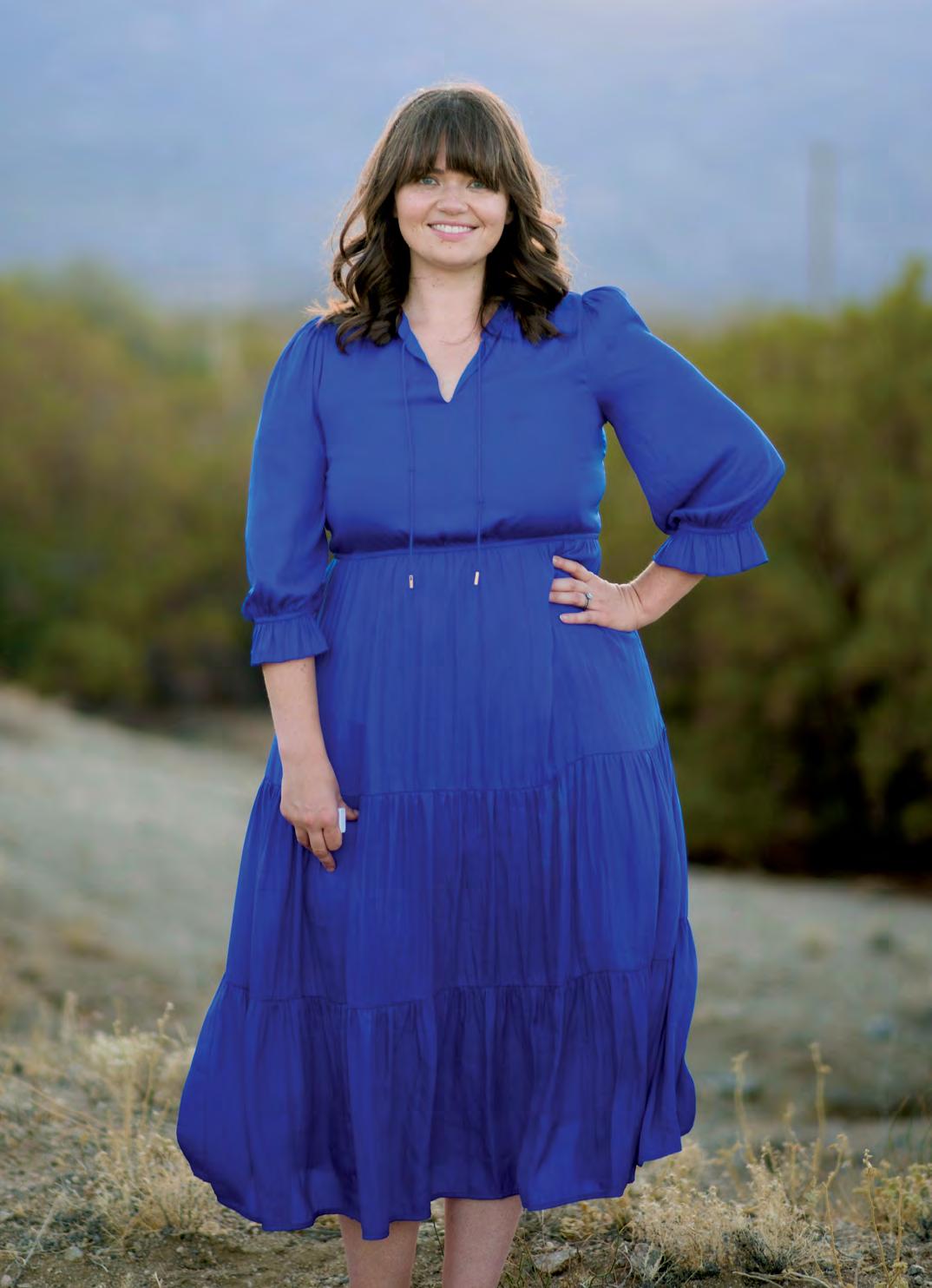
Proving her considerable worth in short order, she was given a gargantuan new task: to meet with every employee, face to face, and use those conversations to establish a set of shared core values that would become the scaffolding for culture, connection, and trust throughout the organization.
Core values are essential in uniting team members at a large health care organization like DAP Health because they provide a shared sense of purpose and a clear guide for decision-making across diverse roles and departments. In a fast-paced, mission-driven environment, they help ensure everyone from front desk staff and clinicians to admins and executives remains in sync around compassionate, equitable, and patient-centered care. They foster a sense of belonging, accountability, and trust, which is vital for both internal collaboration and the delivery of consistent, high-quality services to the diverse communities the agency serves.
“I take my role and responsibilities regarding my colleagues very seriously,” says Peterson. “I get so much satisfaction from going out in the field, serving as the eyes and ears of leadership, delivering messages, gathering feedback, and making sure my fellow employees know they’re being seen, heard, and affirmed.”
The proof is in Peterson’s pudding. “People are showing up with more pride and more energy,” she says. “They feel like they belong. They know where we’ve been. They understand where we’re going.”
As for the core values initiative, the entire team voted on them in late July of this year, and they’ve since been officially adopted. (Please see below.)
Here’s the part many organizations miss: Culture isn’t just “the vibe.” It’s the operating system. It drives performance, resilience, and innovation. And in moments of disruption or growth, it’s either your greatest asset or your biggest liability.
The sense of unity and belonging that permeates DAP Health these days didn’t happen by accident. It was designed through thoughtful internal communications strategies. And it’s being sustained through regular touchpoints, two-way dialogue, and a commitment to adapt and respond in real time.
If there’s a takeaway here, it’s that communication isn’t the last step. It’s the bridge between vision and execution. It’s how strategy becomes behavior. And it’s everyone’s job from the rank and file to the C-suite to carry it forward.
As voted on by all team members, they are:
• Empathy Wins
• Providing Health Care is my Superpower
• Our Words and Actions Align
• Positivity Promotes Possibility
advocacy
dental care
ending epidemics
equitable access
food assistance
harm reduction
health care
health equity
HIV care
housing
LGBTQ+ health
mental health
primary care
recovery
reproductive care
sexual health
social services
women’s health
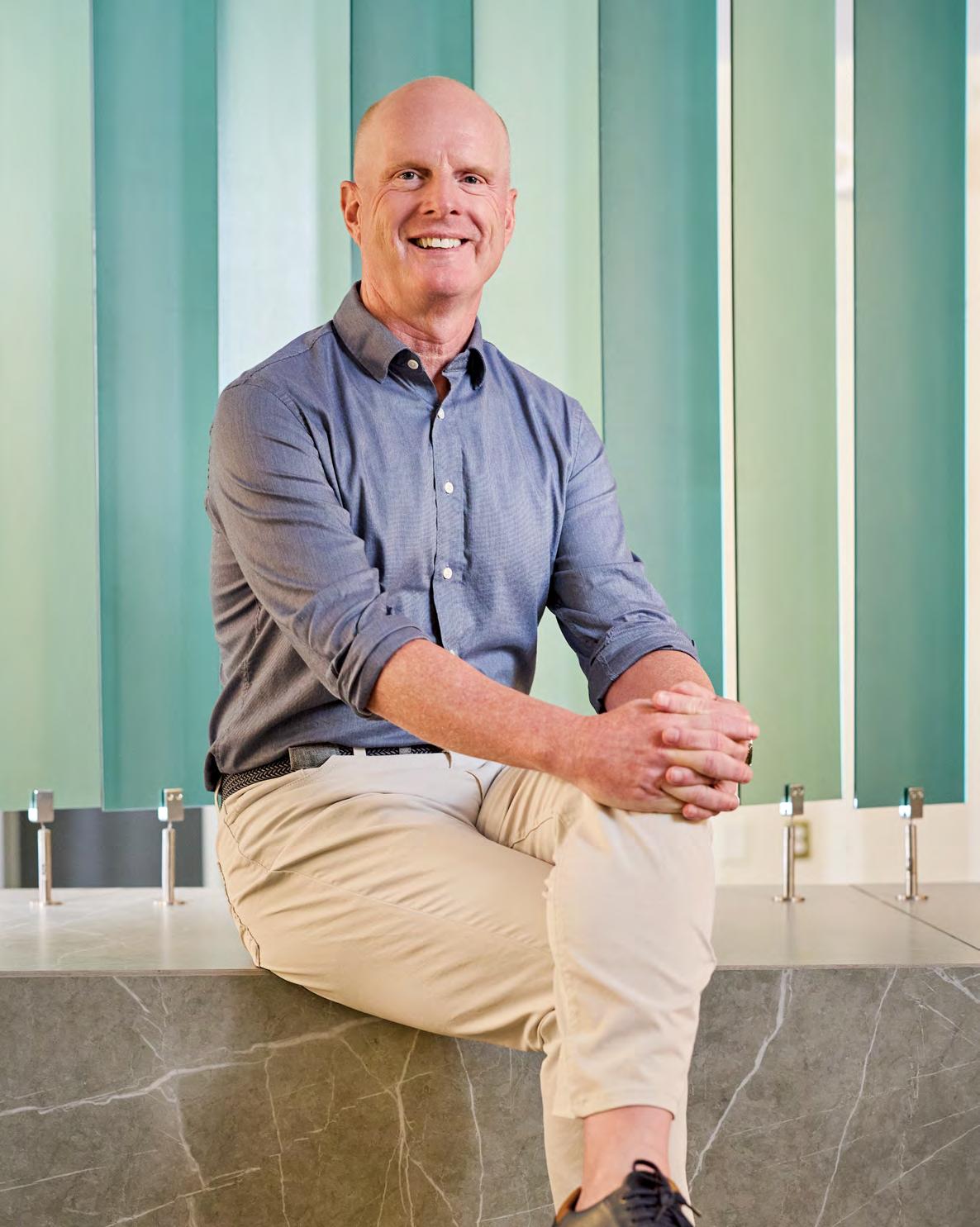
His dedication to raising money for health care nonprofits isn’t just a job. It’s deeply personal.
Words by Daniel Vaillancourt • Photo by Brandon Harman
Chris Kiser brings a potent blend of Midwestern integrity, personal purpose, and philanthropic vision to his new role as DAP Health’s chief philanthropy officer. A seasoned fundraiser with a heart rooted in health care and education, Kiser has spent his career channeling generosity into transformative community outcomes an approach he’s eager to elevate in the Coachella Valley.
From heartland roots to national impact
Born and raised in Muscatine, Iowa, Kiser grew up in a family deeply committed to education and athletics. The oldest of four children, he was shaped by the values of two public school teachers. His father was a high school educator and lifelong tennis, baseball, and basketball coach, while his mother worked as an elementary teacher when not raising three boys and one girl. His extended family included educators of all kinds, from kindergarten teachers to superintendents. “It was always just assumed every kid would attend college, which we all did,” Kiser says. “Everybody graduated.”
Long before that, however, Kiser’s first-ever job throughout sixth, seventh, and eighth grades was serving as a paperboy for The Des Moines Register. “That meant getting up at 5:30 a.m. rain or shine, snow or windchill and delivering 30odd newspapers in my neighborhood,” he recalls. “For dimes!” Midwestern mettle for sure.
Eventually, Kiser earned his bachelor’s degree in history from the University of Iowa in Iowa City, drawn to the school’s Big Ten athletic energy. Initially eyeing a career in teaching or sports administration, he later earned a master’s in educational administration in Illinois and entered the world of higher education fundraising first focusing on student-athlete scholarships, particularly for first-generation college students. “That work was incredibly meaningful,” he reflects. “To see somebody have an opportunity to gain an education through athletic ability.”
“As a history guy, I like the mission. I like the evolution, where the organization is heading.
To me, it’s incredibly forward-thinking. We honor the past, but we’re also thinking to the future.”
Kiser’s transition to health care philanthropy was both serendipitous and deeply personal. A recruitment call prompted him to consider applying his fundraising skills to medicine, a pivot he initially resisted. But the memory of his younger brother who lived for decades despite congenital chronic renal failure thanks to two kidney transplants and pioneering treatment changed his mind.
“He wasn’t supposed to live past 13,” Kiser says of his sibling, who died last year at age 55. “He had an incredible run. Seeing what modern medicine was able to accomplish this was at the hospitals and clinics of the University of Iowa, which was, and still is, a very cutting-edge hospital system; it’s the largest teaching hospital in the world really made an impact on me.”
His first health care development role was in Wyoming, followed by nearly a decade with Banner Health in Colorado. There, he learned how philanthropy could quickly move the needle in rural communities, helping build a cancer treatment center that kept patients from needing to travel out of state.
Kiser went on to serve as the head of the Barton Health Foundation in South Lake Tahoe. There, his proudest accomplishments were shaped by crisis response. During the COVID-19 pandemic, he shifted the foundation’s focus from hospital needs to direct community relief, raising more than $600,000 to address food insecurity for laid-off casino and service industry workers. When wildfires later devastated the area, he led another rapid-response campaign to support displaced families.
“That was all very hands-on, very grassroots, and had just a basic element of survival,” he says of the immensely rewarding experience.
new chapter
Kiser says the opportunity at DAP Health came at just the right moment professionally and personally. With his two sons recently graduated and independent, he and his wife, a middle school teacher, were ready for a new adventure. Frequent visitors to the Indian Wells BNP Paribas Open tennis tournament, the couple had long been enchanted by the Coachella Valley. After years of record snowfall in Tahoe, the desert sun was also an appealing change.
But what drew him to DAP Health was more than weather. “As a history guy, I like the mission,” he says. “I like the evolution, where the organization is heading. To me, it’s incredibly forward-thinking. We honor the past, but we’re also thinking to the future.”
As for his philosophy of philanthropy, Kiser says it’s benefactor directed. “Did their business school set them on a path to success? Did they have a loved one who survived cancer due to leading-edge oncology treatment? If you listen and do a little research, the potential donor will give you some clues as to where their interests lie.”
Kiser sees his role at DAP Health not as a fixer but as a maximizer “I’ve been in places where they didn’t have access to the wherewithal we have here,” he says. “I was brought into some of the foundations I ran because I had a formula to get them up and running and profitable. Here, everything’s already in place. We have an incredibly generous donor base.”
With such a solid foundation, his goal is to grow planned giving, major gifts, and endowments. He’s inspired by the passion, commitment, and engagement he’s already encountered in donors, board members, and staff.
“You can feel the belief, the loyalty,” he says. “I attended my first board meeting recently, and what I came away with and I’ve said it a hundred times since is the feeling that this was the most engaged board of directors I’ve ever witnessed. The interest, the way people present themselves. They’re here to advance health care in the community. It’s just a different feeling than I’ve ever experienced before.”
In a time of increasing pressure on health care funding, Kiser knows philanthropy is more important than ever. “Individuals can make a huge difference in our mission,” he says.
“Philanthropy plays a huge role in health care in general. But when you examine where we’ve been and where we envision going, it’s even more magnified.”
When he’s not working, Kiser is an avid tennis player, skier, mountain biker, cyclist, and fly-fisherman who recently experienced a salmon fishing trip to Alaska with one of his sons. At DAP Health, he’s casting new lines too ones he hopes will reel in a future where generosity keeps community care thriving.

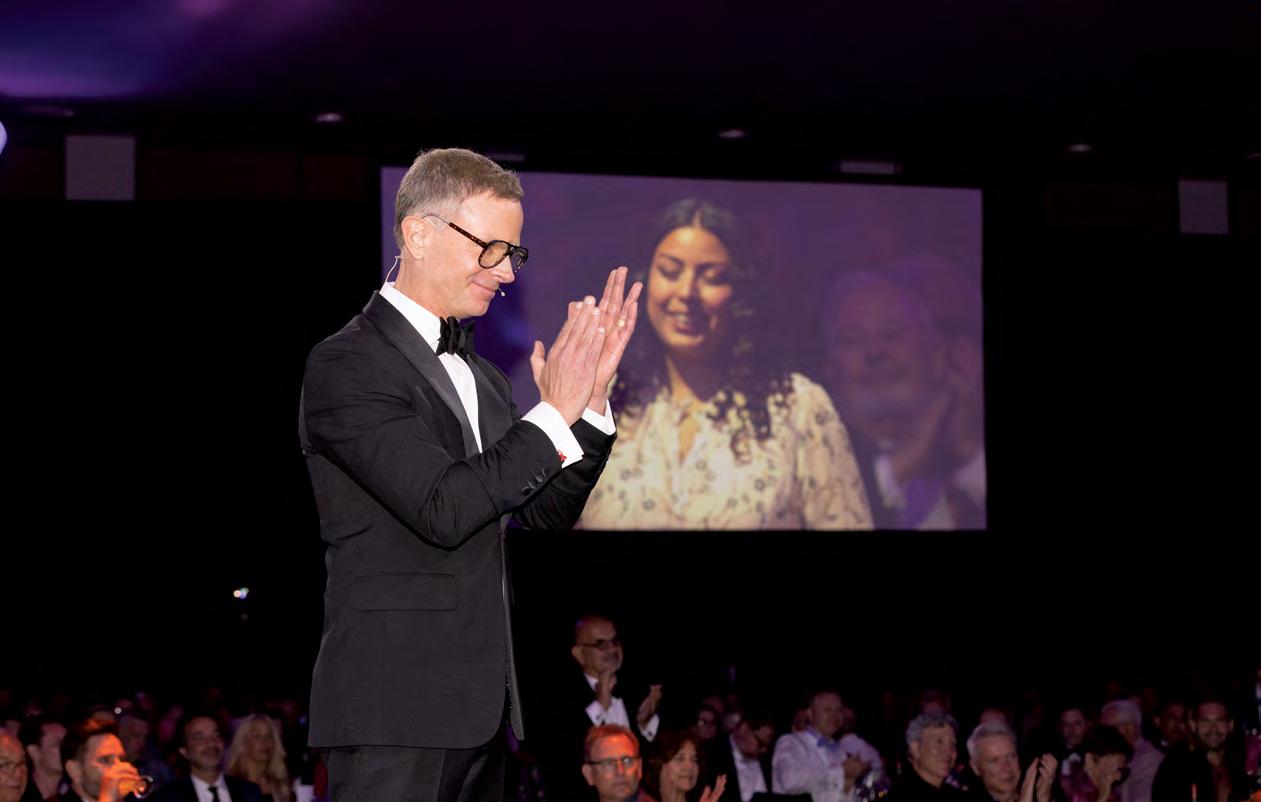
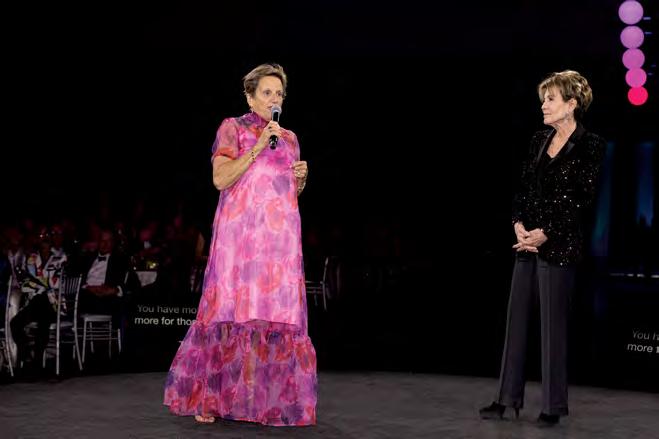

On the evening of Saturday, March 29, DAP Health hosted its 31st Annual Steve Chase Humanitarian Awards the organization’s largest annual fundraiser and a perennial highlight of the desert’s social season. Held at the Palm Springs Convention Center and presented by Desert Care Network, the evening was a vibrant celebration of community, compassion, and commitment to health equity.
The evening began on the pink carpet with a quintet of photographers capturing guests dressed to the nines in their creative formal. DAP Health Chief Marketing Officer Steven Henke served as special correspondent for NBC Palm Springs, joined by TV personality Chloe Carlson. The duo delivered live reports throughout the evening broadcast as attendees mingled over cocktails and hors d’oeuvres, exploring an expansive silent auction featuring everything from original art and designer apparel to luxury vacations and home décor treasures.
As guests entered the ballroom for dinner, the room’s dynamic décor drew audible admiration and inspired a sea of social media videos capturing the experience. A central stage pulsed with energy as DJ Clifton Weaver spun classic disco hits beneath a constellation of glowing kinetic orbs. After his set, the DJ booth ascended into the ceiling and the room dimmed, marking the transition to the evening’s program.
To thunderous applause, Gala Chair and DAP Health Board Vice Chair Kevin Bass welcomed the crowd with infectious energy, rallying them to celebrate and to dance.
Shifting to a more somber tone, he drew a poignant parallel between today’s challenges and the early days of the AIDS epidemic, quoting activist Dan Savage: “During the darkest days of the AIDS crisis, we buried our friends in the morning, we protested in the afternoon, and we danced all night. The dance kept us in the fight because it was
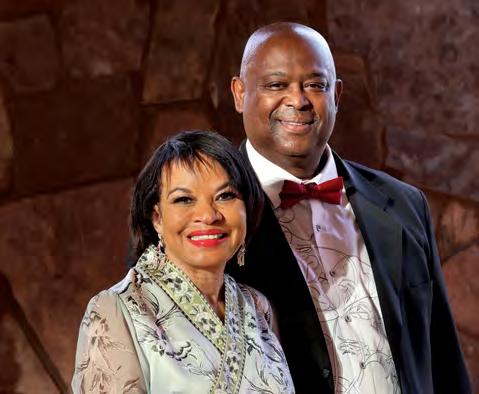
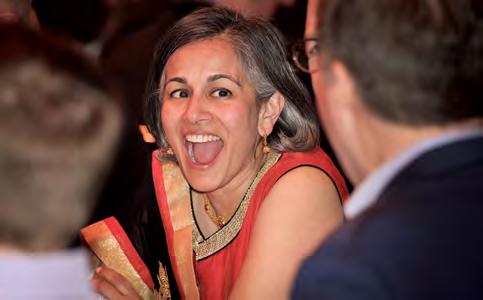
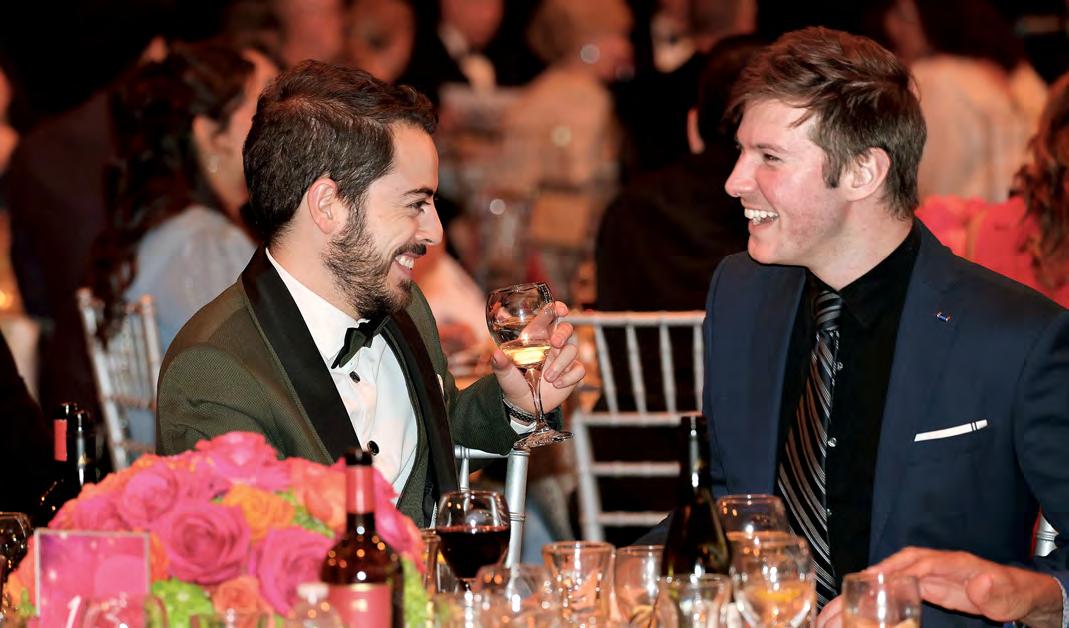
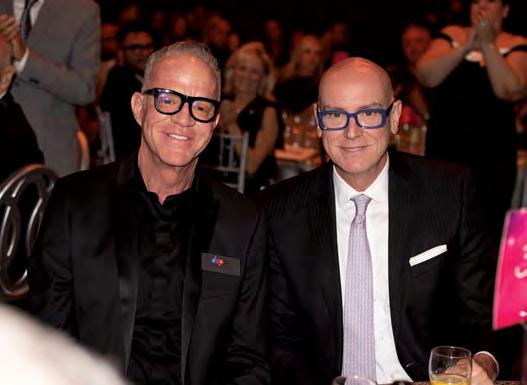



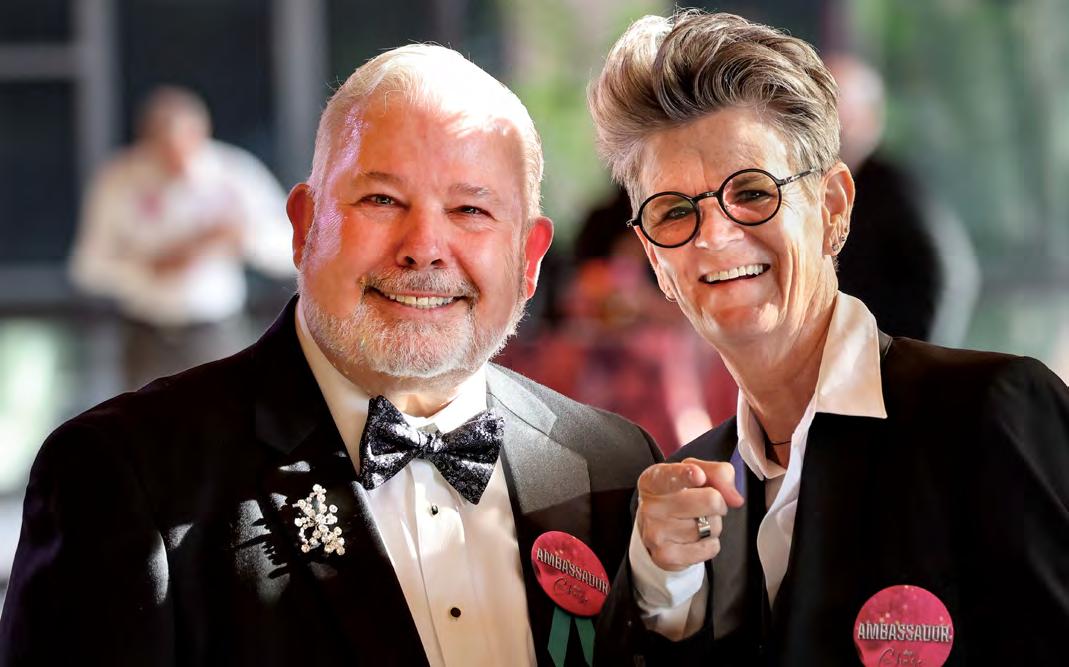
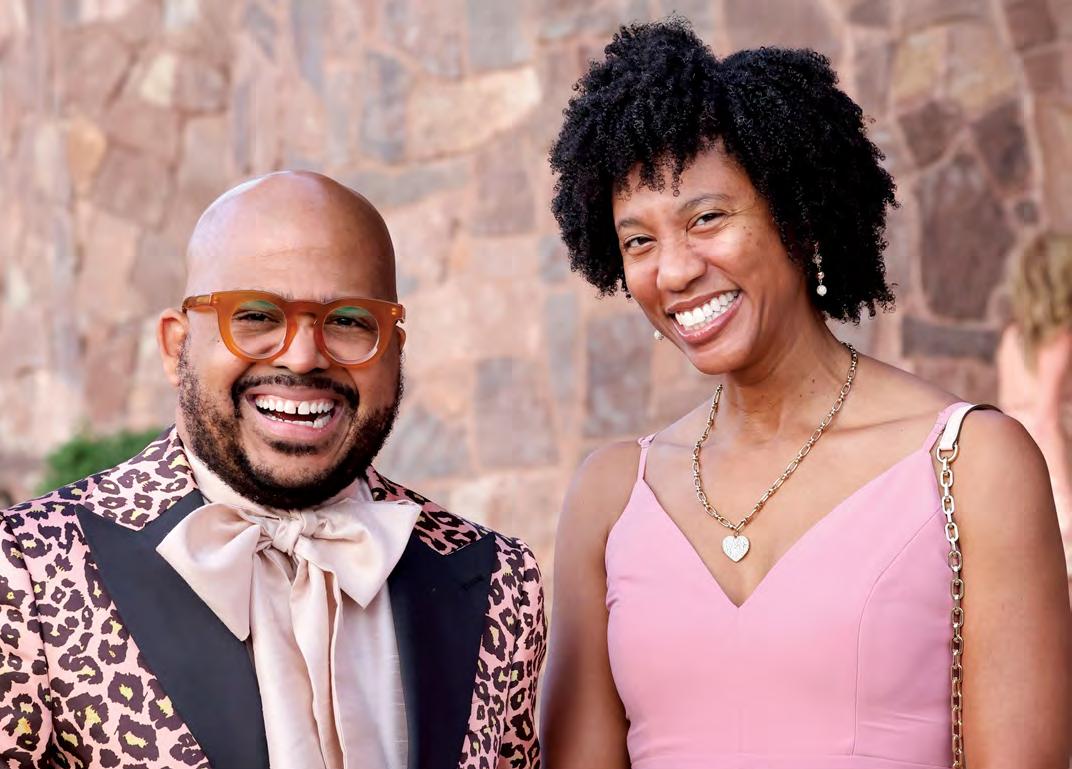

the dance we were fighting for. It didn’t look like we were going to win then, and we did. There are times it doesn’t feel like we will now … but we could. Keep fighting. Keep dancing.”
Honoring a humanitarian, changing lives
Following a tribute to event sponsors, guests enjoyed a dinner curated by Lynn and Brad Toles’ Savoury’s Catering. The evening then honored beloved local caterer and humanitarian Lynn Hammond with the Partners for Life Award, presented by two-time Steve Chase Humanitarian Award recipient Dr. Terri Ketover.
CEO David Brinkman then took to the stage to deliver one of his most stirring and impassioned speeches in his entire 18year reign at the helm of DAP Health. Drawing from personal memories of the AIDS crisis and today’s political threats to health care access, he urged the audience to recognize the urgency of the moment.
He then cited DAP Health’s impressive achievements over the past year:
315,000 medical visits conducted
8,514 new patients welcomed
30,000 free STI and HIV tests administered
728 lives saved through free Narcan distribution
His closing message was clear: “To care is to see someone’s humanity, when others refuse. To care is to reach out, when
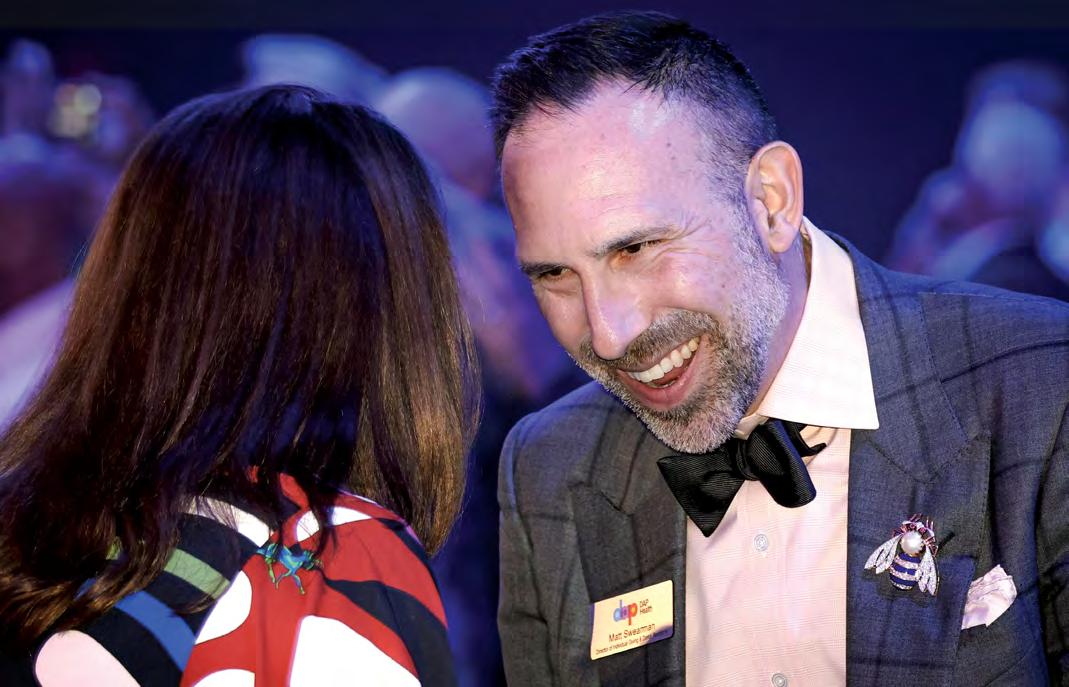
the world tells you to turn away. To care is to reject the idea that some lives matter more than others. Health care is caring. Because when you change someone’s health, you change their life.”
Fund the need: Raising hearts and hands
When returning auction host Dale Johannes expertly led the “Fund the Need” segment, donations poured in, beginning with a $100,000 gift from board member Mark Adams and his husband Tyler Wibstad, followed by superstar Barry Manilow and husband Garry Kief pledging the same wildly generous amount.
Board chair Patrick Jordan and his brother George gave $50,000 in memory of their sister, Clarissa Jordan Allen, and a $30,000 matching gift came from Steve Tobin, Johnny Krupa, and the Grace Helen Spearman Charitable Foundation.
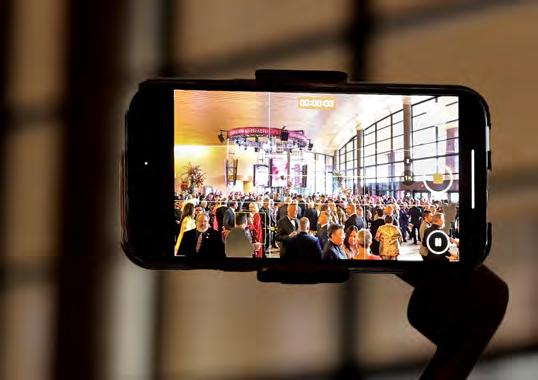
As the paddles kept being hoisted into the air, the tally kept swelling. Bass was sure to extend profound thanks to all donors, especially those moved to give in Hammond’s honor The night’s raffle concluded with one lucky winner taking home a dazzling 12-carat diamond bracelet worth $30,000 donated by Raju and Jaishri Mehta of El Paseo Jewelers.
Dancing the night away
The celebration peaked as headline act KC and The Sunshine Band lit up the ballroom with a high-energy 45-minute set of their greatest hits including “Shake Shake Shake (Shake Your Booty),” “That’s the Way (I Like It),” and “Get Down Tonight” spreading “instant happiness” through a crowd eager to dance the night away on a lighted dance floor right out of the classic film “Saturday Night Fever.”
The after-party, presented by Alan Kaminsky and featuring the return of DJ Clifton Weaver, kept spirits high until the final song was spun.
As the event drew to a close, Bass reminded guests to collect their auction prizes and mark their calendars for the 32nd Annual Steve Chase Humanitarian Awards, to be held in the same venue on Saturday, February 21, 2026.
With a staggering $2.3 million raised for the second year in a row, the evening was not just a celebration it was a call to action. A reminder that, in the face of adversity, the DAP Health community shows up, speaks out, and gives generously to protect and expand access to care.
Bravo, DAP Health. The fight continues as does the dance.
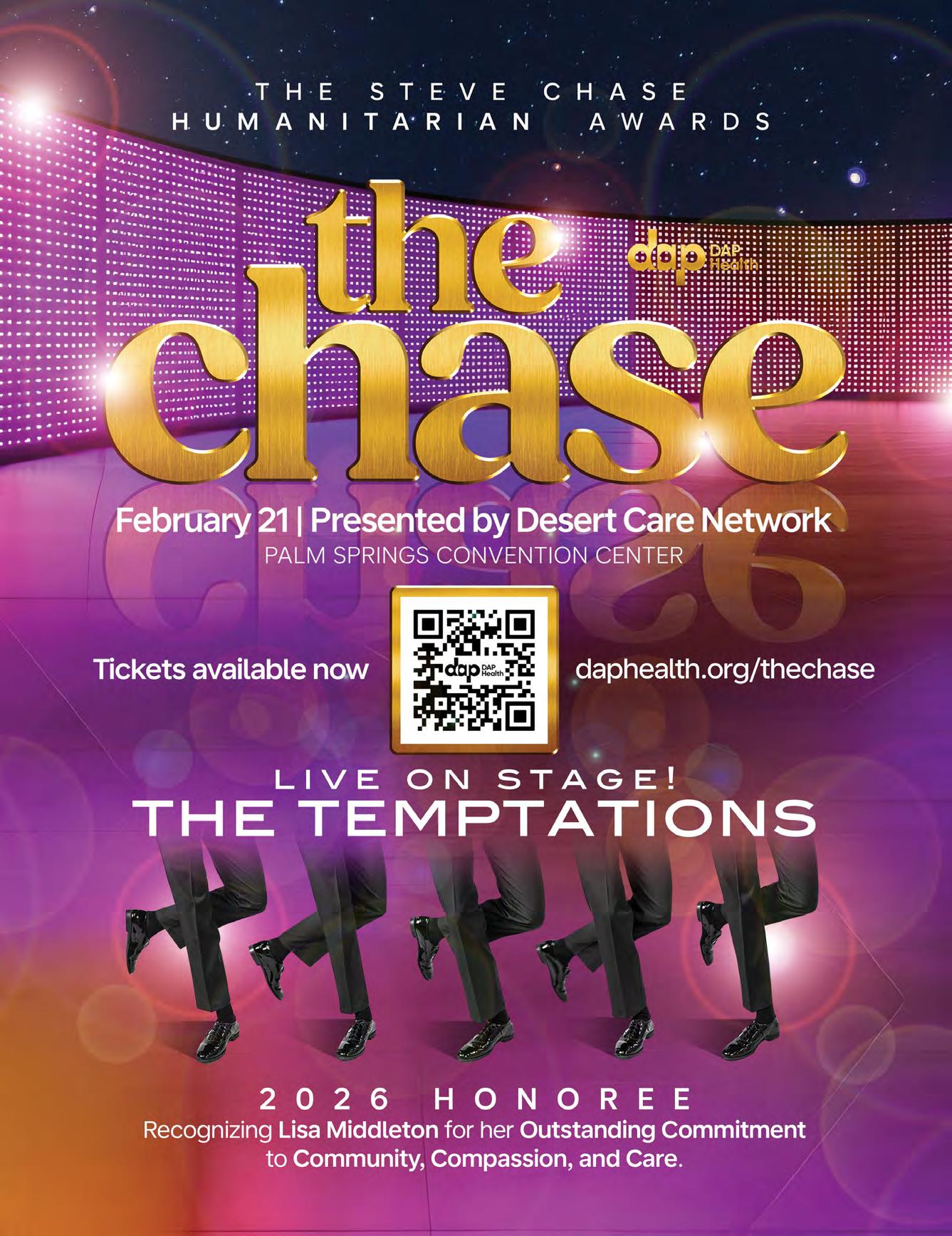
As threats to health care access mount, DAP Health builds on its four-decade legacy by stepping boldly into the policy arena — because survival once again depends on speaking out.
Words by Greg Archer

Advocacy is at the forefront of David Brinkman’s mind. Especially now, in an era rife with political divisiveness and extreme cuts to government funding. Yet DAP Health’s CEO is inspired to forge ahead with fresh resolve and a fiercer sense of purpose. His recent endeavors find him spearheading unique collaborations with the CEOs of 15 other LGBTQ+ and health care nonprofits in an effort to create stronger allegiances.
“In this time of growing anti-LGBTQ+ legislation and political division, unity among the LGBTQ+ leaders of our nation is both a moral and strategic necessity,” he says of the collaboration. “By working together, we amplify our voices, share our resources, and create more powerful, coordinated responses to the very significant threats facing our community. Right now, what’s at stake isn’t just rights or policies. It’s lives. Dignity The future of our movement is at stake.”
Other recent DAP Health advocacy efforts include joining several California health centers to support “United for Medicaid Access.” The May 14 “Day of Advocacy” was geared to protect health care access for millions of Californians.
Protecting and supporting transgender people also remains a key focus for the nonprofit. This year, DAP Health heralded life-affirming care for transgender and gender-diverse people, pushing back on a U.S. Department of Health and Human Services report that overlooked decades of clinical expertise.
2025 feels a lot like 1992
Brinkman’s own advocacy efforts stretch back to his college days, when he lived through “a time like this,” but on a statewide level. Back in the early 1990s, when he was an undergrad in Portland, the Oregon Citizens Alliance was acquiring signatures to put Measure 9 on November’s statewide ballot. The goal: to outlaw LGBTQ+ people.
The OCA’s efforts sparked something within Brinkman, and as his community responded to the “extreme hate,” he went on to lead his campus LGBTQ+ organization.
“That was 33 years ago,” he says. “That ‘hate’ is back now on a much larger and more threatening scale.”
Which makes DAP Health’s advocacy all the more vital today.
But to move forward, Brinkman is quick to look back to DAP Health’s decades-long commitment to advocacy, which stretches back more than 40 years to the organization’s early days, when a group of volunteers joined forces to create Desert AIDS Project (as DAP Health was originally known).
The organization would go on to become a leader in LGBTQ+ advocacy from promoting health equity and safeguarding Medi-Cal to championing the fight against HIV/AIDS, and so much more.

“Since the earliest days of the HIV/AIDS crisis in the mid1980s, the organization has been a beacon of hope and support,” Brinkman proudly shares. “We began by offering care to those who were stigmatized or abandoned, and became the first safe haven in the Coachella Valley. Our work was built on community, compassion, access to medical care, and fearless advocacy.”
Today, that foundation is evolving with the same unwavering commitment to meet new health challenges and strikes against human rights. “We’re seeing similar attacks today on people who are transgender and nonbinary,” Brinkman says. “Governments and legislators are intentionally trying to strip them of their human and civil rights. But we continue to be led by the voices of our diverse communities. We’ve always been shaped by the people we serve.”
He credits the voices of women, people of color, immigrants documented and undocumented the LGBTQ+ community, and others. “They have all led the way in designing care that truly meets their needs, and our leadership continues to reflect the belief that health care must be informed by lived experience, not just clinical expertise.
“This is how we ensure every patient feels heard and affirmed, and those are core to our values. Today, we have partner organizations reaching out to us, asking to transfer
patients to us because these organizations are ending services to people who are under attack.”
Brinkman believes the current environment will advance DAP Health’s care 20 years in terms of ensuring equity and social justice are part of everything the organization does.
“Now, we ask ourselves: ‘How will we get everybody through it?’” A bright spot on the horizon, which, in turn, will affect DAP Health’s advocacy efforts, is the development of a 501(c)(4). “We established the legal entity to expand our advocacy work. We’ve been partnering with other advocacy organizations and (c)(4)s around the nation, which has allowed us to leverage the history of other groups who’ve been doing this work at a (c)(4) level longer.”
In turn, DAP Health can use these connections and resources to respond to the growing unmet needs of people under attack. “Right now, our advocacy work through our partners is very much on the forefront,” Brinkman says, more than hopeful about the road ahead. “Our movement has always been to lift up all people, and that can be seen as a threat to others. At the end of the day, I personally believe all people deserve access to equitable health care, just as our founders did for gay men living with HIV in 1984. That belief inspires me every day to continue working hard and partnering with my allies who share those same values. That is unchanged and unwavering.”
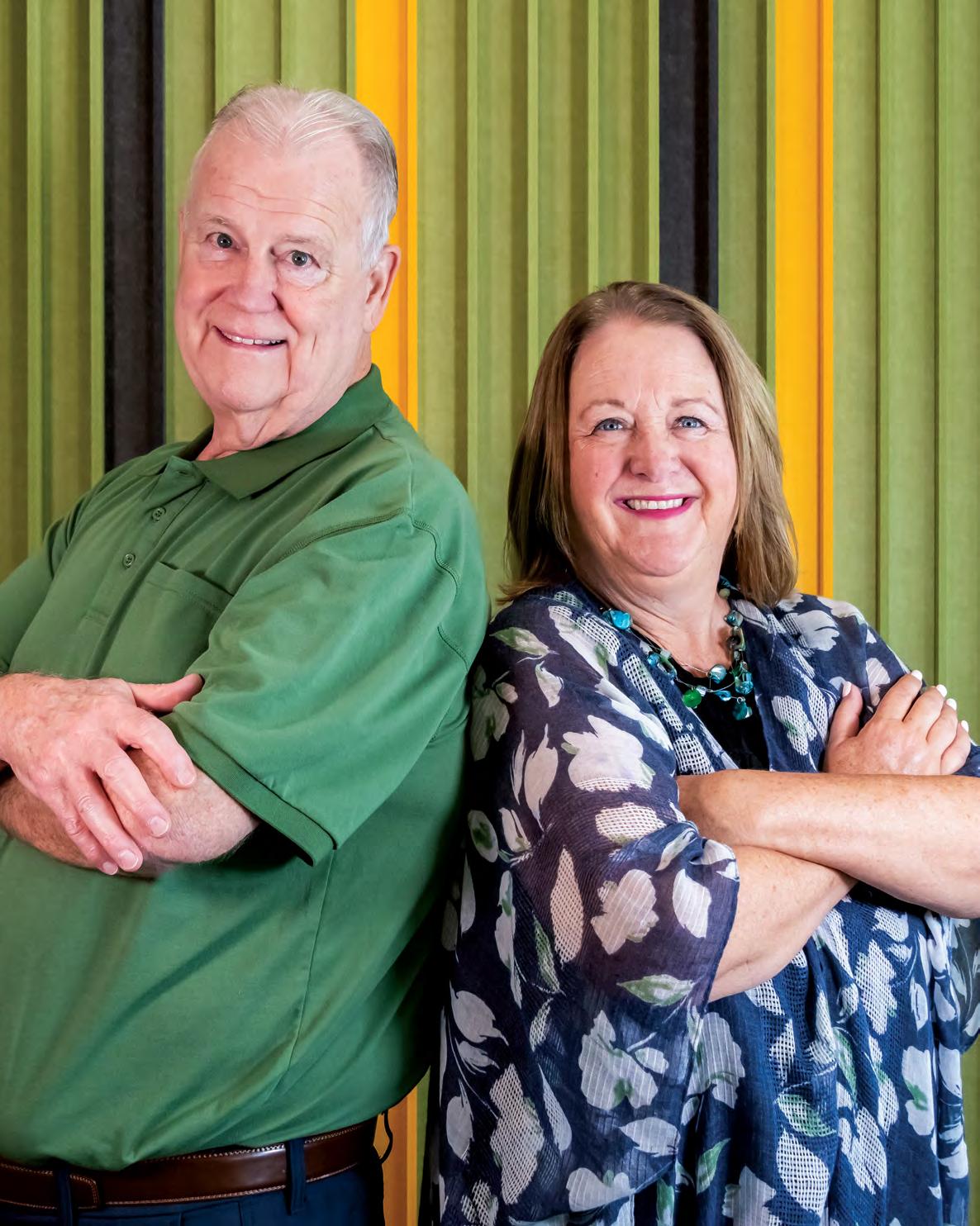
Volunteer archivists at DAP Health’s headquarters in Palm Springs are collecting, preserving, and organizing artifacts from the past. And they could use your help.
Words by Jeffrey Norman • Photo by David A. Lee
It’s sometimes hard to believe everyone didn’t always have a powerful camera and recording device in their back pocket. But that was the reality back in 1984, when DAP Health was founded as Desert AIDS Project in Palm Springs. That reality has made it challenging to unearth photos and documents related to the nonprofit’s history. But two valiant volunteers are giving it their best shot.
The lead volunteer archivist is Sam Bergstrom. He lived in Cathedral City back in the mid-’80s, and had a demanding job that left no time for volunteer work. “DAP was in its early stages then, and I desperately wanted to get involved,” he remembers. “I have a solid memory of what that time was like, how horrible it was, and the number of people I knew personally who are no longer with us. Through this [archival] project, I’m learning how remarkable it was that the founders of DAP were able to build an organization against all odds and make such a profound difference in the community.”
Bergstrom eventually retired from administration in the long-term care industry in 2012, moved to Maine, where he operated a small blueberry farm, and returned to the desert in 2020. “I knew I needed to find volunteer work, and DAP was a logical direction for me.” He’s worked on the archive project for a little over two years, and can also be found welcoming people at the front desk at DAP Health Sunrise, or volunteering for other projects, including Palm Springs Pride and the annual fundraising gala The Chase.
Dr. Diane Barnes has been volunteering with DAP Health since 2018. A former history professor, she still works full-time from home in education technology. At first, she volunteered at The Chase (with her husband) and Partners for Life gatherings. When the archive project was established, DAP Health volunteer coordinators knew Barnes was a historian, and asked if she’d help. She knew it would be a perfect fit.
The archive project had its genesis during a conversation between DAP Health CEO David Brinkman and beloved DAP co-founder George Sonsel. They both believed an archive of the agency’s history was imperative and long overdue. Their goal was to ensure the organization’s people, principles, and perseverance would never be forgotten.
Barnes and Bergstrom worked closely with Sonsel right up until his death last April. When they first started collaborating, the co-founder was still in contact with original DAP treasurer Ron Christenson, who died in 2024.
“Ron was an accountant who saved everything,” says Bergstrom. “So, we had boxes and boxes to sort through. We found minutes, agendas, and by-laws from early board meetings. A lot of DAP’s history was right there. We knew other people must have things to add to our collection. We now have a treasure trove of old photographs, newspaper clippings, CDs, programs from past events, and much more. We’re in the process of reviewing, uploading, cataloging, and creating a place online for all of this information. Eventually, people will be able to go to the DAP Health website and click on a link that will lead them to this enormous body of history.”
“The archives are intended to serve multiple purposes,” adds Barnes. “Be it for future staff who want to study the early days of DAP, researchers interested in the unlikely story of how an AIDS organization was started in the ’80s, or even for people interested in celebrity philanthropy in the desert. We have countless photos of stars who attended DAP events over the years. There are so many reasons why this project is important, and will be meaningful for years to come.”
Right now, the archives project is something of a bestkept secret, even within the organization. “We know there are people on staff and in the community who have DAP keepsakes and mementos from past meetings, events, galas, advertising, invitations, programs, and more,” says Bergstrom. “There is a huge opportunity for people to help DAP Health preserve its history.”
Barnes says she can’t wait to retire so she can do even more. “DAP Health is such a gem in the community,” she says. “Especially since its expansion into the larger field of community health. This is an agency that is doing so much good for a lot of people. If anyone has anything they think may be of historic value and is important to include in the archives, they should contact DAP Health’s Grants department, which will connect them to us. We would be very grateful.”
Just as DAP Health is grateful to Barnes and Bergstrom for their hard work and dedication. So do them a solid and check to see if you have something meaningful to donate to this important initiative. It’ll be far more valuable as part of the living legacy of the DAP Health archives than it is collecting dust in your junk drawer or garage, or at the back of your closet.
To view the current DAP Health archives online, please visit DAPArchive.omeka.net.



In remote but beautiful Borrego Springs, DAP Health provides residents with medical care, dentistry, and pharmacy services.
Words by Maggie Downs
At night, the sky in Borrego Springs turns cathedral-dark. Stars emerge before the air even cools, one pinprick of light after another, until the black above seems porous with constellations.
Located 88 miles northeast of San Diego, and 90 miles southwest of Palm Springs, Borrego Springs is a designated dark sky community. There aren’t any traffic lights here. No fast food, no big box stores. Cell service can be spotty.
And yet, this special place in the middle of nowhere manages to be home to a vibrant local art scene, where creativity is as much a part of the landscape as the desert itself, reflected in public sculptures, community exhibits, and its residents’ quiet reverence for supreme beauty.
The isolation in Borrego Springs is real, but so are the bonds between people.

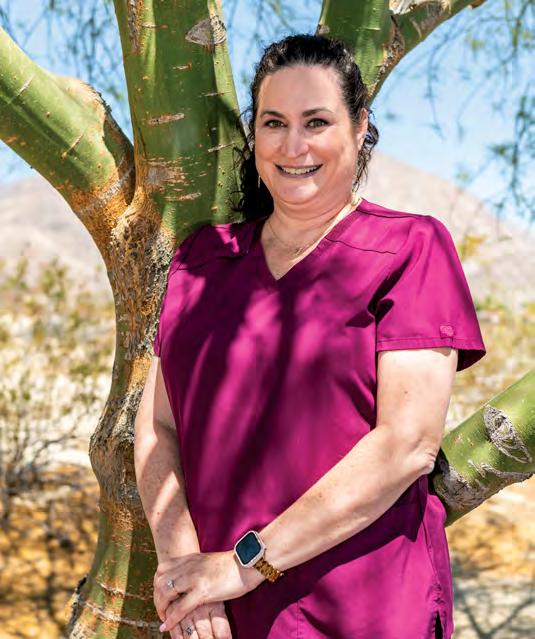
Angela Spieckerman came here decades ago in search of something simpler a place where her kids could grow up slow and steady. Over the years, the quiet turned into home. “I love the night skies,” she says. “You can’t get that in the city.”
Spieckerman works the front desk at Woolcott Dental, a tidy clinic on a flat stretch of town where the desert opens wide. She initially came to the office as a patient. Then she learned Spanish to work there, serving the community. Now, she is fluent enough to guide patients through paperwork and address concerns. “They help me learn,” she says. “We laugh together.”
Like many here, Spieckerman isn’t the only one with deep roots in Borrego Springs. Walk into Borrego Medical Center, Woolcott Dental, or Borrego Pharmacy and you’ll meet staff who have been here for decades. Who raised children here. Who’ve watched the town shrink in summer and swell in winter.
People like Paty Torres, who was born and raised here. She went to school locally, then entered the workforce housekeeping, banking, working at a hotel before becoming a registered medical assistant at the medical center. Off the clock, she owns and helps manage Torres Desert Nursery on Palm Canyon Drive, where native shrubs and drought-tough cactuses bloom quietly in the heat.
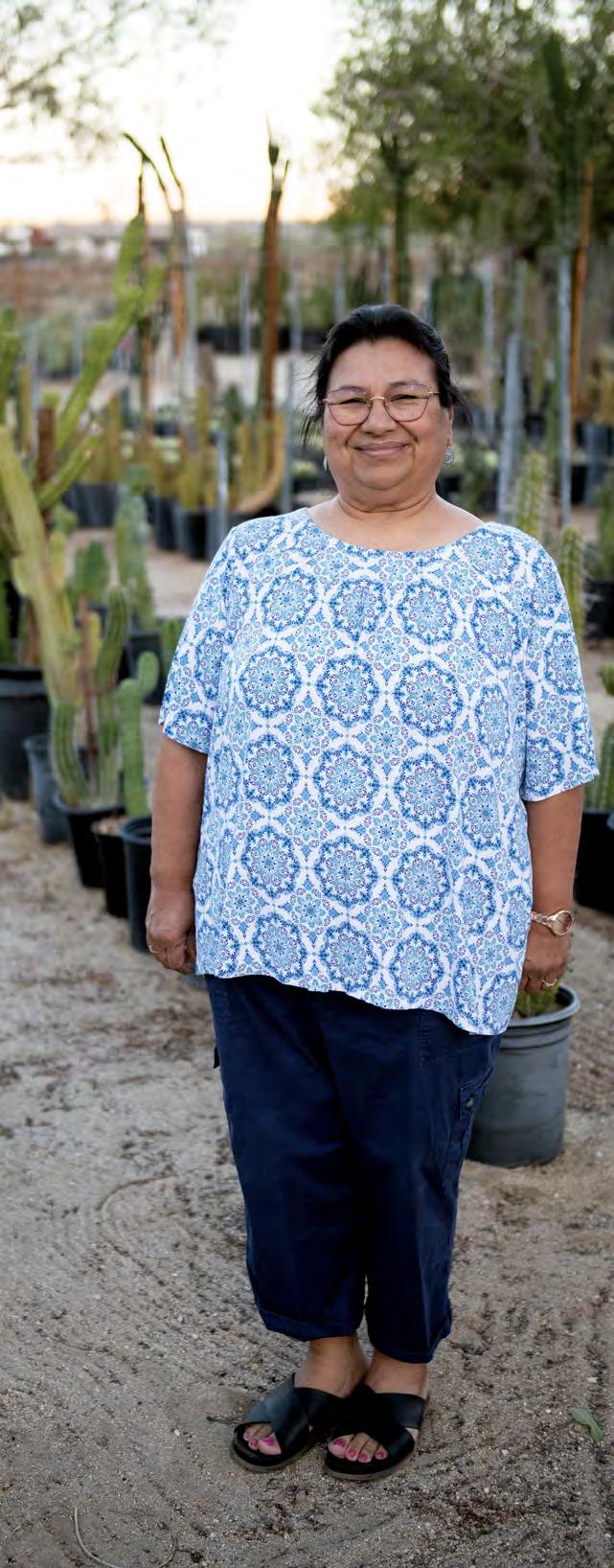

“It’s a big responsibility to work in a small place like this,” she says. “You get stopped in the aisles with questions about someone’s meds or referrals or labs. And sometimes you want to say, ‘I’m not wearing that hat right now,’ but you also know these are your people.”
Borrego Springs is a town that nurtures its own. But a few years ago, the fate of its health clinics was up in the air. A public health care scandal had left Borrego Health, which operated the sites, in freefall. For a moment, the future of care in this town of fewer than 3,000 people looked grim.
Founded in the crucible of the AIDS crisis, DAP Health is no stranger to seeing a need and responding with humanity. The Palm Springsbased nonprofit took over Borrego Health in August 2023, acquiring more than two dozen sites across Southern California.
“This was never just a transaction for us. It was a mission,” says DAP Health CEO David Brinkman. “Our promise to Borrego is to provide excellent, compassionate, and judgment-free care to the community.”
That meant keeping the doors open but also building something better: a health care model rooted in trust, staffed by local professionals, and shaped to the rhythms of desert life.
Cyndi Bainbridge, LVN, clinic administrator at the medical center, sees the shift up close every day.
“Any type of a merger is difficult, but I feel like DAP
Health has made this as easy and seamless as they possibly could,” she says. “They went out of their way to work with a very broken company at a time when so many of us were just terribly traumatized from coming out of COVID-19. There was an immediate sense of compassion, and it made a big difference in morale from the boots on the ground all the way to the leadership.”
Since stepping in, DAP Health has also ensured consistent medical, dental, and behavioral health care in Borrego Springs, extending its impact far beyond clinic walls. Outreach teams have provided free dental screenings (17), school-required vaccines (36), and protective fluoride varnish for children (54), and distributed free backpacks (37) to local students. They’ve also conducted blood pressure checks (24) and glucose screenings (20), bringing preventive care directly to community members.
DAP Health has invested not only in care delivery, but also in creating welcoming, efficient spaces for patients. The interiors of both Borrego Pharmacy and Woolcott Dental have been remodeled with new cabinetry, fresh paint, improved lighting, and upgraded HVAC systems. The pharmacy now also features a dedicated immunization space, giving patients greater privacy and comfort.
“In just the last couple of months, we’ve also helped more than 70 people in Borrego Springs enroll in health coverage,” says Brinkman. “That means dozens of families now have access to medical, dental, and behavioral health services. And that’s huge—because access to health care saves lives. For those who don’t qualify, our clinics are still here for them. No one is ever turned away.”
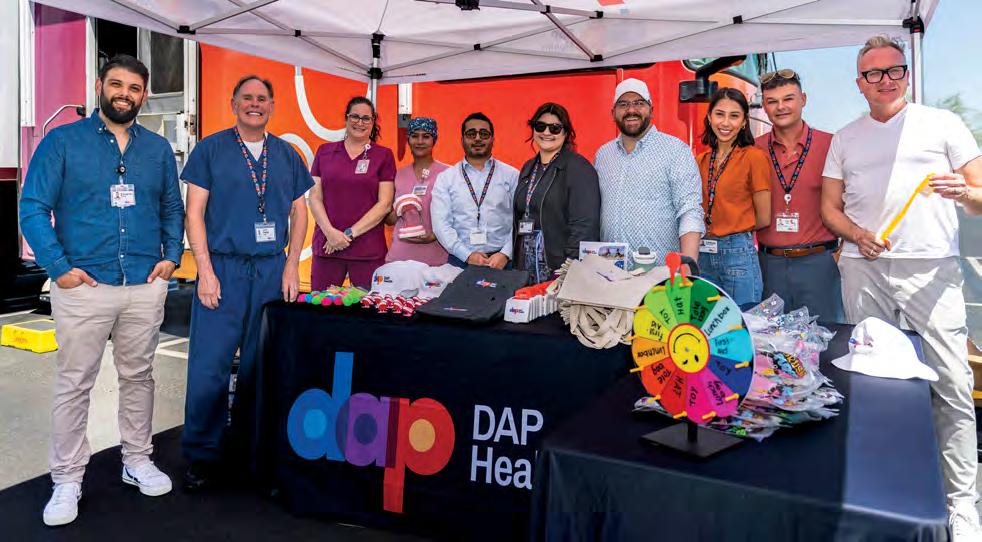
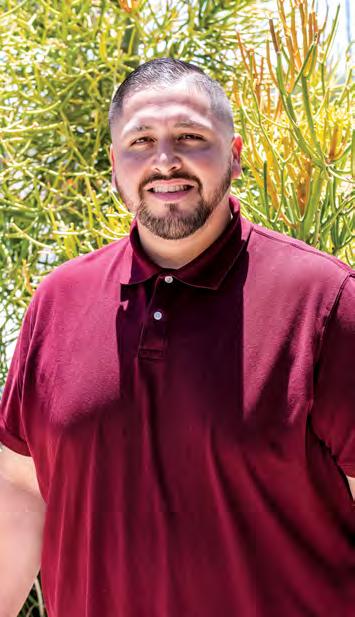
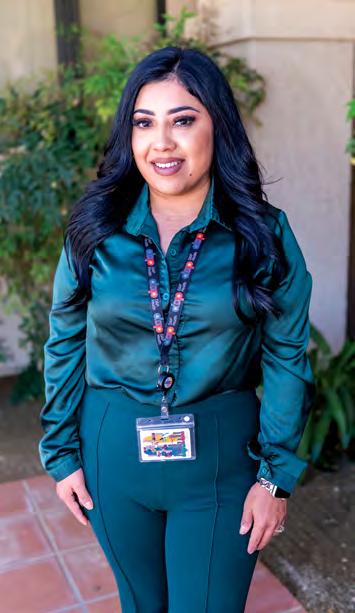
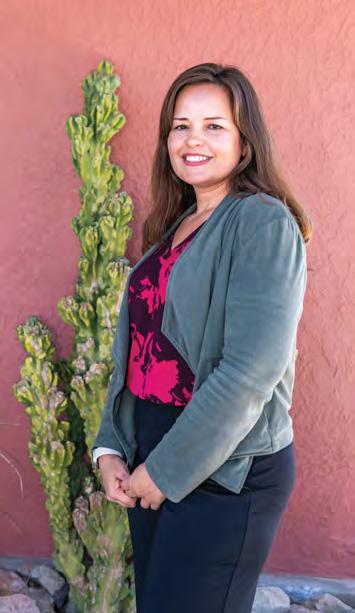
The model works because it isn’t imported. It’s grown. More than 90% of the original staff stayed through the transition. Many, like Torres, are hometown people who never left. “There’s no such thing as anonymity here,” she says. “So, when someone comes into the clinic, it matters that we treat them right. It matters deeply.”
That trust is cultivated through care and communication. “We keep an eye on folks,” Torres adds proudly. “If someone hasn’t picked up their meds or answered a call, we’ll check in. And if they still don’t answer, we call the sheriff for a wellness check.”
It’s the kind of community medicine that can’t be taught in school. It’s lived. “When your employees are members of the same community as your patients, cultural competence is baked in,” Brinkman says. “They grew up here, went to school here, and now fulfill their commitment to care for their neighbors. That leads to a level of compassion that’s hard to train.”
At the pharmacy the town’s only one; the closest competitor is 40 miles away pharmacist Lisa Marquez fills prescriptions with a quiet ease. She drives in daily from La Quinta, but she’s starting to think about moving closer. “It’s peaceful,” she says. “You drive through the desert and you feel small in a good way.”
She likes the scale of things here. The closeness. A few weeks ago, a patient had a reaction to a new medication. Because the clinic is just down the road and the team is tight-knit, Marquez was able to speak to the doctor directly and adjust the prescription before the weekend hit. “That’s rare in most systems,” she says. “Here, it’s normal.”
Still challenges remain. The remoteness that provides Borrego Springs its beauty also makes recruitment, resupply, and renovation more complicated. But DAP Health is in it for the long haul. “We’re not going anywhere,” Brinkman affirms. “We’re investing in better infrastructure, upgrading equipment, and expanding capacity. We’re here to stay.”
Bainbridge maintains that long-term commitment is critical. “I see us as an essential community partner, and we want to be there to support the community’s needs,” she says. “Previously [under Borrego Health], we did fail Borrego Springs terribly We weren’t very visible, and it was a challenge to get patients the care they needed. But David [Brinkman] is very focused on using this opportunity to help the community, because that’s what community health centers are for. We’re safety nets, and we want to take care of everyone, especially those who have [fewer] options and resources.”
There’s a line Brinkman returns to often: health care is a human right. But in Borrego Springs, that right looks a little different. It’s not just about policy or funding or outcomes. It’s that personal connection.
It’s Spieckerman greeting patients by name. It’s Marquez’s drive across the desert. It’s a clinic that knows the rhythms of its own town, the silence of the sky, the heat of August, the feel of the air when it finally rains.
Borrego Springs isn’t a place you pass through. It’s a place you choose. And the people keeping each other well here have made that choice again and again.
“This place,” Spieckerman says, her voice trailing off toward the mountains in the distance. “It’s not for everyone. But we love it. It’s home.”
by
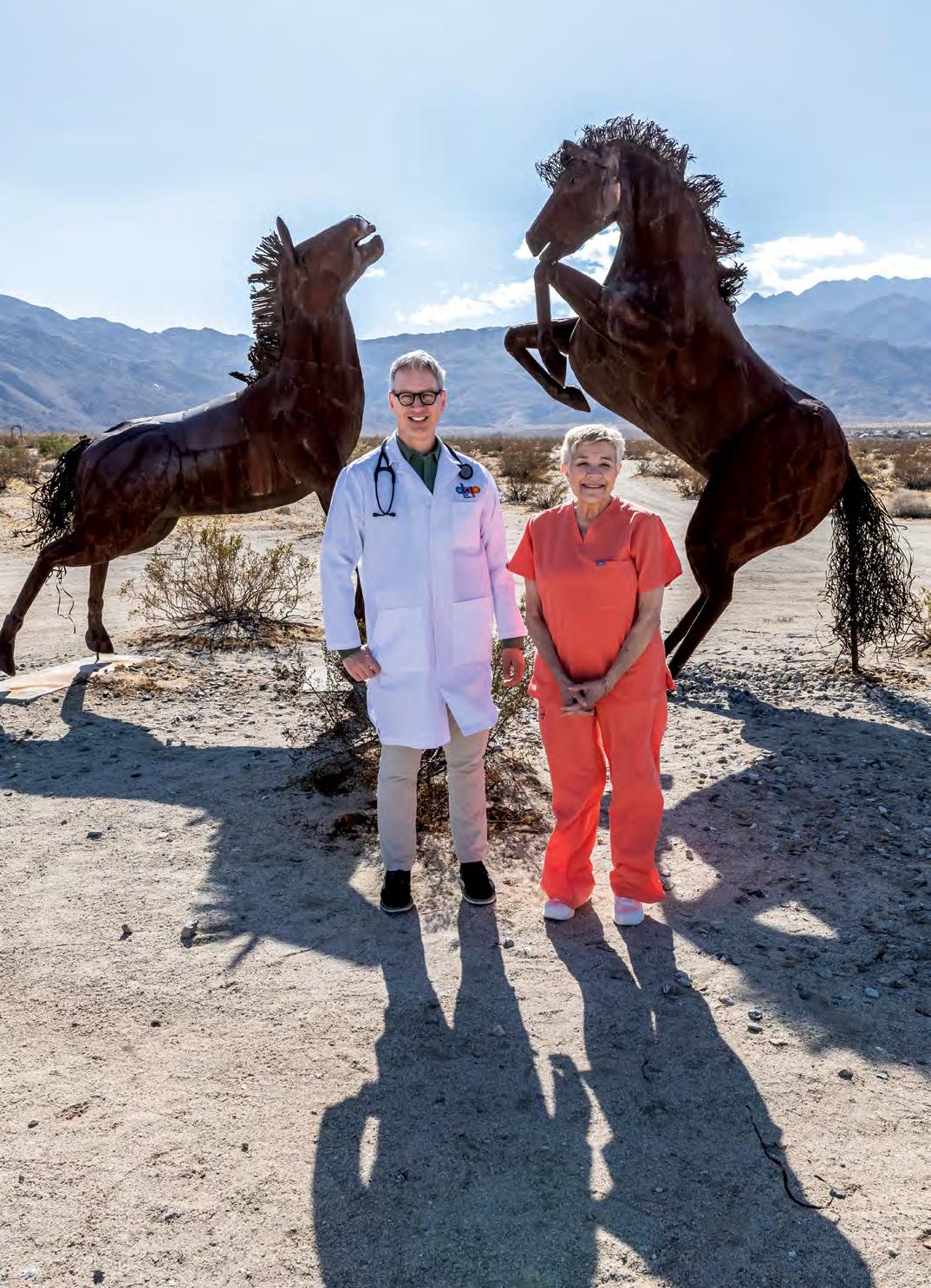
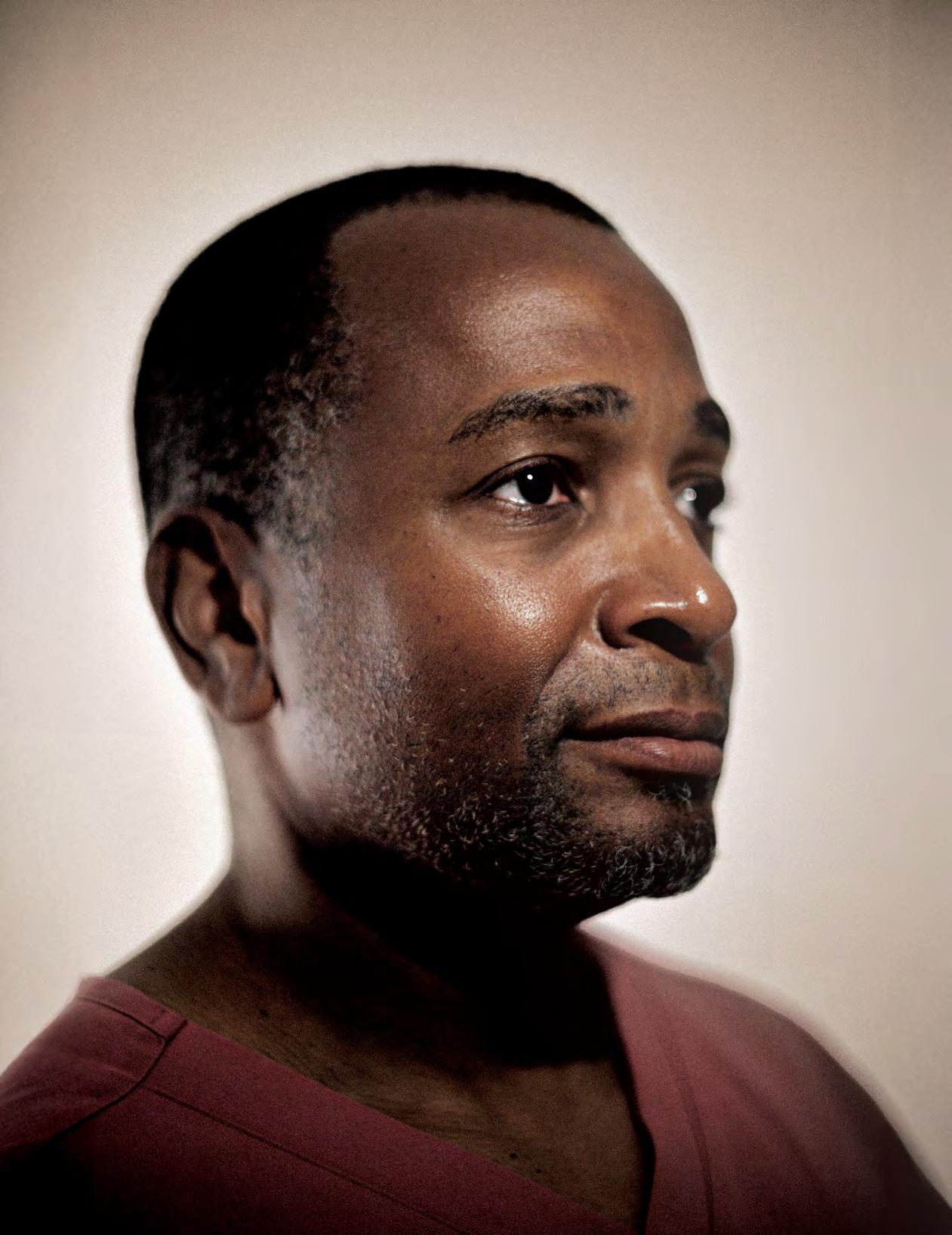
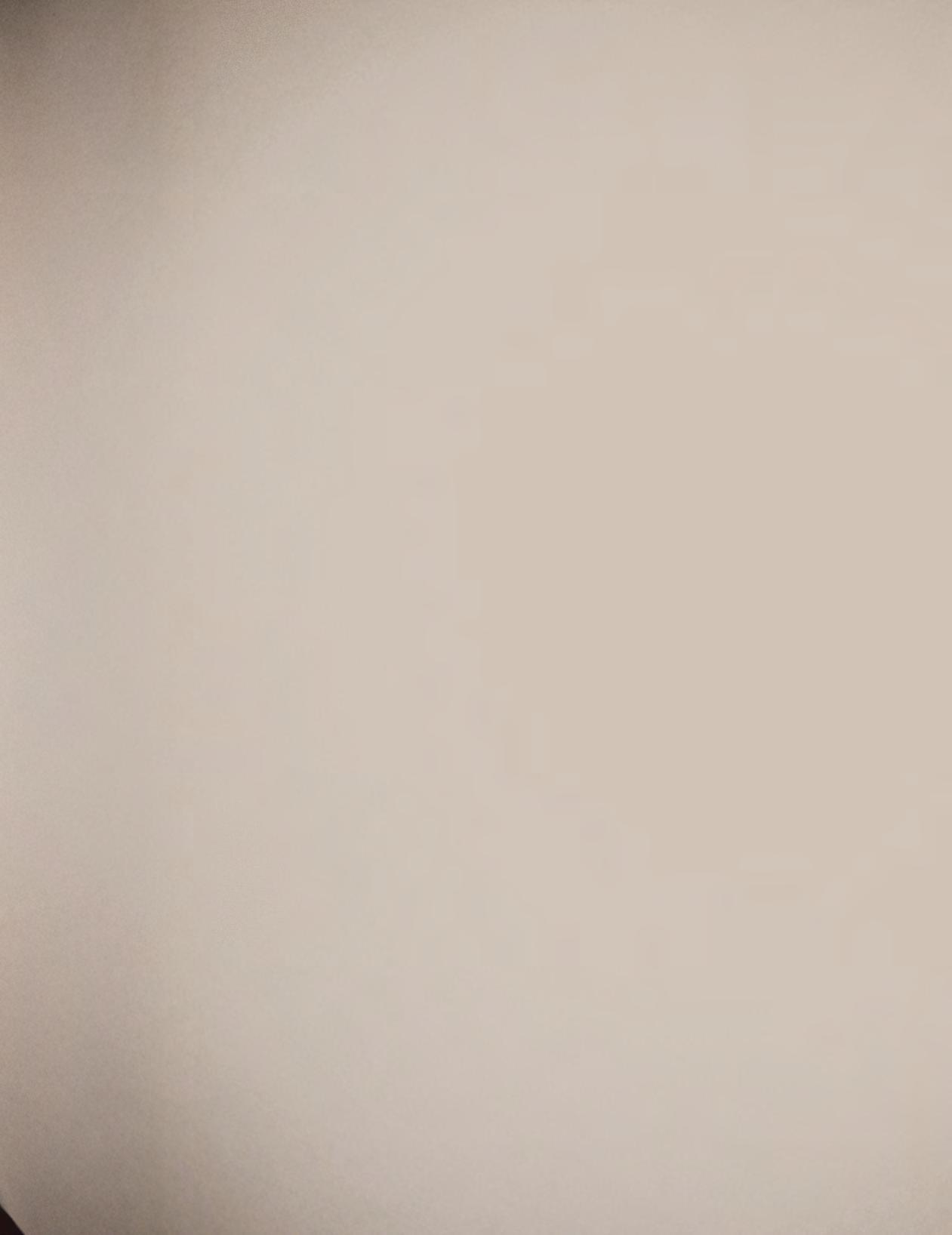
Dr. Kinji Hawthorne knows that healing bodies is only the beginning. Healing systems, confronting inequities, and standing with his patients is equally important.
Words by Jacob Anderson-Minshall • Photos by Demarcus O’Dell
Dr. Kinji Hawthorne has dedicated his career to battling HIV not just with prescriptions, but with compassion, insight, and an unwavering commitment to his patients.
While HIV care first piqued his interest because it promised to be the most intellectually challenging specialty within infectious diseases, his work quickly evolved into something much deeper. It became about people standing beside them through their darkest nights and brightest days.
Born and raised in North Carolina, Hawthorne knew early on that medicine would be his life’s work. While attending Emory University School of Medicine in Atlanta, Georgia, he first encountered the devastating impacts of HIV at the Ponce de Leon Center.
“Back in the ’90s,” he recalls, “we were still seeing quite a few patients suffering from various infections that were unusual.” That captured his puzzle-solving brain and was emotionally satisfying at a time when new drug cocktails were beginning to transform HIV from a death sentence into a manageable chronic condition. The experience cemented his dedication to infectious diseases especially HIV care. “Basically, it felt like what I would want to spend my life doing.”
In the decades since, Hawthorne has spent significant time practicing in California including stints at DAP Health as a traveling doctor, from 2008 to 2014 witnessing firsthand the evolution of HIV treatment.
Today, starting antiretroviral medications at diagnosis is standard, stopping the disease in its tracks and simultaneously preventing new infections. “Once you become undetectable, you become untransmittable,” Hawthorne explains. Studies confirm what many patients had already intuited: when viral loads fall below detectable levels, the virus can no longer be transmitted to sexual partners.
Hawthorne adds that people living with HIV can now expect a normal lifespan once the disease is under control. “HIV is not considered a death sentence anymore,” he says then adds a caveat: depending on where you live.
At DAP Health’s Sunrise campus in Palm Springs, and Stonewall Medical Center in Cathedral City where Hawthorne practices on different days of the week early diagnosis and treatment are the norm, preventing the diminished T-cell counts and opportunistic infections associated with late-stage HIV. But that’s not the case everywhere particularly in the South.
Hawthorne knows that firsthand. When he returned to Atlanta in the late 2010s, he was shocked. “So many young African
“HIV is not considered a death sentence anymore,” he says — then adds a caveat: depending on where you live.
American men, who were at risk and becoming positive, had no insurance,” he recalls. “They felt like they were going to die because they didn’t have any opportunities. We take accessible care for granted here.”
In many parts of the South, underfunded health care systems meant HIV treatment was only available once patients’ T-cell counts had plummeted to dangerous levels. Providers believed it was their only option but Hawthorne saw the flaw “It absolutely makes no sense to delay treatment until patients are very sick,” he says. “Without early intervention, people die.
“That really was an eye-opener for me. To return to the Southeast and see a system that almost reminded me of a [developing] country.”
Hawthorne returned full time to DAP Health in 2023. Here, he insists, HIV care has evolved.
“It’s become less of a specialization and more of a primary care focus keeping the patient healthy,” he says. “Our approach changed from, ‘The house is on fire, and we need to put it out!’ to being on the front line of prevention: ‘Let’s keep the fire from ever starting.’”
At Stonewall, Hawthorne now treats many longterm survivors he first met over a decade ago. These older patients face different challenges than the newly diagnosed young men he sees at Sunrise. But both groups benefit from on-site pharmacies. The in-house Walgreens at Sunrise helps new patients begin treatment immediately,
while Stonewall Pharmacy (owned and operated by DAP Health) offers delivery, injectable HIV medications, and prepacked daily pills.
Hawthorne thrives when his patients are doing well but his real superpowers kick in when things get tough. After one patient passed away, he spent hours on a Sunday helping the grieving husband navigate the administrative aftermath. “I enjoy going above and beyond,” he says humbly. “That’s just a part of who I am.”
For Hawthorne, healing bodies is only the beginning. Healing systems, confronting inequities, and standing with his patients especially when the political winds blow fiercely against them is what makes his work at DAP Health truly transformative.
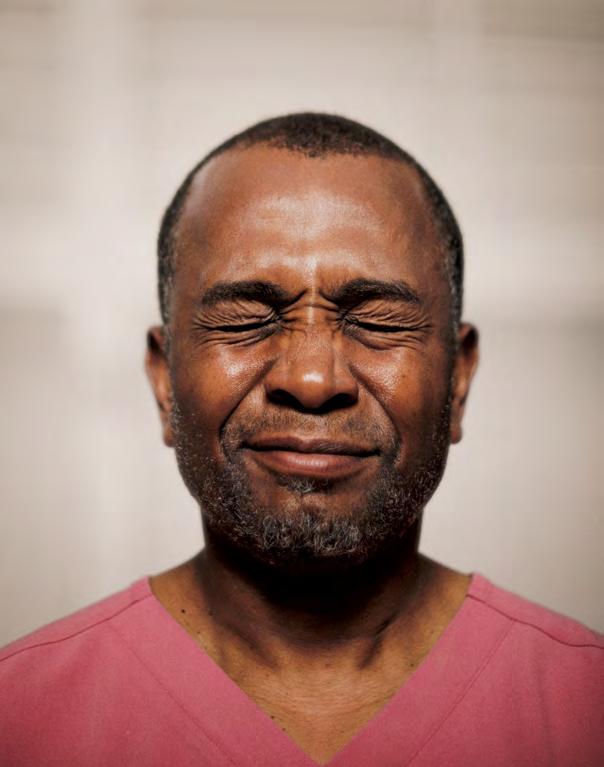
Today, he worries that the return to Trumpera policies could take us back to the darkest days of the AIDS crisis, by slashing funding and dismantling prevention programs. “They took away all of the data we’ve accumulated to help us strategize,” he reveals. “That’s going to drive up more infections. And it’s going to erase any progress we’ve made.”
Despite the mounting challenges, Hawthorne remains steadfast in his mission. “I love people,” he says. “Even those who are opposed to what we do, and to whom we take care of. If someone is in need, I have to be able to look past their opinions and see them as another human just like me who needs help.”

Nearly 93% of cervical cancers could be prevented through routine screening and follow-up care.
Early detection turns uncertainty into peace of mind. Talk to your DAP Health clinician about a Pap Smear today. 760.323.9255
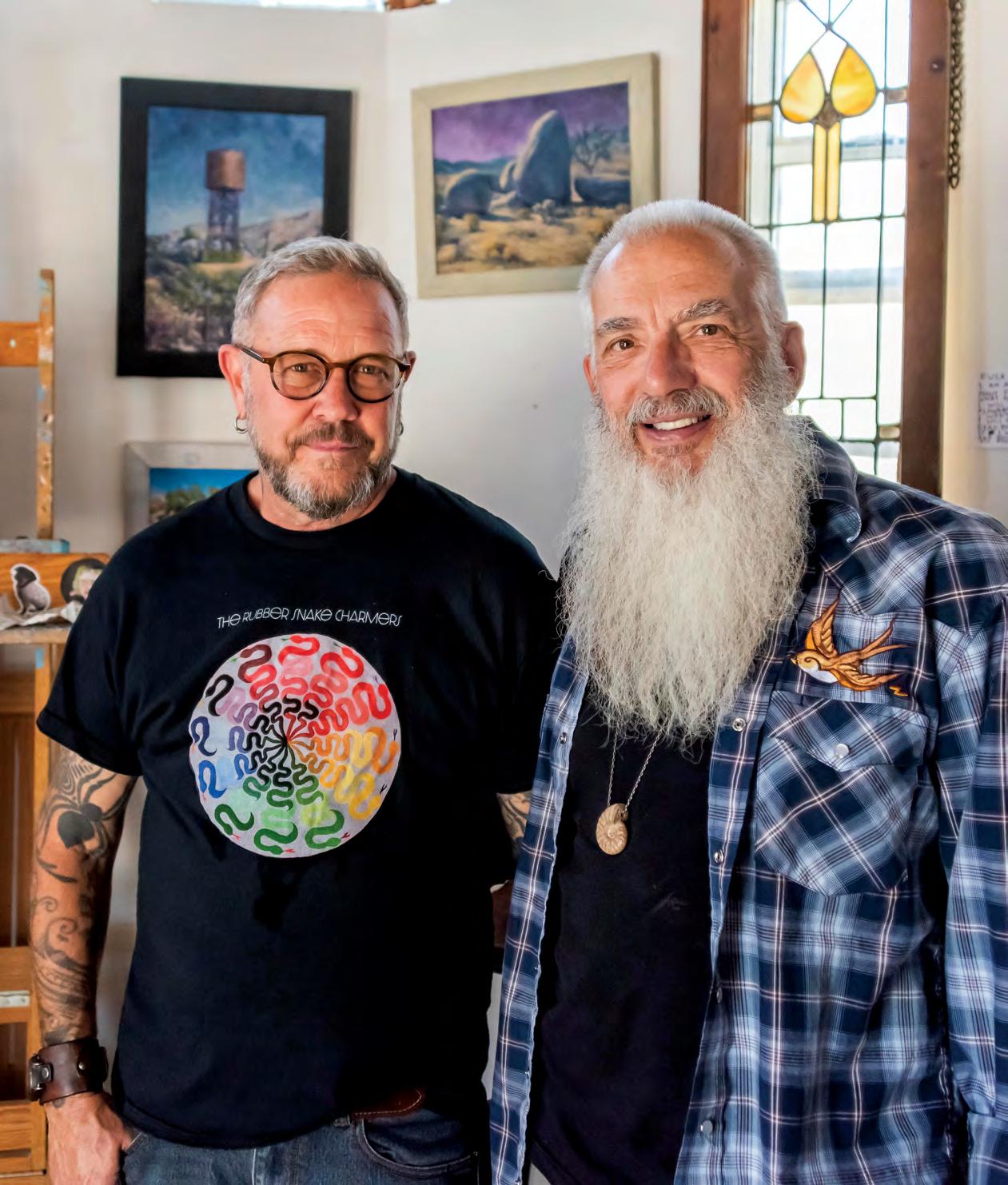
Aging is an undeniable part of life. But for the LGBTQ+ population, the new health landscape that emerges in one’s latter years comes with a specific set of issues.
Words by Daniel Hirsch • Photo by David A. Lee
When Steven Wybenga and Clay Cross moved to Morongo Valley in 2011, they looked forward to a different pace of life than the one they had experienced in the Bay Area, where they met one that was more affordable and gave them time to enjoy the local art scene and the natural beauty of the high desert with their four dogs and two cats.

But the move also meant disconnecting from the LGBTQ+ community they knew and, crucially, the queer-affirming health care they had come to rely on.
“Coming here, there were a lot of barriers for me to get health care,” says Cross, a 61-year-old trans man who works as a courier at DAP Health. “There were barriers to getting hormones, or even to being welcome in health care settings.”
Cross’s new doctors would be hesitant to prescribe him hormones without a consultation from an endocrinologist, even though Cross had been approved to use hormones for years.
Wybenga, a 68-year-old palliative care nurse and artist, realized his new primary care provider had seen very few other HIV-positive patients prior Wybenga was first diagnosed in 1985 and lacked crucial knowledge about his treatment.
The issues Wybenga and Cross faced in this new phase of their lives are common for many LGBTQ+ seniors. Aging and retirement often mean big transitions leaving cities that are no longer affordable, leaving longtime jobs, having new medical and care needs. These transitions often put these elders in contact with institutions and environments that may be less friendly and accommodating than the ones they’ve known previously.
While there are physiological conditions that LGBTQ+ folks face more than the general population, aging often means confronting sometimes anew, sometimes with new acuteness the social and structural issues that make the queer experience unique and uniquely challenging.
“Sensitivity training is something we need in health care,” Blakeley says. “I think it needs to be something that is a bigger focus than what it is currently.”
More than just medicine
“Stigma, about HIV status or being trans, plays a big part in creating barriers to care,” says Dr. David Morris, an HIV specialist and DAP Health’s former chief medical officer. “There are a lot of homophobic clinicians out there who are just not culturally sensitive.”
Anne Blakeley manages DAP Health’s Patient Connection Services. She says previous negative experiences with providers can make patients enter medical spaces with wariness or distrust. Lack of cultural competence things like being repeatedly misgendered or dismissed can keep a patient from seeking the care they need. In an aging population that requires more contact with doctors, that can be hugely detrimental.
“Sensitivity training is something we need in health care,” Blakeley says. “I think it needs to be something that is a bigger focus than what it is currently.”
As a trans woman herself, Blakeley knows firsthand how hostile some clinicians can be. When having a follow-up to a sinus surgery, in which her initial medical team also performed some facial feminization, a new doctor refused to listen to her lingering concerns about her nasal airways, saying bluntly, “I’m not giving you another cosmetic surgery.”
Offended and feeling ignored, Blakeley stopped going to that doctor and the care she needed was delayed.
New material concerns
Previous harmful experiences with doctors in the past can certainly keep a patient from care, but many logistical concerns can also pose barriers for LGBTQ+ seniors. For instance, given that queer-affirming doctors and clinics are relatively rare, geography and transportation can be big obstacles for seniors.
While LGBTQ+ people have often grown to be very independent out of necessity back when they were younger, the mainstream world was not as welcoming as it is today losing that independence can be very difficult in many ways. Some may no longer be able to drive. Others may suffer decreased mobility.
Of course, all health care comes with a price tag, and not everything is covered by insurance, especially since the number of care costs multiply as we age. For a variety of factors, LGBTQ+ seniors tend to have less saved for retirement than the general population.
And for the generation that lived through the worst days of the AIDS crisis, living into old age seemed like a distant fantasy.
“Loneliness and isolation become worse with aging,” Morris says. “In our LGBTQ+ community, it can be especially pronounced.”
Coming out as gay, or transitioning, can require separating from existing family groups or support networks. In old age, when those types of comfort can be especially useful, their absence hits hard.
Many LGBTQ+ seniors who move into retirement communities or assisted living centers find they’re newly a minority in a heteronormative space. Loneliness can be immense.
DAP Health psychotherapist Daniel Brenner, LCSW, explains the trauma many aging LGBTQ+ people experienced in their youth also casts a long shadow. “HIV-positive people who were diagnosed in the 1980s and were able live healthy lives are getting into their 60s and 70s,” he says. “A number of them are expressing big questions: ‘I lived through a health crisis that killed so many of my friends. Why am I here? Why was I spared?’”
And then there is the anxiety that comes with the harsh political reality of the Trump administration and what implications it could have for LGBTQ+ elder care. “Since January, I have had patients come into my office in tears,” says Morris.
LGBTQ+ seniors face the same health concerns around aging as the general population cardiovascular disease, cancer, arthritis but also have unique needs. Those aging with HIV are one group in particular that can face new complications.
Morris says that while new medications make this increasingly rare some HIV-positive seniors run the risk of resistance to their antiretroviral treatment. Not to mention that HIV causes inflammation in the body even for those who are undetectable so those patients have a higher risk of ailments like cardiovascular disease and stroke.
There’s limited long-term research on the specific medical needs of aging trans patients, but Morris says those individuals should keep a few general things in mind regarding hormone usage, especially since all people experience changing hormone levels as they age.
Increased testosterone levels can cause hyperviscosity in the blood, which can also lead to increased cardiovascular disease and stroke risk. On the other hand, decreased testosterone can impact bone density. Heightened estrogen levels have been linked to some breast cancers.
Addressing the barriers
“I feel like what DAP Health is doing is exactly what we all need to be doing,” says Cross, who started working at the nonprofit a few years after moving to Morongo Valley, and who also became a patient at the nonprofit’s Stonewall Medical Center in Cathedral City. “I was really shocked. After all these years, I finally fell into a place [where] people understand.”
Culturally competent care is central to how DAP Health operates. With focused services related to HIV care and prevention, plus gender-affirming care, the nonprofit has for more than 40 years provided health care that addresses the specific needs of all LGBTQ+ people from teens to seniors. Additionally, the nonprofit addresses some of the material barriers that keep people from the care they need.
The existence of case management which provides everything from insurance system navigation to help getting access to transportation to medical appointments is a huge feather in DAP Health’s cap.
For Wybenga and Cross, an essential part of addressing their needs as LGBTQ+ seniors is about establishing something more foundational to a good life. Their advice to younger

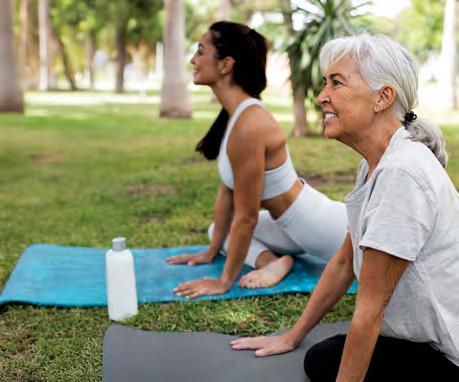
Dr. William Ward, DAP Health’s sports medicine physician, shares some crucial insights about the importance of mobility and how patients can maintain it in their later years.
It’s so, so vital
“Mobility limitation is the earliest sign of functional decline,” says Ward, adding that numerous studies link decreased mobility with increased rates of falls, hospitalization, and even mortality.
According to Ward, “as we get older, balance becomes more of an issue,” so doing exercises that improve it help keep patients from scary falls and the hip fractures that often result from them.
Ward is a big proponent of LIFE (Lifestyle Integrated Functional Exercise). This workout program, which he recommends to nearly everyone, includes numerous simple mobility and balance exercises that integrate into daily life. “There’s a tandem stand where you stand heel to toe, almost as if you’re balancing on a tightrope,” he says. “You can do it while brushing your teeth.”
One size does not fit all
With his background in holistic medicine, Ward really believes every patient has specific needs around mobility, and therefore exercise programs must be tailor-made. He says his work is “really about treating patients as a whole person instead of just one orthopedic issue.”
The secret to keeping up an exercise regimen is simple: do what you enjoy. “If you can find something you find enjoyable, you’ll do it more regularly,” says Ward. “Once you’re achieving a moderate aerobic activity level, you start to feel better and almost become addicted to that activity.”












Though less well-known than menopause, changing hormone levels is a common part of male aging.
Words by Daniel Hirsch
In recent years, awareness of the symptoms and ways of managing menopause and perimenopause has grown tremendously. “The New Menopause: Navigating Your Path Through Hormonal Change With Purpose, Power, and Facts” by Dr. Mary Claire Haver rocketed to the top of the New York Times bestseller list shortly after its publication in 2024.
But what about andropause, the corollary hormonal shift that happens in men as they age? “I would say most men don’t even know about andropause,” says DAP Health’s former chief medical officer Dr. David Morris, who still maintains a practice at the nonprofit’s Sunrise location in Palm Springs.
Also called late-onset hypogonadism, andropause refers to the decline of testosterone levels experienced by men after the age of 40. While much less universally experienced than menopause according to the Mayo Clinic, roughly 10% to 20% of men over 40 have testosterone levels low enough to be considered non-standard its symptoms can be similarly disruptive.
Signs and contributing factors
“Men do have night sweats, and men do have hot flashes. Men have these vascular symptoms,” says Morris. The most common signs of andropause, however, are fatigue, low libido, erectile dysfunction, and depression. Patients can also experience loss of muscle mass, sleep disturbances, hair loss, and osteoporosis.
Also distinct from menopause, the hormonal decline in men happens much more gradually, so many patients experiencing andropause may not even recognize something is happening. Most men’s testosterone levels generally fall about 1% a year after the age of 40.
“It’s not like an on-and-off switch,” says Morris. “It usually happens very slowly.”
Patients with diabetes, obesity, kidney disease, and histories of excessive drug and alcohol use have a higher likelihood of experiencing pronounced andropause symptoms. Additionally, HIV-positive patients are more prone to decreasing testosterone levels.
What to do about it
According to DAP Health Director of Pharmacy Operations Sheila Lo, the first step for patients in the appropriate age range who are experiencing andropause symptoms especially those in the more susceptible groups is to get their testosterone levels checked.
The American Urology Association defines low blood levels of testosterone as below 300 nanograms per deciliter (ng/dL). An average range falls between 450 and 600 ng/dL. According
to Lo, low levels of testosterone may be underreported since many patients are never diagnosed due to the fact that they don’t recognize or even experience symptoms, and therefore don’t get their testosterone levels checked.
In terms of treatment, Lo emphasizes lifestyle changes should be a first step before medical intervention which usually involves testosterone replacement therapy (TRT) is considered.
“If they smoke, let’s see if we can help them stop smoking,” she suggests. “If they drink too much alcohol, can we perhaps decrease that? Regular exercise can really help, too. You should definitely work with your medical provider and weigh the pros and cons to see if you truly need testosterone [replacement] therapy.”
The pros and cons of TRT
While effective in treating many of the symptoms of andropause, TRT comes with a variety of risks that should be carefully weighed before beginning treatment. Taking testosterone has been linked to higher risks of prostate cancer and can cause blood clots.
“For the right patients with low levels of testosterone, TRT is a great opportunity to energize people feeling fatigue, and help them out with their symptoms,” says Morris. “But we need to do risk assessment. Do they have a family history of strokes and heart attacks? Cardiovascular disease? Blood clots? We screen out people with very high risk, because testosterone is probably not going to be a good choice for them.”
For those who do begin TRT, it should be done in close consultation with a physician. And for the record, there are so many formulations from intramuscular or subcutaneous injections and transdermal gels and creams to skin patches and oral pills, each of which comes with its own set of plusses and minuses that said physician is the best person to help a man decide which option is best for him.
“If you are on testosterone replacement therapy, you need to follow it closely with your provider,” says Lo. “You’ll need to continually check your blood count, check your testosterone levels, and just make sure everything is going smoothly.”
Perhaps the most important thing for patients to understand about andropause is that everyone experiences some decline in testosterone levels. Unless symptoms are severe, it may not even be something that needs treatment.
“It’s a natural process,” says Lo. “When you’re getting older, you have wrinkles and you are not as energetic as you were in your 20s. That’s just the aging process.”
Two desert creatives prove secondhand style — from pre-loved books to reloved jewelry can be first-rate, and they found it all at Revivals stores.
It all began with a brief chat at a party last year. DAP Health Chief Marketing Officer Steven Henke and floral artist Lucie Doughty were at a mutual friend’s house. “We had just a short conversation, but it was positive,” recalls Henke. “I could tell she was a really creative person, and she had really positive energy. I really connected with her. A month or two later, she reached out and explained to me that she had this vision, that she loved shopping at Revivals and wanted to work on a project with us.”
Doughty, along with photographer Anna Grace Lynch, envisioned a series of photographs that reimagined items found in Revivals stores, placing them in unexpected settings and using them in entirely new ways.
The images “would all be themed, and they would be in collaboration with Revivals in the sense of being able to use their resources such as their clothing or accessories or furniture or glassware or art or
books to showcase what Revivals offers,” says Lynch.
Together, Doughty and Lynch created whimsical vignettes that offered a fresh and imaginative take on the store’s familiar image. “We aimed to create something fun,” says Doughty. “We wanted a quirky, unexpected piece that would catch people’s attention and inspire them to take a closer look, evoking a fresh and playful vibe.”




“I love it that you can be original — a little more bespoke. You can find these treasures that not everybody else has. You create a new memory with it.”


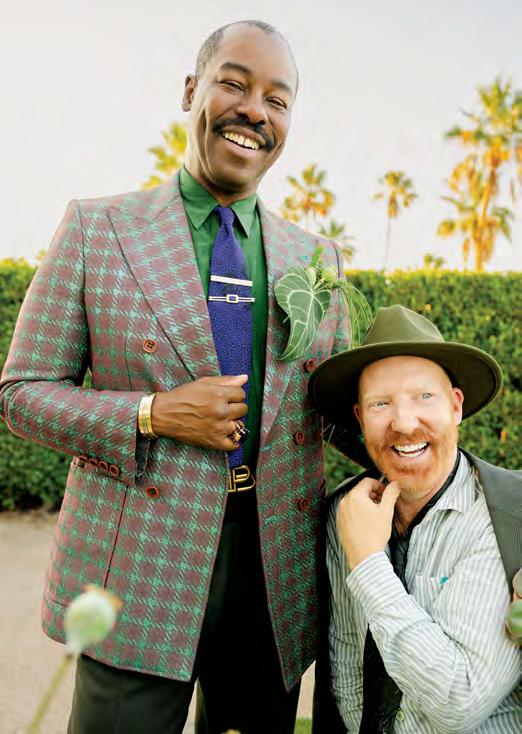

They also chose to take the photos outdoors rather than in a traditional studio, using the natural desert landscape and light to enhance the images’ unexpected quality.
The initial photo shoot took place in Ruth Hardy Park and showcased a selection from Revivals’ extensive collection of books. “We arranged the books in stacks and considered how people typically enjoy reading often lounging on a couch,” explains Doughty. “Our goal was to create a sense of familiarity while also introducing an element of surprise. In several shots, the model is captured upside down on the couch, bringing an unexpected twist to the outdoor setting.”
Doughty, who served as creative director for the project, incorporated her unique floral designs and other imaginative touches into the photos. In one, a model wears a delicate flower crown. In another, a closer look at a frosted, cactusshaped cake reveals it’s decorated with vintage brooches found at the store.
Both Doughty and Lynch are avid thrift shoppers who consider Revivals their favorite. “It’s the hunt for me,” says Doughty. “I love finding the little treasures. I’m very much into vintage.”
Sustainability is also a factor. “It feels better to pick up things that have been loved by someone else and give them a second life and reimagine how you can wear them,” continues Doughty. “I love it that you can be original a little more bespoke. You can find these treasures that not everybody else has. You create a new memory with it.”
Lynch, who began thrifting as a teenager, agrees. “It’s really affordable. It’s a way to save money,” she says. “It would be fun to go and find things that were either vintage or retro or from years ago that felt like little treasures, like little time capsules and unique too. As I grew older I became educated on the sustainability aspect that not only is this, of course, more affordable, it’s also helping the environment.”
Equally strong as their passion for thrifting is Doughty and Lynch’s commitment to supporting the health care nonprofit that’s behind Revivals.
For the rare reader who may be uninitiated, Revivals is much more than just a treasure trove for inveterate thrifters like Doughty and Lynch it’s a vital force powering DAP Health’s mission to expand access to health care. Every purchase made at one of its locations (in Palm Springs, Cathedral City, Palm Desert, and Indio) helps fund comprehensive medical and mental health care for more than 88,000 individuals, many of whom face barriers due to income, identity, and/or geography From primary care to housing support, the dollars spent at Revivals ripple outward, creating a healthier, more inclusive community.
Those inspired by the store’s purpose are encouraged to not just shop, but to donate gently loved furniture, fashion, books, or home décor. It’s an easy way to give back and be part of something bigger because at Revivals, style and sustainability go hand in hand with community care.
“I’m just gobsmacked by their creativity.”

“Working with Revivals is important to us because of how they [fund] DAP Health, which both of us agree is really important because they support the community,” says Lynch. “And it’s not just any community, but marginalized communities, such as the LGBTQ+ community, the trans community, and people who don’t necessarily have access to the best health care.”
“They just wanted to do it as kind of a way to volunteer and to apply their creative energy to something they thought was not just interesting but worthy,” says Henke, whose next step is to partner with the dynamic duo to create a printed lookbook to be made available in all Revivals stores that will showcase their creative journey and inspire shoppers to explore and expand their own personal style.
Henke is thrilled with the new partnership, and looks forward to future collaborations. “I’m just gobsmacked by their creativity,” he says. “The photographer, the creative director they’ve worked so beautifully together to get these images and to pull together all these willing participants in their madcap adventure.”

choose monochromatic clothing

need all sizes and colors of books
Creative Director @luciedoughty
Photographer @annagracelynch
Floral Designs @thehouseofflorals
Cake & Food Stylist @conamorninayleon
Hair @kathleenatkins
Makeup @johnstapleton
Wardrobe Stylist @ihavepatrick_
Tablescape @lawrence_salazar
Photo Assistant @investor_fella
Clothing, glassware, tea sets, books, and
furniture provided by @revivalsstores

choose beautiful tea cups
Wedding Models @jasonbacke, @tedgibson, @gomesjustin, @trendguy, @erikabardere, @thesukhalife, @gregorydylanbeauty, Matt
Tea Party Models @sirisimran, @imkarlyy, @stallionizm, @ihavepatrick_, @bjp123
Book Models @anastasiaantoinette, @rerod2

showcase various sizes of glasses


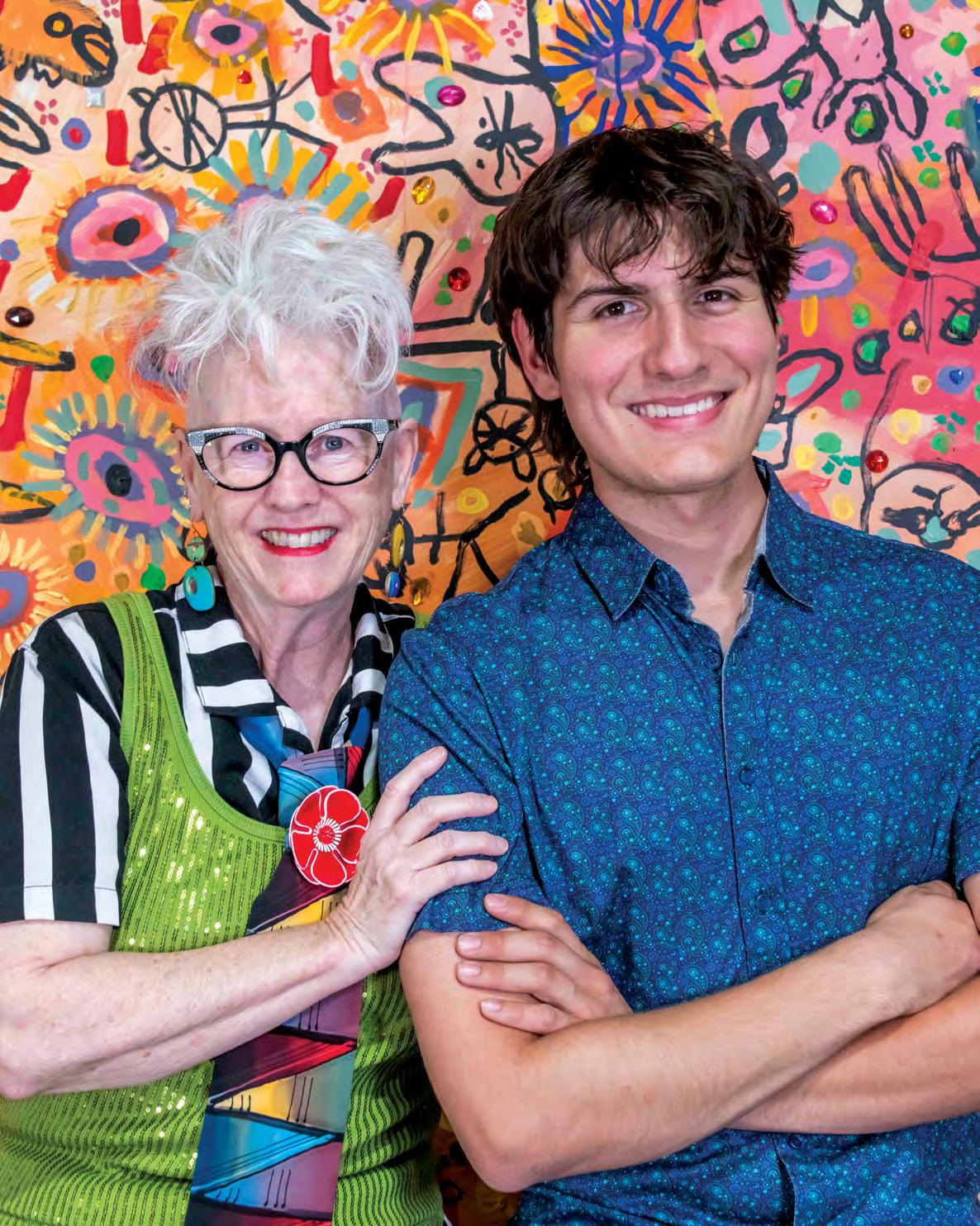

Two very different Revivals volunteers talk about the joys of donating their time to help further DAP Health’s mission.
Words by Jeffrey Norman • Photo by David A. Lee
DAP Health’s quartet of Revivals Thrift Stores in Palm Springs, Cathedral City, Palm Desert, and Indio, each of which donates every dollar of profit to the organization (to the tune of more than $1 million a year) is a success story made possible only thanks to the generosity of its more than 260 dedicated volunteers. DAP Health magazine recently spoke to two of them.
Elliott Night, 64, is a retiree who’s been donating her time since March 2023, and has just surpassed 500 hours. Her most recent job was running a statewide program for CASA of Contra Costa County, a nonprofit that matches youth in foster care with volunteer clinical therapists for weekly teletherapy. Caleb Calderon 21, coming up on three years and 260 hours works full-time at the Starbucks at Vista Chino and North Sunrise Way in Palm Springs while studying at College of the Desert in hopes of becoming an English teacher. The two had never met before, and quickly found out they had much in common.
What motivated you to volunteer at Revivals?
Calderon: Well, to be honest, free college. COD required me to do two hours of volunteering to earn my keep. I did my two hours and decided, “You know, that was pretty fun. I want to keep doing this.” There’s a great group of guys in the clothing department with me, and I feel like I’m helping my community a little bit and also giving people a great deal when they shop at Revivals. I also like history, and when I work in the warehouse, I see all sorts of stuff you wouldn’t see in other places. It’s like a little museum for me.
Night: I’ve known about DAP Health for many years. And I love to go to thrift stores. I was a big customer of Revivals, and I thought, “Wow, what a great place to volunteer.” I love fashion, so I like sorting the clothes, but my area is actually men’s underwear, socks, and ties. I have a big tie collection, so it’s right up my alley. I love that the money we make goes to provide health care for people in the community who otherwise wouldn’t be able to afford it.
There are so many places to volunteer in the valley. Why Revivals?
Calderon: The Starbucks where I work is right across from [DAP Health Sunrise], so I get to see how they impact people every day. I like the fact that the money I help them earn goes to a good cause. That really makes me feel good.
Night: The impact the stores are able to have on funding DAP Health’s programs and services is really great. Every month, they tell us how much we’ve helped raise. We get to actually hear the impact we’re having.
What stands out about your volunteer experience?
Night: I also volunteer at [DAP Health Sunrise’s] Ms. Dee’s Boutique, which has clothing for people who have an immediate need perhaps for a job interview or some other important occasion. We also have clothing for people who may just not have a shirt that day. They can come in and shop, and everything is free. Everyone who comes into the boutique is always super grateful. They can’t believe a place like this exists for them. You can see the relief on their face when they see the variety of things available to them.
Calderon: I get a lot of satisfaction out of helping, and making somebody’s day. It’s a good feeling knowing you’re doing something that’s benefiting a lot of people you might not ever meet. You’re helping. That’s what it’s all about at the end of the day.
Why would you tell people to volunteer at Revivals?
Night: The staff and volunteers at all the stores are all so welcoming and friendly. It’s like a family. I would say just come in and give it a try. The work is fun and easy. You don’t have to work in the warehouse. You can be a cashier and interact with people more. And there are many other opportunities to volunteer with DAP Health. You can do data entry, or meet and greets at events. I’ve volunteered at The Chase and Dining Out For Life.
Calderon: I know for people my age, they eat up a lot of time on social media and electronics. I’d say put your phone down for a little while and go make some new friends and help somebody in the process. There are better ways to spend your time than scrolling on your cell phone.
If you’re looking to meet nice, friendly people like Calderon and Night while doing good for your community, please think about volunteering a few hours a week at Revivals. To learn more, please visit RevivalsStores.com/volunteer.
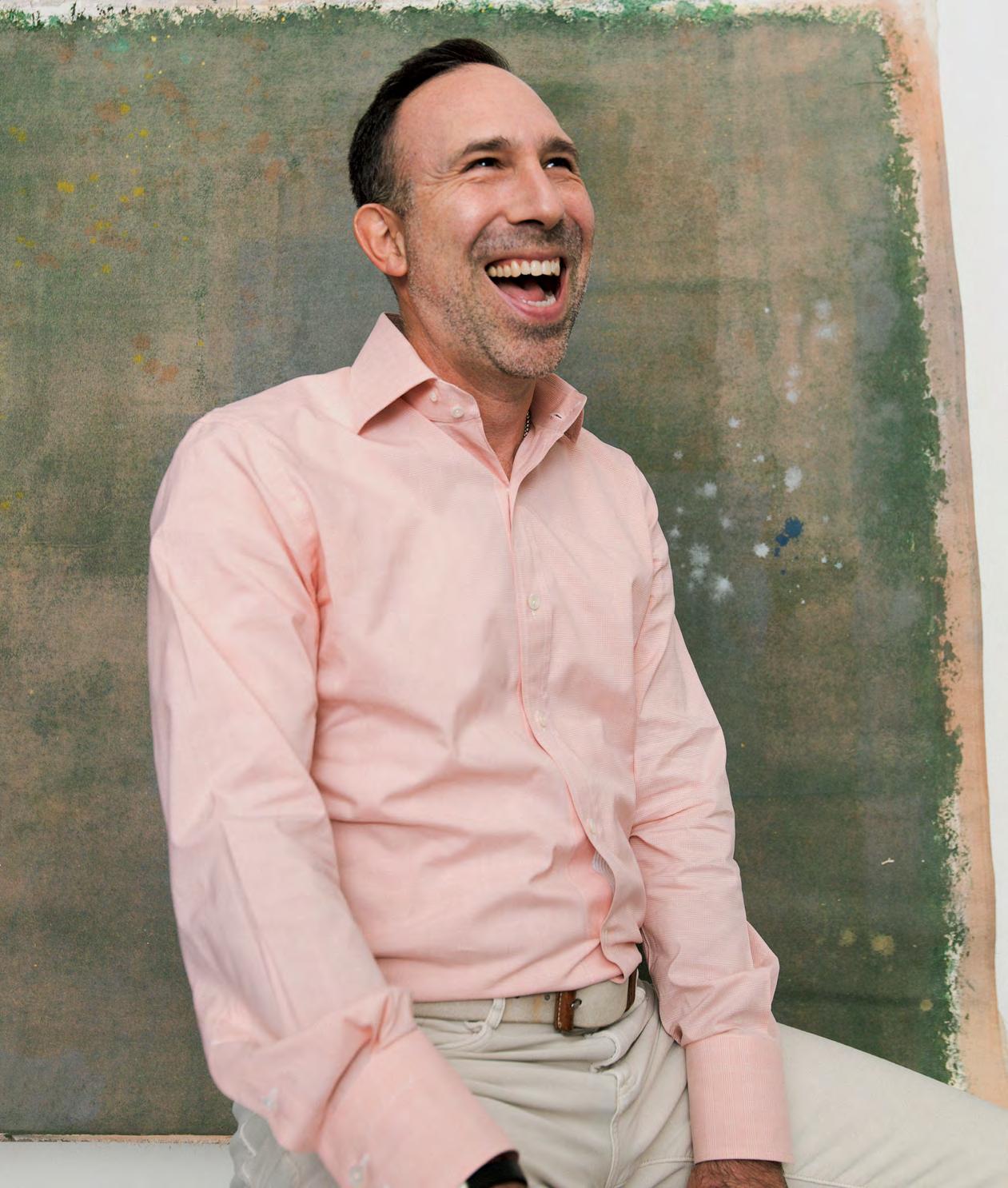
Experiencing the mission at DAP Health’s Impact Hour
Words by Steven Henke • Photo by Demarcus O’Dell
Matt, for those who may not be familiar, what exactly is the Impact Hour?
The Impact Hour is a behind-the-scenes look at who we are, what we do, and how we do it. It’s designed for prospective donors, community members, and partners who want to see firsthand how we’re achieving health equity. Visitors walk through our Sunrise campus in Palm Springs, meet staff, and hear real patient stories that illustrate our holistic, patient-centered approach to care.
What makes the tour unique compared to simply reading about DAP Health’s mission in a report?
Reports are valuable, but there’s nothing like seeing it for yourself. The Impact Hour takes you into the heart of our medical and wellness center You’re not just learning about services, you’re meeting patients and staff whose lives and work are directly shaped by DAP Health. Every stop along the tour is anchored by a storyteller. They share how mental health care, women’s health, or LGBTQ+ and HIV specialty care has made a difference in their lives. Those personal journeys bring our mission to life.
Walk us through the tour. What should participants expect?
The tour is divided into three stops:
Stop One is mental health. Here, guests hear how we integrate mental and physical health, treating the whole person. We talk about challenges like high demand for services and the urgent need for more culturally competent providers.
Stop Two is women’s health. We serve more than 30,000 women today, but with limited OB-GYN professionals, wait times can be as long as three months. Our vision is to expand services dramatically when our new women’s health clinic opens in 2027.
Stop Three is LGBTQ+ and HIV specialty care. This is our legacy and our ongoing commitment. We highlight the unique needs of the LGBTQ+ community, the care gaps in our region, and why donor support is vital for sustaining services, especially for the many patients we see who are uninsured.
It’s about connection. Our model of care is comprehensive, it integrates medical, dental, pharmacy, social services, and mental health into one coordinated system.
At each stop, visitors meet someone whose life has been touched by these services. That personal storytelling is powerful.
Why is it important for donors and community members to attend an Impact Hour?
It’s about connection. Our model of care is comprehensive, it integrates medical, dental, pharmacy, social services, and mental health into one coordinated system. That can sound abstract until you see it in action. Impact Hour participants walk away understanding the urgency of our challenges, the hope of our vision, and the tangible impact of their support. It also gives people the chance to meet others in the community who share their passion for equity in health care.
What do you hope people take away after attending?
I hope they leave inspired, knowing they can be part of something transformative. DAP Health has been a lifeline in this community for more than 40 years, and we’re continuing to grow and adapt. Whether someone becomes a donor, a volunteer, or simply an advocate, Impact Hour is where that journey often begins.
How can someone reserve a spot?
Availability is limited, so we encourage anyone interested to reach out. They can RSVP directly with our Donor Relations Manager Chas Kidder at 760.656.8479 or CKidder@DAPHealth.org. And, of course, they can always learn more by visiting DAPHealth.org.
To experience DAP Health’s mission firsthand, don’t miss this exclusive opportunity. Join us at an upcoming Impact Hour, and see how together we’re building a healthier, more equitable future for everyone.



Look above your plans. Walk with renewed purpose.
Your estate plans gave you peace of mind but was your purpose left behind?
This guided, confidential, and complimentary experience helps you reflect on your passions, align your plans with your values, and walk away with a personalized roadmap to share with your trusted advisors.
We are proud to offer Periscope Path powered by Thompson & Associates to our friends and supporters.
• Discovery: Meet one-on-one with your Periscope Path Associate to share your story and explore what legacy means to you.
• Values Conversation: Reflect on the people, causes, and passions that shape your decisions.
• Personalized Roadmap: Receive a clear, written summary of your renewed goals and values, designed to help your existing plans reflect what matters most.
• Advisor Integration: You’re encouraged to share your personalized roadmap with your trusted legal or financial advisors. Your roadmap provides clarity and confidence for your advisors to make the proper changes.
It’s our gift to you, offered at no cost with complete privacy.
Interested in starting your journey?
Chris Kiser 530.543.5612
CKiser@DAPHealth.org
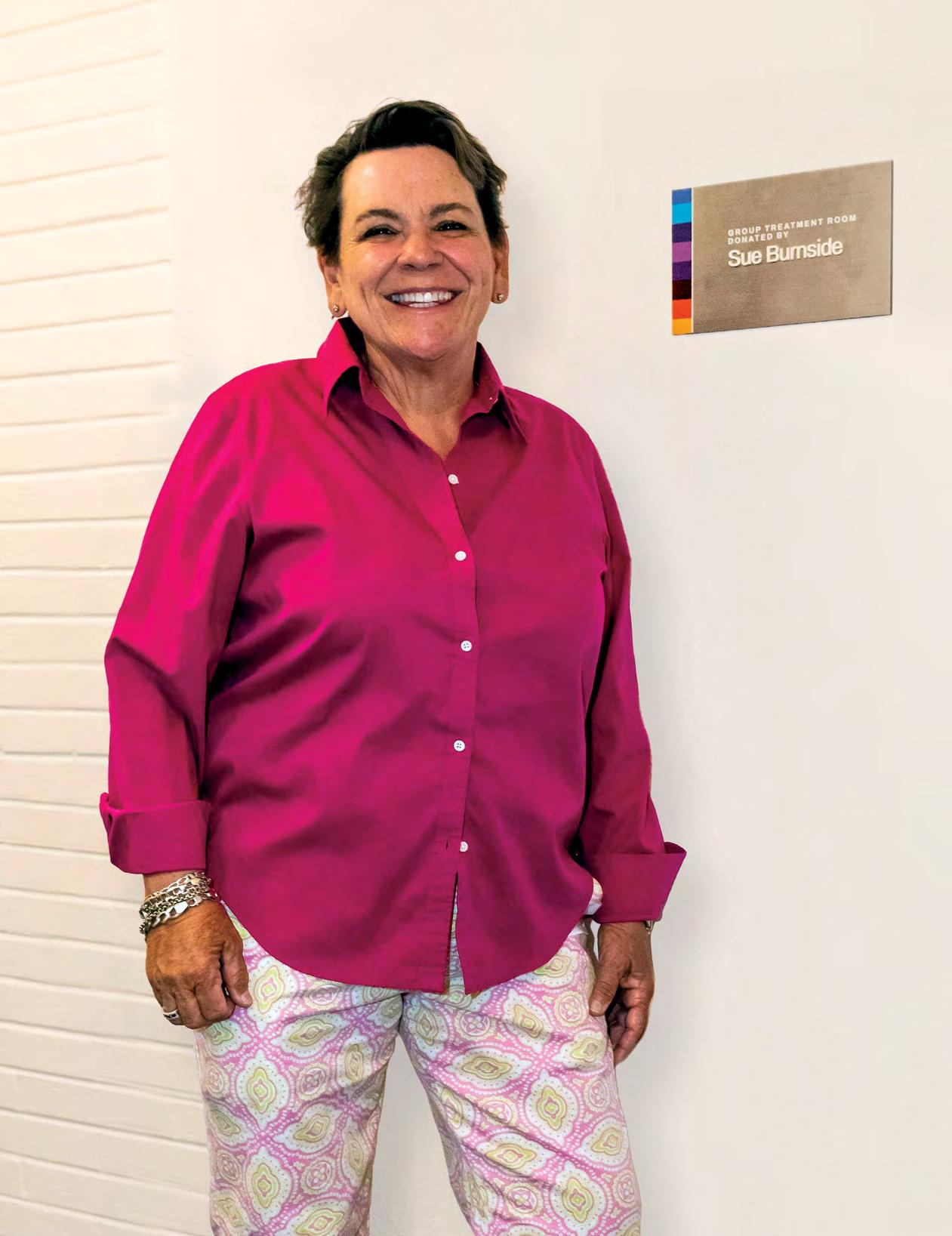
How Sue Burnside’s legacy fuels health and equality.
Words by June Allan Corrigan • Photo by David A. Lee
It’s a homecoming of sorts for Sue Burnside, who in many ways has been here from the very beginning. The Palm Springs native remembers when Desert AIDS Project (now DAP Health) was first established in 1984. Although she was a student at USC during those years, the nonprofit made an impression.
“It was just so interesting what they were doing,” she reflects now, recalling the organization’s grassroots effort to stem the AIDS epidemic. Burnside, however being a mere 20-something at the time had a career to establish, which she went on to do with much success in Los Angeles.
Fresh out of college, she began working for the Campaign for Economic Democracy (CED), a political action committee founded by Tom Hayden and Jane Fonda. A portion of CED’s work centered around rent control, and when Burnside was loaned out to work on a campaign being run by a group dedicated to protecting renters’ rights in Santa Monica, she had a lightbulb moment.
Realizing it was possible to make a living helping people get elected, Burnside saw her path. She quit her job the next day, and before long, this former Palm Springs High School class president was helping a host of LGBTQ+ candidates including former L.A. County Supervisor Sheila Kuehl, former L.A. School Board member Jackie Goldberg, and former L.A. Board of Education member Jeff Horton get elected.
The first grassroots consultant in America
In what seems a fitting coincidence, Burnside specialized in grassroots consulting. “That’s the only branch of political consulting that actually goes out and talks to people, versus simply throwing campaign messages at them,” she explains. In the course of establishing her Los Angeles-based firm, she became the first national grassroots consultant in America.
“It’s all about targeting,” says Burnside, who although recently retired stays far from idle. She sits on two national boards, and is active in Equality California. She also targets her resources and energy toward causes close to her heart. Fortunately, DAP Health numbers among them. Although she’ll tell you she came to philanthropy via a circuitous route.
“Growing up, my parents only gave money away at church. But that doesn’t lead you to understand the nature of philanthropic activity,” she says. For her, greater insight began some years later, when different friends began inviting her to various LGBTQ+ galas as their guest. Then, as her own fortunes blossomed, she began purchasing her own tickets, later buying out entire tables.
“If you’ve created this life for yourself and it’s abundant, it’s just ridiculous that you wouldn’t share that abundance with people of lesser means.”
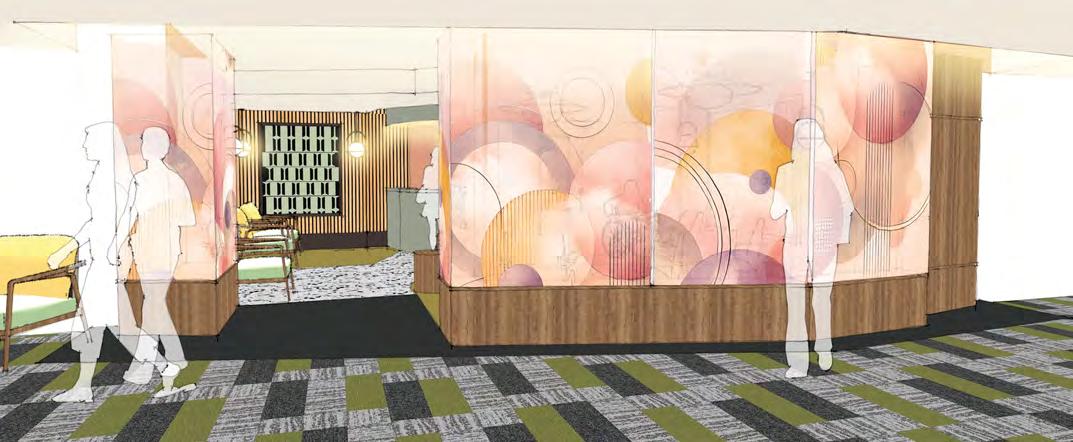
“If you’ve created this life for yourself and it’s abundant, it’s just ridiculous that you wouldn’t share that abundance with people of lesser means,” says Burnside by way of explanation, while at the same time admitting she has a real weakness for silent auctions. “I love to win!”
So many ways to give
As it turned out, the early galas she attended were helpful in many regards. The festive evenings helped open her eyes to the range of philanthropic opportunities in existence, but the attendees she met also educated her on the finer points of giving.
“I learned you just can’t give money to everyone, much as you might like to,” she reveals. “You can go to every event, that’s fine, but you’ve got to ask yourself what are the things that are important to you? What may have helped you in your life that maybe some people can’t afford to do in their life? Then you can look around, and you’ll find there may be a place to do just that.”
Burnside found the perfect opportunity to meld philanthropic intention with a cause that was meaningful to her when DAP Health’s Marc Byrd Mental Health Clinic opened three years ago. It’s precisely why the clinic includes the Sue Burnside Group Room, a space dedicated to group therapy sessions, a tool that really helped her when she was young. “When I was a kid and I got kicked out of boarding school for being gay, I know that I felt better just being able to talk about it,” she says.
And Burnside is by no means finished. She is excited by the growth DAP Health’s OB-GYN Department is experiencing in the wake of the Borrego Health acquisition. A longtime advocate of women and their health care needs, she’ll be funding the check-in/front desk area of the new women’s health clinic currently being planned.
“I think it’s important to have a space that’s welcoming, comforting, and perhaps just a little bit glamorous,” she maintains. “It calms people down and helps them relax. I think everyone deserves that kind of space.”
She is also actively focused on setting up her planned gift, which will create her lasting legacy of giving in order to impact the future of DAP Health and its patients.
Happy to have reached a time in her life when she can support causes and institutions that matter to her in her hometown, no less! Burnside concludes: “The real value of my money is what it contributes to the community.”
Including DAP Health in your estate plan certainly allows the nonprofit to continue to promote the health and well-being of members of the diverse communities it serves. Yet there are many other ways one can give to DAP Health. Here’s a list of other giving options whereby you too can help make a difference:
Purchase tickets to The Chase, DAP Health’s annual fundraising gala, held next February, and give amounts ranging anywhere from $100 to $50,000 or more during the paddle raise portion of the evening.
Participate as a restaurateur, diner, or volunteer ambassador during Dining Out For Life® , a beloved North American foodie fundraiser in April sponsored locally by DAP Health, with all proceeds benefiting the nonprofit’s lifesaving HIV programs and wraparound services.
Become a Partners for Life or Partners Forever member at DAP Health to receive varying special benefits while simultaneously providing essential funding to ensure equitable, patientcentered health care to tens of thousands of patients annually.
Donate gently used goods, or shop new and used furniture, clothing, and more at one or all of DAP Health’s Revivals Thrift Stores, with four locations across the valley, including Palm Springs, Cathedral City, Palm Desert, and Indio. Volunteering at Revivals is also a worthy, fun option.
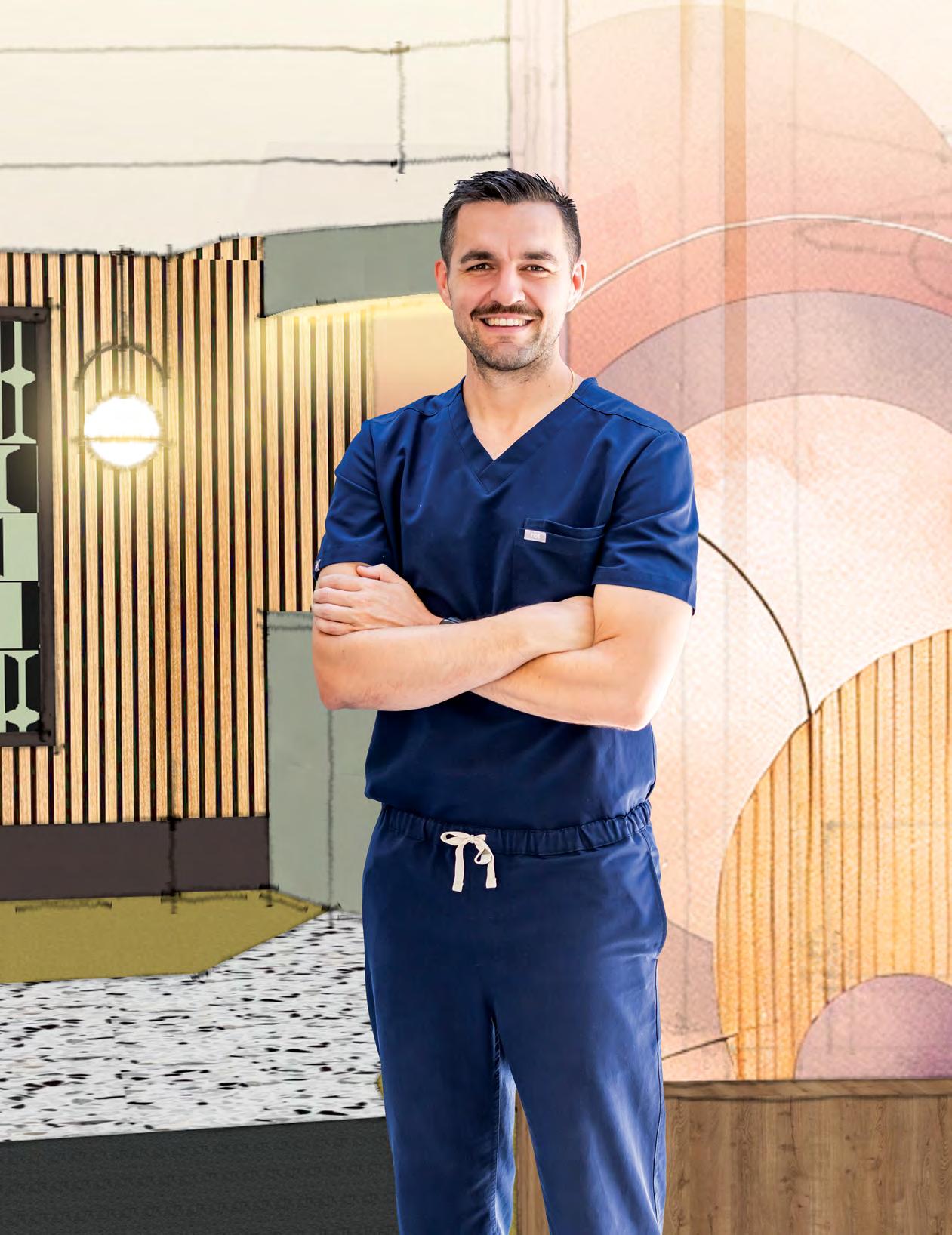
DAP Health’s Palm Springs Family Health is relocating to the nonprofit’s flagship headquarters, bringing OB-GYN services to its Sunrise campus for the first time in history.
Words by Amelia Rodriguez • Photo by David A. Lee
The team at Palm Springs Family Health, one of DAP Health’s seven OB-GYN clinics, had a problem: The space needed upgrades, and the nonprofit’s lease on it was set to expire in 2027. Clinic Manager Carmen Ruiz had a possible solution. “She said, ‘You know, we can achieve better health outcomes by providing more holistic care at a pre-existing facility,’” CEO David Brinkman recalls. “‘As opposed to simply remodeling a standalone clinic, how about we relocate the clinic altogether?’”
How about, “Awesome!”
So, Palm Springs Family Health will soon find a new home at the organization’s flagship headquarters, DAP Health Sunrise, in Palm Springs. And for the record, the new location will only be five minutes from the old one, so existing patients can take virtually the same route. The facilities are slated for completion in 2027.
Fundraising is underway
DAP Health’s Director of Philanthropy Matt Swearman and his team are currently raising capital and offering clinic- and roomnaming opportunities to bankroll the construction.
Interestingly, some choosing to make their mark on the clinic are leaving their own names out of it, however. “People who are supporting this effort are naming [spaces] after women in their lives who are important to them,” Swearman reveals. “It’s a great way for donors to memorialize or honor a woman who influenced them in a positive way.”
The resulting facilities will significantly increase the OB-GYN staff’s capacity to provide care for DAP Health’s 30,000 women patients. With only three exam rooms, “the current location is really small, and it has been at full capacity for a while,” says DAP Health Director of Operations for OB-GYN and Behavioral Health Brenda McDermott. “We only have one OB-GYN there. I’m really excited that we’ll have more space to expand the team and our services.”
According to Director of OB-GYN Services Dr. Rhett Papa, staff will hopefully grow to include an additional nurse practitioner, and primary care providers at the Sunrise campus will have the opportunity to learn from the OB-GYN team. “We’re hoping that encourages general care providers to get back into GYN,” Papa adds. “If the routine gynecologic care every woman needs once a year is provided more fully by the primary care provider, that would free up gynecology specialists to [manage more complex cases.]”
“If you can identify needs — whether those be food, housing, mental health, or physical services — [doing that] in the first trimester seems to make the biggest impact.”
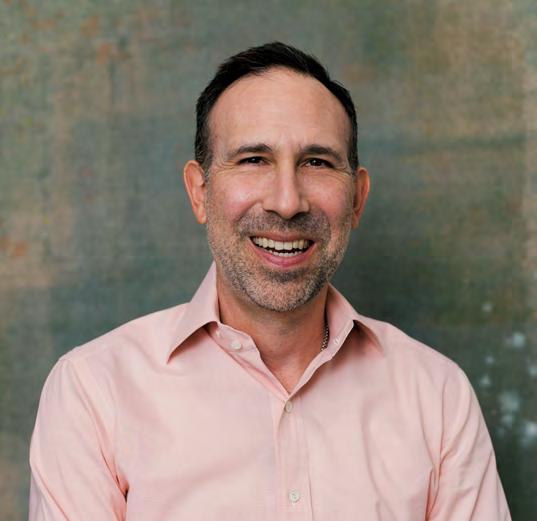
The expansion will also better equip the OB-GYN team to achieve their mission to offer early and consistent care to pregnant patients. “Our main goal is to get patients in to receive the first ultrasound during the first trimester,” Papa explains. “If you can identify needs whether those be food, housing, mental health, or physical services [doing that] in the first trimester seems to make the biggest impact.”
And the team will be able to meet those needs more effectively than ever before, since the new clinic will be nestled in the heart of a campus packed with myriad other health services. “You can see all your different specialties within the same area,” Ruiz says. Patients will be able to pick up meds, like antibiotics or prenatal vitamins, at the on-site pharmacy. A doctor wants to test hormone levels? There’s a lab mere steps away.
Palm Springs Family Health OB-GYN Dr. Evan Schwenk believes the proximity will help increase compliance. “And mental health services [are in the same building],” he notes. “Especially with postpartum depression, having the ability to have a psychologist there and available to talk to is going to be amazing.”
Improved access to what one might call auxiliary obstetric care options like massage and yoga will also support healthier pregnancies. “These can really alleviate some of the discomfort that a pregnant mother will have, and provide strengthening and overall improved health,” Papa says. “It can be hard, when an individual has dedicated a pretty significant amount of time to attend to just the basic needs of her pregnancy, to then feel like she has time and energy to look further for those other services. It’d be exciting to see how they can utilize those services when they’re just right next door.”
This holistic model of care takes cues from models developed during the HIV/AIDS crisis. “[That time] taught us that when you bring nutrition, housing, transportation, mental health, and dentistry into health care, you get better health outcomes for your patients,” Brinkman explains. “Integrative care acknowledges culture. It acknowledges social and economic factors. And those reduce health disparities to ensure people who are marginalized receive equitable health care.”
Memories of the epidemic in the United States are shaping the incoming clinic in another way, as well. Swearman leads what DAP Health calls its Impact Tours walkthroughs of the Sunrise campus that help current and potential donors better understand the organization’s mission and the role it plays in the lives of its patients.
“We’ve heard from quite a few of the men who have taken the tour, ‘You know, the women in our community took care of us in the early ’80s during the AIDS crisis, especially lesbian women in the community,’” Swearman says. “‘They really rose up for us, and it’s about time we return the favor and give back to them and support them in their journey to the health that they so richly deserve.’”
Five-year survival from all breast cancers is 91%, thanks to early detection.
Free mammogram events for DAP Health patients. Find one near you.

DAPHealth.org
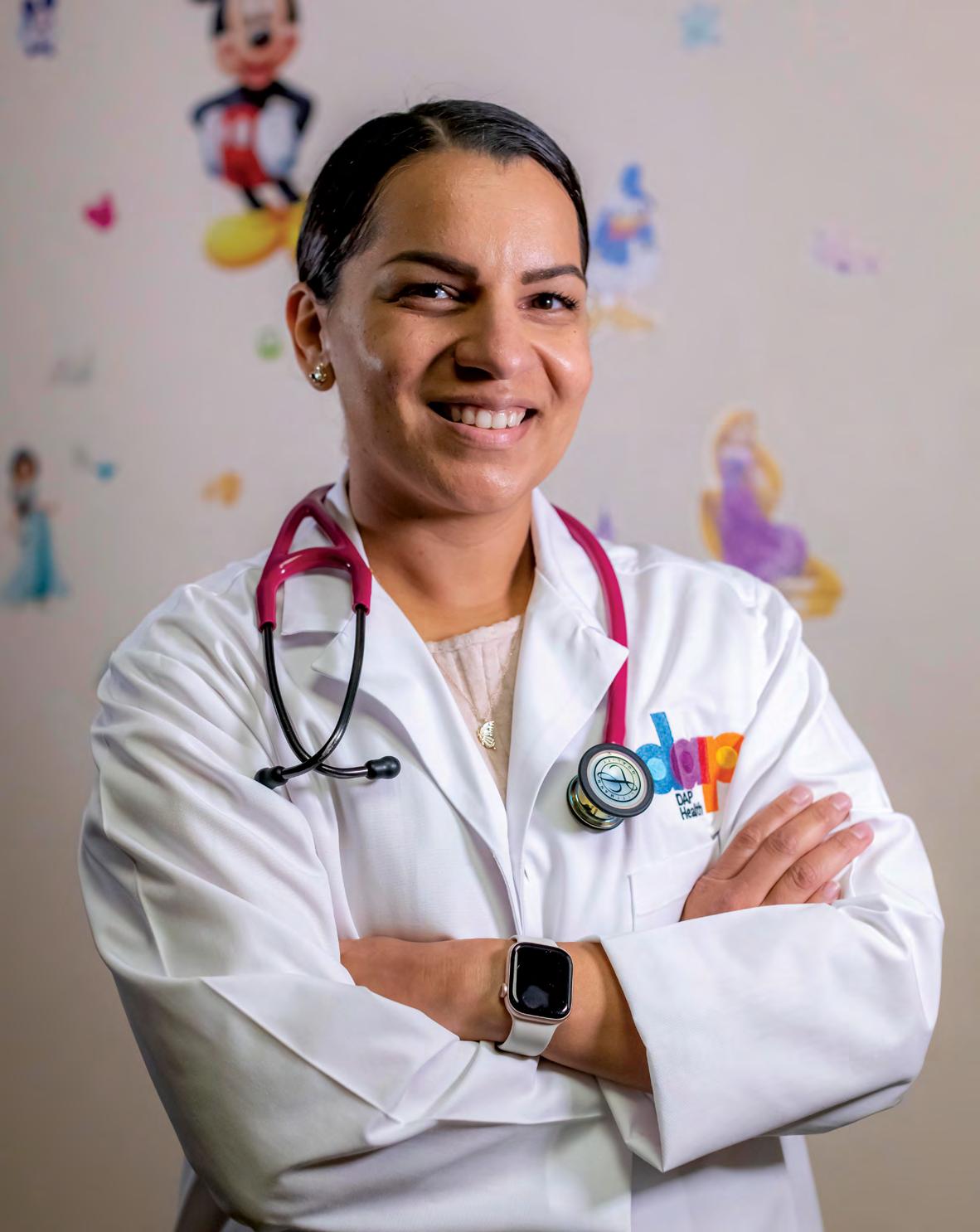
With expert care and whole-family support, DAP Health helps children thrive by helping them hit key CDC developmental milestones and laying the foundation for lifelong wellness.
Words by Maggie Downs • Photo by David A. Lee
Elizabeth Peterson pulls out her phone and scrolls through the CDC’s Milestone Tracker app. Her daughter Grace is 2, and this has become a familiar family ritual checking in, seeing what’s next, celebrating progress.
“The milestones give me a jumping-off point for conversations with our pediatrician,” explains Peterson, who happens to be the internal and executive communications manager at DAP Health. As a private-pay client at DAP Health’s pediatric clinic, she appreciates having both the digital tool and expert medical guidance working together. “The app helps me know what questions to ask.”
Peterson’s experience mirrors a growing reality for many parents: raising children in an era where information is easy to find, but interpretation often requires professional insight. With the CDC’s developmental milestones especially following their 2022 revision families now have a clearer map for tracking growth and a shared language for discussing it with providers.
Understanding developmental milestones
Developmental milestones are key skills most children are expected to reach by certain ages, from smiling and waving to stacking blocks and using two-word phrases. The CDC organizes them into four areas: social-emotional, language and communication, cognitive, and movement and physical development. These benchmarks cover ages 2 months 5 years, offering a practical framework for understanding typical development.
But in 2022, the CDC made a pivotal change. Instead of setting milestones based on when 50% of children achieve them, the bar shifted to the 75th percentile. That means a child who hasn’t met a milestone by the listed age is more likely to have a true delay rather than simply being on the later curve of typical development.
DAP Health Director of Pediatric Services Dr. Jasmin Brown believes this change has improved the accuracy and relevance of developmental guidance. “Prior to the change we were overwhelming the specialists with kids who did not really need services,” she says. “Now, if your child is not meeting a particular milestone, there is a better chance that this is a true delay, and if referrals are being placed, it is because the child really needs it.”
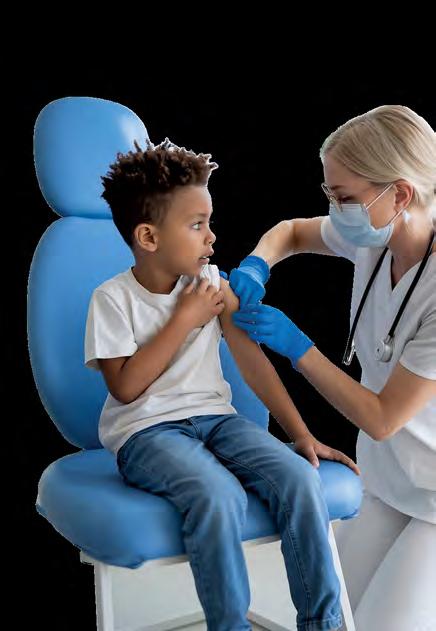
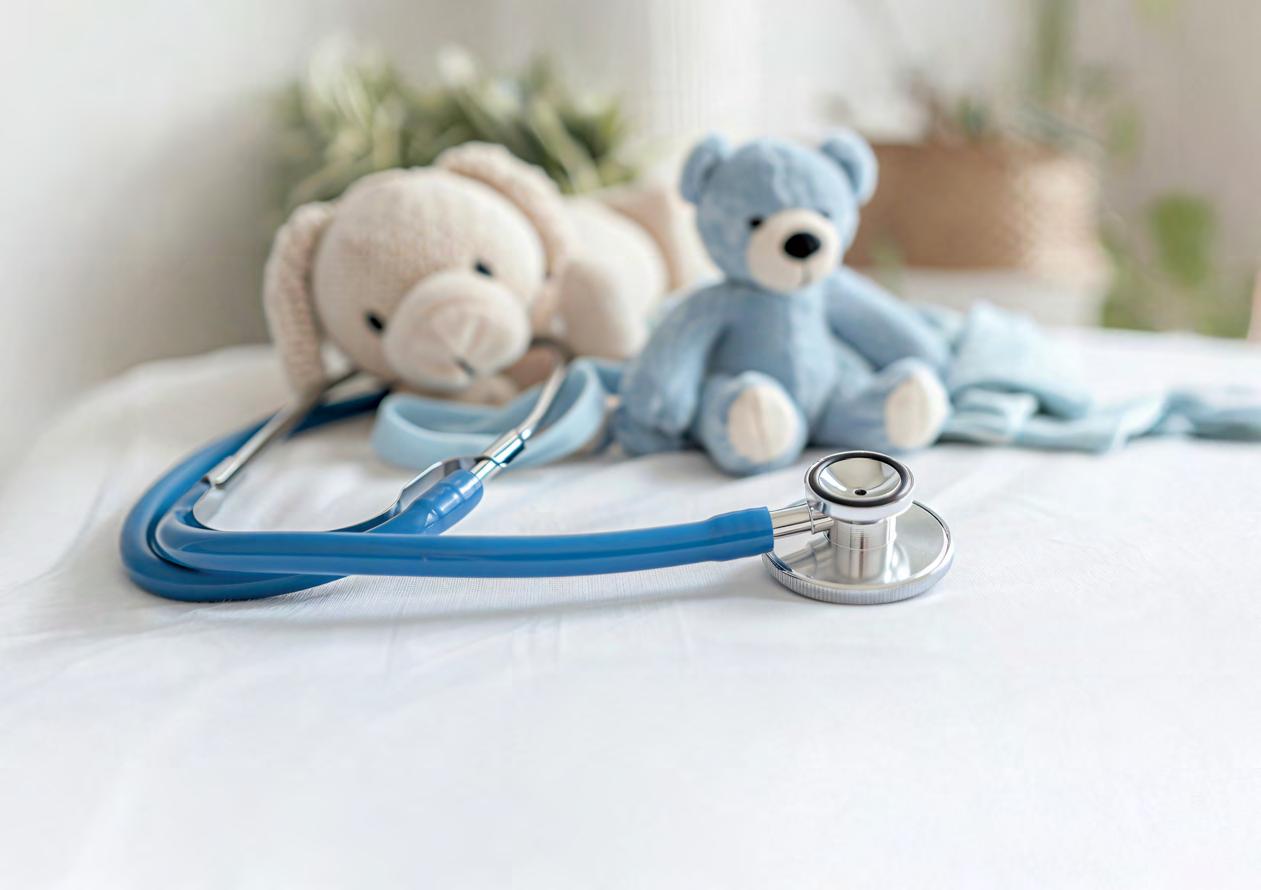
While these new benchmarks help sharpen clinical accuracy, they also shift how parents experience their child’s growth reducing unnecessary worry in some cases while prompting earlier action in others.
“I don’t panic if my daughter isn’t doing something exactly on schedule,” Peterson says. “The milestones help me understand the range of normal, and my pediatrician can put things in context.”
At DAP Health, milestone tracking is just one part of a broader, relationship-based approach to pediatric care. The clinic provides a full spectrum of services routine checkups, vaccinations, screenings, and a strong emphasis on developmental support all tailored to the individual child and family.
“My job as a pediatrician is to assess and monitor the growth of a child and that includes, especially, their developmental growth,” Brown explains. “I ask about development at every physical or well-child check, and sometimes in between, if there’s a concern. If we spot a delay, we want to address it quickly.”
That proactive mindset is especially key when it comes to early intervention. “There’s no harm in a sooner evaluation,” Brown adds. “If there is no delay, that’s great! And more likely than not, parents get to leave that appointment with extra tools to continue to help their child advance through their milestones.”
Tools like the CDC’s Milestone Tracker app give families immediate access to development benchmarks and strategies for support. They also open up dialogue, allowing parents to come to appointments prepared and informed.
“I downloaded the app the day we came home from the hospital,” Peterson reveals. “My sister used it with her own children, and I saw how great of a guide it is for support and education from day one. Not every parent has extensive knowledge about child development, but the app gives everyone a baseline understanding.”
Providers like Brown see this accessibility as a strength, especially when it builds confidence and trust. “I love that the CDC is transparent with the milestones,” she says. “Parents can look them up at home, see where their child stands, and bring up any concerns at their next visit. It creates a stronger partnership between parents and clinicians.”
Even with good data and expert tools, child development doesn’t follow a straight line. Some children hit every milestone early. Others skip steps, regress, or progress in spurts. What matters is staying engaged with the child.
“Some families prefer to ‘watch and wait,’ especially if they’ve had other kids who were late talkers,” says Brown. “But that doesn’t apply to every child. The sooner we evaluate a possible delay, the better chance we have of making a real impact.”
For families accessing pediatric services at DAP Health, the key lies in treating milestones as one piece of a larger puzzle. Regular pediatric visits, open communication with health care providers, and attention to each child’s unique developmental trajectory create a more complete picture than any single assessment tool.
“I know early intervention is astronomically helpful,” concludes Peterson. “The milestones give me structure, but my pediatrician gives me wisdom. Together, they help me support my daughter’s development in a way that feels informed.”

DAP Health Director of Pediatric Services Dr. Jasmin Brown helps you navigate your child’s health.
My child doesn’t eat vegetables. What do I do?
Try not to stress. Oftentimes, it’s about repetition and recurrent exposure. Most kids do a good job with fruits, and many have the same nutrients as vegetables, so that does help.
In general, no one likes bland vegetables. Get creative with different ways to serve vegetables (raw, baked, sautéed, broiled, stuffed) the options are endless. Don’t forget to add seasoning (limit salt) to help cater to their palates. I have a 4-year-old myself, so I get it! Creativity can also go a long way. I have tried to cut it into different shapes, blend veggies into spaghetti sauce… The internet is a great tool for suggestions!
Even if the child has said no in the past, continue to offer these veggies, and model good behavior! Sit at the table with them, sharing the same or similar meals, and model how eating vegetables can be fun and taste good, too.
In my house, we offer the foods my daughter gravitates to, last. So, she picks at the other food options and then she can get the carb/fruit at the end. This encourages her to at least try other things on the plate. If she tries something new or something she has said no to before I praise her behavior for at least trying it, even if she was not a fan.
Progress over perfection. Keep showing up, keep modeling, keep offering. At the end of the day, the kids are OK.
Are vaccines safe?
This is a hot topic right now and really, it doesn’t need to be. Nothing with vaccines has changed, but misinformation has wildly spread, suddenly resulting in vaccine hesitancy.
As a pediatrician, the strongest, most valuable tool in my tool belt are my vaccinations. Vaccines prevent countless (millions, if we are counting) deaths and debilitating diseases every year. I have, unfortunately, seen children die of diseases preventable with vaccines, and this should never, ever have to happen. Not when we have safe options to prevent it.
While I can talk on this subject for hours, I will keep it short and sweet. If you have questions or hesitations about vaccines, please talk to your pediatrician. As doctors, we give vaccines all day, every day, to children and adolescents, and can discuss with you the safety profile and our experiences with them. Bring questions that you find online to your doctor so that we can discuss them together.
And I cannot stress this enough look to credible websites like the CDC, NIH, and the WHO to help you understand vaccines based on the evidence. Evidence from studies that are conducted regularly to continue to ensure vaccine safety and efficacy.
As a pediatrician, the strongest, most valuable tool in my tool belt are my vaccinations. Vaccines prevent countless (millions, if we are counting) deaths and debilitating diseases every year.
Vaccines are safe. Vaccines are effective. Vaccines save lives. As pediatricians, our job is to protect the health the life of your child, and vaccines are 100% part of that equation. I always tell my patients’ parents that my family (including our 4-year-old daughter) and I are fully vaccinated for our ages. If I recommend anything to you for your child (medications, treatments, vaccinations), it’s because I would absolutely do the same for mine.
My newbor n has a lot of eye boogers. Is that OK?
Probably, yes! Of course, always speak to your doctor for an evaluation for confirmation. But more than likely, this is something called nasolacrimal duct obstruction and it is super common. All it means is that your baby’s tiny little tear ducts are plugged, and instead of tears draining into the duct, the tears accumulate in the eye and result in eye boogers and crusting.
Typically, this looks like excessive crusting when they wake up from sleep, with an otherwise normal eye appearance. That is the most important part. That the whites of the eye remain white, and there is no swelling anywhere around the eye. If the whites of the eye are pink or red, and/or the eyelids or the duct (corner of the eye next to the nose) are swollen, serious infection needs to be ruled out immediately.
However, if the eye is normal and there is just goopy-ness and crusting, this is very likely just the duct obstruction. Treatment is simple, with warm compresses and duct massages a few times a day. I often see newborns following up from urgent care, having had a prescription for antibiotics, when in fact, it was just the tear duct obstruction. Unless the eye has red flags (as mentioned above) and needs urgent attention, talk to your pediatrician to confirm the diagnosis and treatment plan.
My child is sick every two weeks. Is that normal?
This is a common question I get, and am likely to get even more when the school year starts up. We expect children to get upwards of 8 to 10 colds or more per year! That’s roughly one a month, and during the holiday/winter season, it can be about every two weeks.
As a parent of a young child myself, I understand the frustration. Kids (especially school-aged kids) are prone to recurrent colds. Think of kids as little petri dishes, if you will (LOL). When they are sick, they do not do a great job of keeping their infected boogers and mucus to themselves.
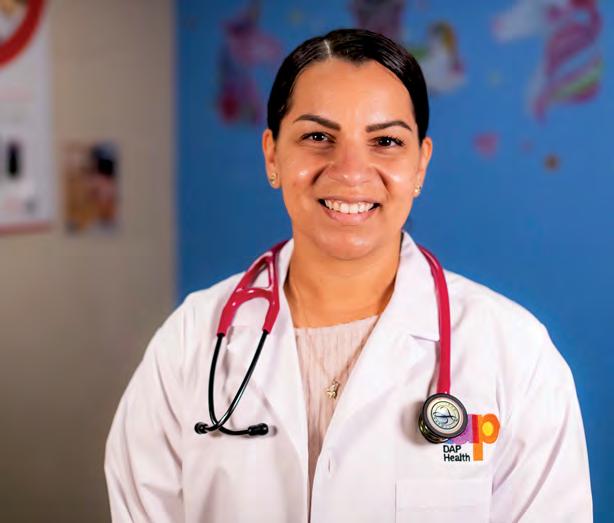
They spread their illness to others who are near them, who inhale or ingest (yes, ingest) their infected secretions. And kids, in general, can’t keep their hands out of their mouth. So, at school, the playground, the store, wherever they go, they unknowingly touch infected surfaces and then put their hands in their mouths, exposing them to in this case a cold virus.
This can happen at any time, any season, any location. This does not mean your child has a weak immune system. It just means they are exposed to a lot of cold viruses. The body makes protection for cold viruses, but the protection only lasts a few months, so reinfection is common.
Because of the frequency of colds and the ease of contracting them, our scientists have created vaccinations for the most historically dangerous cold viruses (influenza, COVID-19, RSV). These vaccines have proven to be lifesaving, and are highly recommended to prevent severe illness or death.
As we soon enter upon the holiday season am I getting excited too early?! talk to your pediatrician about these vaccinations and when they’re recommended for your child.
MyChart: Your Health, in Your Hands. Access your care anytime, anywhere.
• View your provider’s notes
• Book, change, or check in for appointments
• Request prescription refills

• See test results
• Send secure messages to your care team
Despite national naysayers, remember that vaccines keep you, your loved ones, and your community healthy.
Words by Maggie Downs
When DAP Health’s Dr. Bernard Wosk speaks about vaccines, he does so from experience. “I come from a third world country, and I saw the devastation of infectious diseases in a way most people in the United States are not exposed to,” says the Centro Medico Escondido pediatrician. “I still get chills when I think about seeing the neighbor who died of tetanus. I was 6 years old. My other neighbor died of polio.”
In his native Nicaragua, such tragedies were part of life in communities without vaccination. That’s why the resurgence of preventable illnesses feels to Wosk both personal and unnecessary. “Fortunately, the vast majority of my patients do believe in vaccines,” he says. “I consider myself the vaccine doctor, because I convince people who are not vaccinated to get vaccinated. It’s too important.”
The rise of skepticism
During COVID-19, misinformation and political divides eroded public trust. CDC data show vaccination coverage for children born in 2020 and 2021 dropped compared to earlier years.
Even small dips matter. For highly contagious diseases like measles, a 1% decrease weakens herd immunity. “Maybe being unvaccinated doesn’t affect the child. But that action could affect someone who’s more vulnerable, who then gets sick, who’s then hospitalized, who then passes away,” says Nikki Washington, DAP Health’s immunization coordinator. “You end up with a more serious or deadly situation that could have been prevented.”
History proves the value of vaccination: smallpox was eradicated, and polio is so rare today that most young doctors have never witnessed a case.
Adults need vaccines too
“Every recommended vaccine is there for a reason,” says DAP Health Director of Infectious Diseases Dr. Shubha Kerkar “Every one of them is extremely critical.”
Adults require boosters and age-specific vaccines, from flu shots and Tdap boosters to shingles and pneumococcal protection.
Some vaccines even prevent cancer, like the HPV vaccine, which protects against cervical and throat cancers. Hepatitis B is another vaccine-preventable virus that causes liver cancer, while hepatitis C though curable remains a global challenge.
“It’s difficult to rebuild trust in vaccines, especially when it’s rooted in political identity or misinformation,” Kerkar says. “We have to continue to serve as a trusted local messenger. At a time when it’s easy to feel powerless against global health threats, vaccines remain a clear, proven way to take action. Anti-vaccine sentiment may have clouded the conversation, but the facts haven’t changed. Vaccines work. They save lives.”
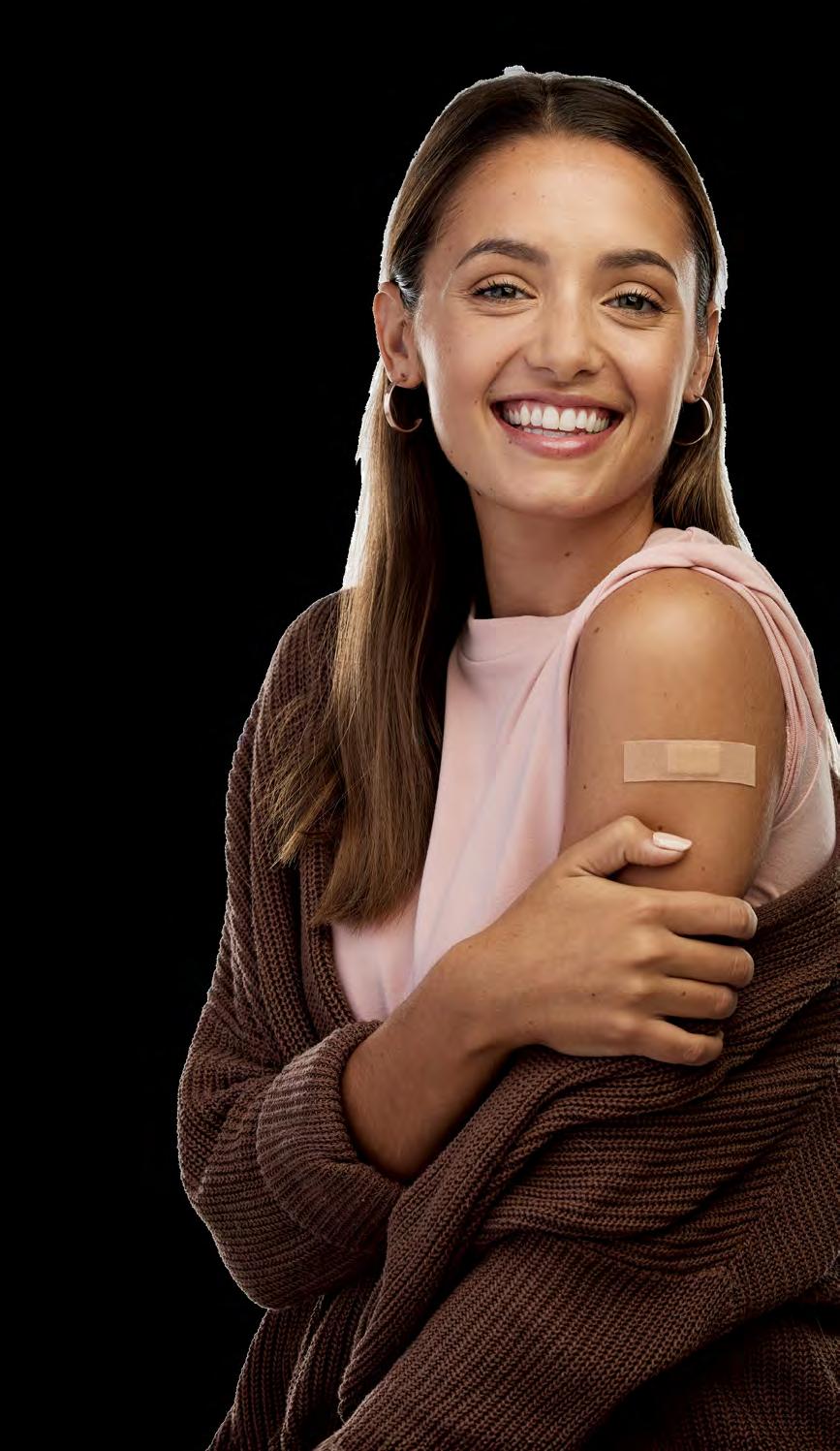
That old adage is now backed by science.
Words by Diane Anderson-Minshall

My grandmother was onto something when she said, “You are what you eat.” Turns out, it’s not just an oldfashioned warning. It really is true.
Each bite you take becomes part of you. The amino acids in foods make your arms and legs strong, fats help your brain cells, and calcium and phosphorus make your bones hard. Even your gut bacteria which are influenced by what you eat affect your mood and mental health through the neurochemicals they make.
When you eat high-quality proteins, your body efficiently repairs and builds muscle. When your food is empty calories, your body struggles to keep things running smoothly.
This rebuilding process is happening constantly. Your intestinal lining is new every three to five days, skin cells regenerate every two to three weeks. Even your bones can repair and regenerate themselves. How beneficial these new cells are is entirely dependent on what food is in your body when they’re forming.
Highly processed foods, including refined sugars (think food made on a factory assembly line), create inflammation that damages your cells and can lead to serious health issues. But by choosing whole, nutritious foods, you give your cells the premium ingredients they need to keep you energized, focused, and feeling your best. And it’s not hard.

Gustavo Wong, a registered dietitian nutritionist, certified diabetes educator, and exercise physiologist at DAP Health, has refreshingly straightforward advice: “Moderation,” he says, is the key. Eat healthy foods more frequently, and eat less healthy foods less often if at all.
Wong adds that “there is a long list of health conditions caused by poor nutrition and/or that can be improved with better nutrition. We need to go back to nature wholesome, real foods that are tasty and enjoyable.”
Bombarded by diet advice from friends, health sites, Facebook, and TikTok, it can be difficult for most of us to figure out whether we should be eating keto, paleo, Atkins, DASH, MIND, or Mediterranean.
Wong keeps it simple. “The best way to nourish ourselves is by eating foods from different food groups daily balanced, unprocessed foods with no (or minimal) additives.” And while he recommends a primarily plantbased diet, he says you don’t have to go vegetarian or vegan.
“It is more important to be mindful of what we choose to eat, and how much and how often we eat them,” he explains.
Ditch the drive-through. Sure, it feels quick and cheap, but that combo meal is highway robbery compared to home cooking. For the cost of an Egg McMuffin meal, you can buy a bag of oatmeal, bananas, and eggs, which gives you multiple breakfasts. When eating out, stick with salads, grain bowls, or grilled options. In the Coachella Valley, drive-through WaBa Grill offers rice and veggie bowls with grilled protein; Luna Grill has grain bowls and kebabs; and some local farm-to-table cafes even serve organic, seasonal dishes all in the $10-12 range.
Watch out for malnutrition. Busy and older adults who no longer have time, money, or ability to cook for themselves are at risk. Wong explains that “malnutrition happens in industrialized countries when people consume primarily highly processed foods ... [as] the main source of nutrition. There is imbalance in nutrients that the body needs, foods are digested at modified abnormal rates, and inflammation can occur.”
Avoid inflammation. We are learning that inflammation, especially chronic inflammation, can lead to numerous health issues, some of which, Wong says, “have no symptoms at all until there are irreversible damages.”
Go Mediterranean. If inflammation is a concern, try eating Mediterranean style. “Many meat foods and highly processed foods are the main cause of inflammation,” Wong says. The Mediterranean diet is about fresh fruits and greens, whole grains, olive oil, beans, and fish. “The best way to eat to help minimize inflammation and get well.”
Or MIND your Ps and Qs If you are worried about your brain health, research so far supports the MIND method. The MIND diet mixes the Mediterranean eating style and the reduced-salt DASH diet to help you lower the risk of dementia as well.
Pass on packaged food. What do these eating styles have in common? They are all about whole (single source) foods from lean meats, plants, and good fats (olive oil, nuts, fatty fish). Gradually reduce the red meat, full-fat dairy, and especially, foods from a box.
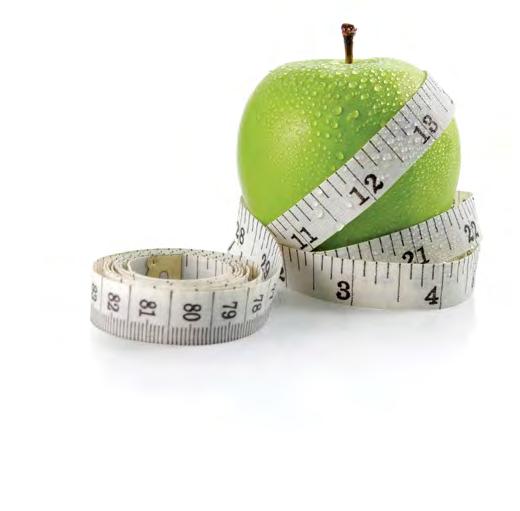

If you want to lose weight, think twice about Glucagonlike Peptide-1 Receptor Agonists (GLP1-RAs) like Ozempic and Wegovy, says Wong, as there are a couple of areas of concern. “First are some serious side effects [including] significant nausea and decrease of appetite,” he admits. “When someone is eating a lot less, it is possible for the person to become malnourished, even when that person is considered overweight. The consequential effect is significant muscle loss, which generates a list of health concerns.”
And gastric bypass or other bariatric surgeries? Gastric bypass works very well for some years. “Better than extreme diets,” Wong suggests, “but both and in similar fashion with GLP1-RAs can cause malnutrition and muscle loss. It is particularly important for all individuals who have subjected themselves to any of these treatments to get regular evaluations to find out where they are in terms of various health parameters and seek realistic solutions that can support and enhance the body on a long-term basis.”
Don’t focus on fads, Wong insists. Consider the full picture. “The amount, the practicality, and the degree of the effects need to be factored in,” he maintains. And then, more importantly, you need to ask yourself if the potential benefits which are important to honestly define outweigh the potential side effects, including long-term negative effects.”

Start small. The best way to make a real change, Wong says, “is having ready-to-eat fruits and vegetables around.” Eating your faves and trying out new ones with a positive approach can make a significant difference. “Nuts and seeds can cost a lot,” he acknowledges, “but a small bit each day can do miracles to our satiety level and blood work [reducing] cholesterol and inflammatory agents.”
Clean your plate. Wong suggests his clients use the Plate Method, in which half the surface is filled with vegetables (things like spinach, broccoli, kale, carrots, peppers, and green salad). The other half of the plate is divided between healthier protein sources (things like fish, tofu, eggs, chicken, nuts, and seeds) and healthy whole carbs (things like whole grains, oats, brown rice, quinoa, beans, lentils, peas, sweet potatoes, even the occasional regular potato). And fruit! After all, that is the healthiest dessert. “The Plate Method is much easier to follow, and it is more flexible, so it can be more readily applied anywhere,” Wong adds, “be it at home, at work, at parties, while traveling, etc.”
Watch your wallet. Buy foods that last, like beans, nuts, and grains. Buying generic store brands will save 20% or more. Some frozen veggies have more nutrients than fresh food that’s been shipped in, especially greens. Have one prep day, where you whip up batches of beans, grains, and soups so you have good fast food all week. Brown rice, black beans, cooked greens, and a bit of cheese give you decent fiber, protein, vitamins, and minerals for less than $3 a meal. Top oatmeal with frozen berries, nuts, and ground flaxseed for great antioxidants, fats, and fiber for about a dollar a meal. Meanwhile, homemade Crock-Pot soup with whichever greens are in season, any beans, and whole grains costs less than $2 per meal.
Overall, your focus should always be on how many high-quality nutrients are in your food. Keep in mind: you are what you eat. Make every bite count.


Think twice before popping another unprescribed vitamin or mineral, says Wong. “There are now more recent studies proving supplementations are neutral or potentially harmful.”
In fact, in the Annals of Internal Medicine, Johns Hopkins researchers found that while 50% of all people and 70% of seniors take vitamins and supplements (spending $12 billion annually), most would be better off spending that same money on nutrient-packed foods like fruits, vegetables, whole grains, fish, and low-fat dairy.
Turns out, multivitamins might not be necessary for most folks and can have negative impacts. Other supplements like potassium; vitamins A, D, E, and K; and iron can all be harmful in excess. Talk to a dietitian if you’re worried you aren’t getting enough vitamins and minerals from your diet.
There’s not a lot of support for some popular supplements like glucosamine, biotin, or magnesium (though they’re useful for certain people). However, the following supplements have proven benefits (when one is deficient in them), especially for specific populations. Ask your doctor if you need one or more of these:
Calcium prevents osteoporosis but also regulates your heart rate and blood-clotting ability. Low-fat dairy, kale, broccoli, and sardines are other ways to get it.
Cranberry prevents recurrent UTIs, and is often prescribed for urinary tract disorders in women and seniors.
Fiber (e.g., psyllium) supports digestive health, lowers cholesterol, balances blood sugar, and boosts good microbiomes. Most dietitians, however, would recommend that you get more fiber from your food.
Magnesium maintains muscle and nerve function, sleep, blood sugar, and heart rhythm.
Omega-3 (fish oil) lowers triglycerides and inflammation, thus helping your heart. Eating fatty fish (tuna, salmon, sardines) is also a great way to get it.
Probiotics help gut support after a round of antibiotics, but for some folks, continual use might be prescribed.
Vitamin B12 supports nerve health, red blood cells, and metabolism.
Vitamin B6 helps with neuropathy.
Vitamin D supports bones and the immune system. Almost everyone needs it especially residents of states with dark winters, and people of color because it’s hard to get enough from food. This vitamin is fatsoluble, and it’s best to take baseline levels and then be continuously monitored by your primary care physician to make sure you’re not getting too much.
Zinc helps immune support and may shorten colds.
Guess what? If you don’t want — or can’t afford — an expensive gym membership, there’s no need to feel pressure. Just DIY.
Words by Kent Black
There is a dilemma inherent in working out.
To get in shape, the logical course is to join some kind of club or gym that offers the best selection of equipment and exercise programs. But no one place can do it all. For instance, I go to the Palm Spring Swim Center public pool to swim laps, to my gym for weight training, and sometimes to Palm Desert for a yoga class. The cost is bad enough, but the expenditure in time is ridiculous.
Secondly, there is the irony of looking halfway put together when you go to any exercise emporium. No one wants to be on public display when they look like a rumpled Kleenex that just fell out of bed. So then there’s the added hassle (and irony) of grooming and putting on some decent attire just to get sweaty.
I fretted when I started swimming again a couple months ago, because I thought I’d look ridiculous striding about the public pool in a Speedo scarcely masking my golfer’s tan. But the alternative was to lie out in the sun and even out my coloring, which didn’t seem the healthiest of choices.
And that brings us to the heart of the matter: If the point of exercise is to relieve stress and improve our health, then why subject ourselves to a course of action that increases personal anxiety and financial trauma, and may end up making us feel miserable?
The logical next step is to take spending time and money out of the equation.
“My ex-husband used to say the best gym is the one closest to your home,” says personal trainer Jill Langham, who has been working people out (including DAP Health staffers) for the last 19 years at Steel Gym (formerly known as World Gym), across from DAP Health’s headquarters at the corner of Vista Chino and North Sunrise Way in Palm Springs. “And I say the best gym is the one in your home.”
Langham says one of the first steps is to define your exercise goals. “First of all, it should be about losing fat,” she maintains. “You want to keep your muscle. If that’s the goal, then you have to start your program with nutrition. Secondly, do you want cardio or strength training? I would also add flexibility. As people age, they tend to lose their balance and once that goes, a person can decline quickly.”
Here are a few tips to getting started:
Cardio
Start modestly and get the Steps App, starting with a goal of 3,000 to 4,000 steps per day. Increase a little more every day. A more robust in-home cardio challenge is jumping rope. It is legit hard, but the cost of equipment is low, and once you get the knack, there is no more intense cardio workout. Finally, who says cardio can’t also be fun? Make a half hour or 45-minute mix of your favorite dance songs: Afro Cuban All Stars, ’70s disco, Bob Marley and the Wailers, whatever. Press play and start dancing. Soon, you’ll be up to an hour. Yes, it will be exhausting. But it will also be fun and you will see results!
Strength Conditioning
You don’t need to go out and buy weights and kettlebells. All you need is you. Bodyweight exercises are ones where your own mass provides the challenge. The most common is pushups. There are also squats, burpees, jumping jacks, plank, lunges, and dips. Want to pump up those biceps? Get two-gallon juice jugs with handles. When you’ve finished the juice, fill the jugs up with water to the degree of resistance you want. It’s not necessarily about loading them up to capacity It’s about reps and lifting them slowly to get the best results.
There are dozens of stretches that will get the kinks out, but really nothing beats a simple yoga routine for relaxing muscles from head to toe. Don’t be intimidated. There are very basic, accessible routines available. My favorite is Eoin Finn’s “Quickie.” It takes less than a half hour. After a couple weeks of practice, your flexibility and balance will be improved significantly. Alternatively, tai chi is excellent for restoring balance.
It’s never too late to learn to eat a healthy diet. Need help getting started? DAP Health has some of the desert’s best nutritionists on staff. They can help you construct a meal plan that will complement and enhance your fitness goals. Go to DAPHealth.org, or call 760.323.2118 to learn more.
Finally, Langham says the key to successfully working out at home is self-motivation and discipline. For all the cost and hassle of going to a gym, it enforces attendance because you’ve made the financial commitment. An exercise routine at home is much easier to blow off for a day, a week, a month. “The key,” says Langham, “is your commitment. It comes down to one question: Can you keep your word to yourself?”

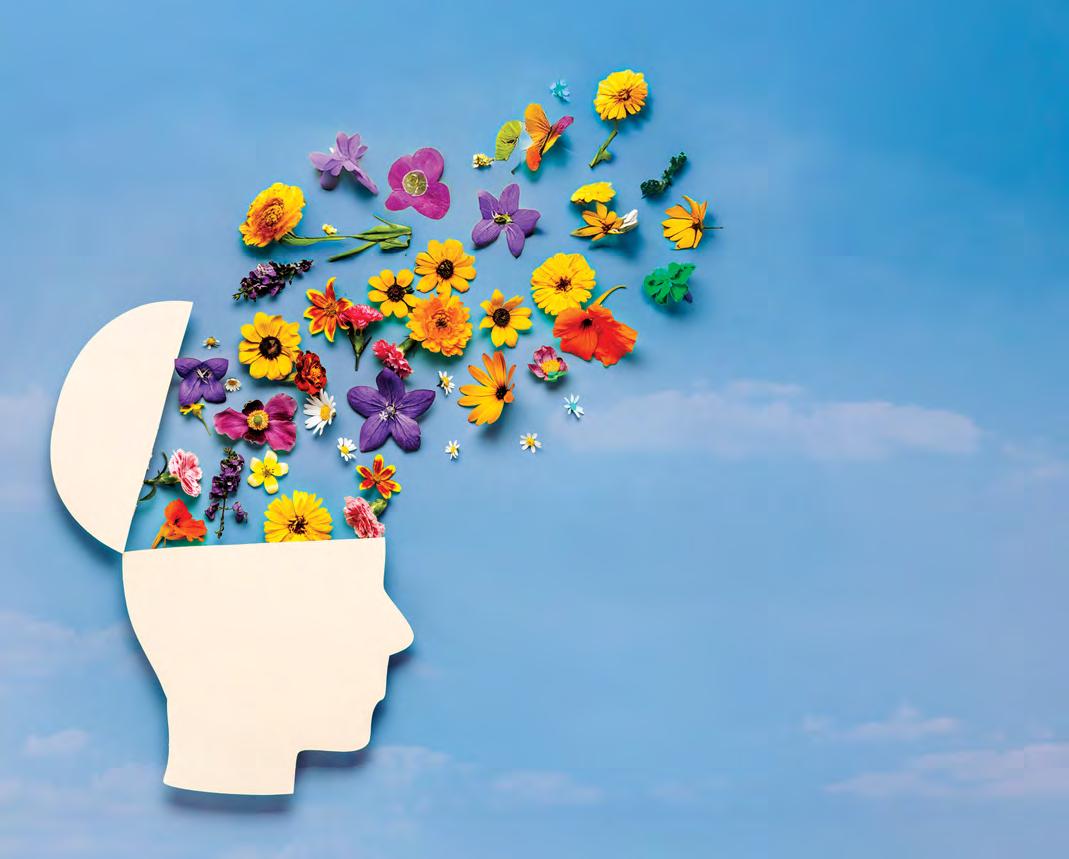
Winnie the Pooh and fairy tales helped pave the road to mental health awareness. Today, neuroscience is building a superhighway to a hale and hearty brain.
Words by Kay Kudukis
Some 25 years ago, the Canadian Medical Association Journal published a cheeky paper titled “Pathology in the Hundred Acre Wood: A Neurodevelopmental Perspective on A.A. Milne.” The piece whimsically diagnosed “Winnie the Pooh” characters with psychiatric conditions Eeyore with depression, Piglet with anxiety, Tigger with ADHD. It wasn’t science. It was “science adjacent.” But most importantly, it was a conversation starter, something mental health professionals had been trying to do for the greater half of the 20th century.
The history of mental health is heavy demonic possession heavy. That held sway until the 15th century, when demons finally fell out of fashion and the new villain was moral weakness dressed in shame. (At least demonic possession wasn’t your fault!)
Psychiatry means “healing of the soul.” That was coined in 1808. Not surprisingly, ideas were all over the place. Austrian neurologist Sigmund Freud suggested it was all about sex and aggression but mostly sex. His biggest contribution is the still highly recommended psychotherapy.
Then, Swiss psychiatrist and psychoanalyst Carl Jung proposed that humans share a collective unconscious. Just like birds fly south, we have a factory-installed, hardwired, psychological inheritance of 12 archetypes (the hero, the mentor, the rebel…) prevalent in the world’s myths, religions, fairy tales, symbols, and art.
That Jungian seed eventually gave rise to the fairy tale pop psychology of the ’80s like the Peter Pan Syndrome (won’t grow up), one of more than 20 so-called “disorders” that joined the cultural lexicon. Mental health had officially entered the zeitgeist.
Now it’s time to give it up for President George H.W. Bush who, in 1990, proclaimed, “Let us mark the Decade of the Brain by reaffirming our commitment to biomedical research and by applying the full force of our scientific resources to the study of the brain.”
The term “emotional disturbance” was corrected to “biological brain disorder.” And in 1998, Dr. Michael Gershon exploded onto the field with his book “The Second Brain.” Not that one. Your gut! Over 90% of the body’s serotonin is produced there not in the brain.
In a healthy system, when the brain signals stress or panic, the gut consults the body before sounding the alarm. It’s a system of checks and balances. But when your gut is inflamed or out of sync, your brain suffers too.
Just like diabetes, mental illness can have a genetic component. However genes are just the blueprint. Your environment does the building. Even without genetic risk, growing up with trauma increases your likelihood of developing depression, anxiety, PTSD, or substance use disorders by four to 12 times.
Neuroscientist Christof Koch called the human brain “the most complex structure in the known universe.” One of its defense mechanisms? Rewiring itself. Under chronic stress, the brain may shrink one region to support another in distress like the amygdala expanding while the hippocampus shrinks. Over time, this can lock your brain into fight-or-flight mode, changing how you perceive the world. Addiction does something similar reshaping circuits related to reward, impulse control, and decision-making. It’s a biological reaction, like blinking.
The new millennium and DAP Health
In 2019, the World Health Organization estimated just under a billion people suffer from mental health issues. Half of all lifetime mental illness starts at age 14. And one in every two teens will face a mental disorder. One in five will face one so severe it could shape their entire future.
The current standard of care is two visits a year to a primary health clinician, twice a year to the dentist, but not even a, “Hey, how ya doing?” for the big cheese of the whole operation the brain. One wonders, “How come?”
“As children’s brains develop, they’re taught academic subjects like math and science foundational knowledge that prepares them for life,” explains DAP Health Director of Behavioral Health Sharareh Gandy, Ph.D. “But what’s often missing from the curriculum are mental health skill sets that foster emotional resilience. This is where psychotherapy can play a key role in teaching and practicing those essential skills. Skills that cultivate emotional and mental wellness can be learned at any stage of life.”
“People can get better, and it doesn’t have to be about medicine,” adds DAP Health’s Dr Sean Barlow, a psychiatrist specializing
in the diagnosis and treatment of neurological disorders. “It’s not just, ‘Here, take this pill, it’s magic.’ It’s about doing the right things for people and making sure they don’t have hypothyroidism when it looks like they have depression, or making sure they don’t have autoimmune illness like systemic lupus.”
Poor mental health doesn’t discriminate
A mere mortal’s simple chat with their primary care clinician can set them on a healing course for mind, body, and spirit wellness. Celebrities suffer too, and by sharing their pain, they often help their followers.
Depression, eating disorders, addiction, and suicidal thoughts Demi Lovato lived through all of these and now speaks about her journey to wellness. Jelly Roll wrote an entire album, “Beautifully Broken,” including “I Am Not Okay,” which has been called “a new anthem for mental health awareness.”
There’s more: Lady Gaga’s Born This Way Foundation. Taraji P. Henson’s the Boris Lawrence Henson Foundation. Glenn Close’s Bring Change to Mind.
Selena Gomez has Wondermind. SZA, the GoodLine hotline. Beyoncé’s BeyGOOD Foundation. And Rosie Perez advocates for mental health in underserved communities.
Finally, designer Kenneth Cole founded The Mental Health Coalition in 2020. It boasts a robust website plus social media channels with resources and tips for those suffering, as well as for concerned family and friends.
The message is simple yet powerful: Stop the shame.




DAP Health’s Dental Services Department takes the stand as expert witness on prevention, protection, and proud smiles that last a lifetime.
Words by Kay Kudukis • Photo by David A. Lee
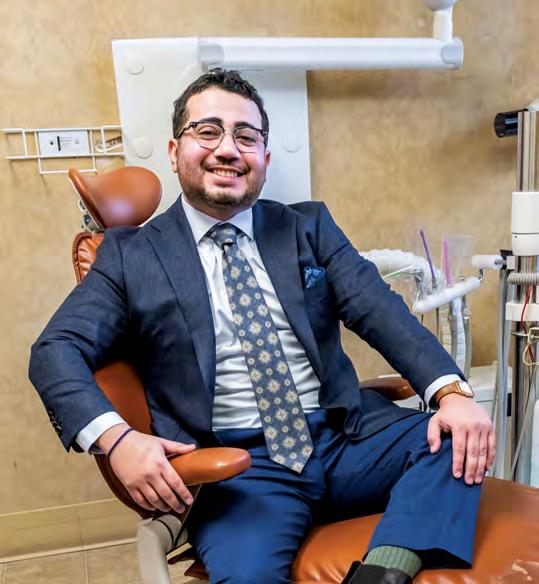
You’re surely aware that diamonds are the hardest (known) naturally occurring substance on Earth. But did you know the number two spot belongs to tooth enamel?
Made of 96% mineral (mostly hydroxyapatite), it’s built to handle the grind of daily chewing and protect the softer stuff underneath. But it’s more like glass than steel. Strong but brittle. It can chip if you bite down wrong, grind your teeth, or tooth-open a pistachio shell. Bones aren’t quite as hard as enamel, but bones can heal. Once enamel’s gone, it’s gone.
Dentistry’s been practiced for more than 7,000 years, but the first 6,800 were brutal. At some point, the job went to blacksmiths and barbers, who’d yank out the offending fang without painkillers (they hadn’t been invented yet) while the patient bare-knuckled it. It wasn’t easy on anyone. Hence the phrase “like pulling teeth.”
Vast improvements have happened over the last 200 years. For one, we actually have dentists. And two, pain management showed up in the forms of nitrous oxide (1844), ether (1846), and Novocain (1905).
But generational trauma is still a thing, and “Little Shop of Horrors” didn’t do dentists any favors. Add to that the anxiety of expense.
The good news is oral care is part of the mind-body-spirit philosophy practiced at DAP Health, and as easy as making a visit to one of the nonprofit’s 10 dental clinics three mobile units, seven brick-and-mortar in Borrego Springs, Cathedral City, Coachella, Desert Hot Springs, Palm Springs, and San Jacinto.
“We take a very patient-centered approach,” explains DAP Health Director of Operations for Dental Ismael Delval. “We treat our clients how we’d want our family members treated, making sure they have a full understanding of what we’re doing, and where we want to be with the condition of their mouth in a few months.”
We’ve known since the latter half of the 20th century that treating children early is the key to avoiding extensive dental procedures as adults. It’s not just about good habits like brushing. We need to protect their molars as soon as they show up.
“Most parents don’t know that the teeth way in the back of the mouth that are growing in at 6 years old are permanent teeth,” says Director of Dental Services Dr. Mercay Romero. “Parents often think, ‘Oh, those are
Schedule your routine cleaning.
Scan the code or visit DAPHealth.org today.

just baby teeth. I’m not going to worry about those.’ But those are the teeth most likely extracted in adults, most likely to need a root canal and a crown.”
In the early ’70s, sealants were developed. “It’s a little cover that’s placed on a child’s newly erupted molar, in the grooves of the tooth, to prevent the child from getting cavities on that tooth,” explains Romero. Dental decay is reduced 80% in the first few years, and the practice can stave off more complex, expensive procedures like root canals and crowns in the future.
California has a program called Transitional Kindergarten School, a bridge between preschool and kindergarten designed for children who turn 4 years old by September 1 and are not yet ready for the traditional kindergarten curriculum.
“Whole health really starts at a very young age, and we go to these schools to educate kids,” says Dr. Natalie Whang, a dentist in mobile dental. “We show them how to brush their teeth, and how to floss.”
But Whang’s main work is in elementary schools. “We do their exams, X-rays, and cleanings. Some kids don’t have a toothbrush at home, and most kids don’t have floss at home, so we send them home with a goodie bag full of things to help them practice better oral hygiene habits.”
Two mobile units are so big they’re hauled by a semi, and that alone gets the kids excited when it rolls up. Whang says they call it “the fun dentist” and “the school bus dentist,” completely overriding the negative narrative of the past, with kids actually looking forward to seeing them twice a year.
Delval says the biggest challenge is finding team members who have the experience, or are willing to learn the level of care DAP Health has become known for, adding that that means being proactive. “We’re contracting with the Milan Institute and other schools to provide externships, and we will be able to train registered dental assistants to get them up to DAP Health caliber, working at the top of their license.”
That phrase, “top of their license,” means each professional does the most advanced, skilled work they’re legally allowed to do. So, RDAs are placing sealants, taking X-rays, and if they’re expanded functions dental assistants assisting with impressions and temporary crowns.
We use our teeth every day chewing, opening a plastic bottle cap (don’t do that) yet it’s the sparkly diamonds we value. What about the sparkly smile? And sidebar, you can’t even say teeth without your front ones.
Allow the record to speak for itself: A great smile starts early, speaks volumes, and stands up under scrutiny.
And with that, the defense rests.
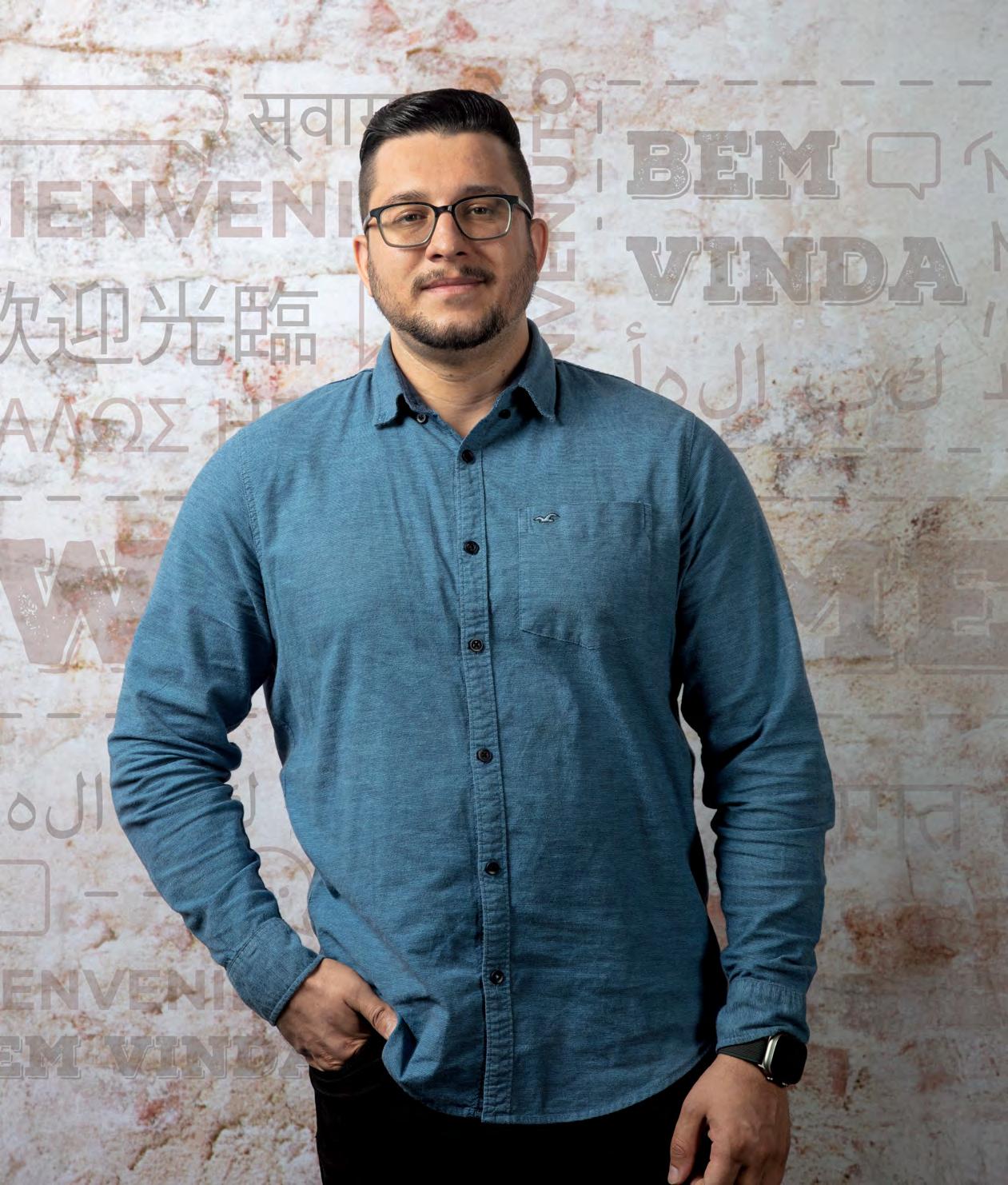
For patients whose mother tongue is other than English, language can be a barrier to the best health outcomes. That’s why DAP Health doubles down on efforts to provide the clearest of communication.
Words by Fabiola Berriozábal • Photo by Scott Rohlfs
Every time DAP Health interpreter Ahmad “Sam” Hakimi an Afghan refugee walks into an exam room at Centro Medico El Cajon, he’s doing much more than translating Farsi into English, and vice versa. He’s building a bridge between fear and understanding, and between provider and patient, so that the latter can fully receive the care they need and deserve.
Hakimi is one of several in-person interpreters employed at DAP Health, which serves some 88,000 patients across 25 fixed locations and eight mobile units throughout Riverside and San Diego counties. Many of these individuals aren’t fully fluent in English, and feel more comfortable communicating in languages like Spanish, Arabic, Farsi, Dari, or Russian. For DAP Health, breaking down language barriers isn’t just about convenience it’s essential to its mission of delivering equitable, patient-centered care.
“Interpreter services are part of our access plan under our strategic goals,” says DAP Health Associate Chief Operating Officer Nedy Terrazas. “We want every patient to feel seen, heard, and affirmed.”
DAP Health uses a hybrid model of interpretation services. Every site is equipped with tablets and phones connected to AMN Healthcare Language Services, which offers on-demand access to live interpreters in more than 200 languages, including American Sign Language. But in clinics like El Cajon, where there’s a high demand for Arabic and Farsi interpretation, the nonprofit also provides in-person interpreters for deeper support.
Hakimi who served as a physician in Afghanistan before relocating to the U.S. in 2023 brings more than just language proficiency in Farsi and Dari to his current role. Currently pursuing a biology degree, he skillfully combines his medical expertise and linguistic abilities to provide culturally sensitive and clinically accurate support to patients. “I don’t just speak Farsi,” he says. “I understand the medical language, too.”
In every interaction, Hakimi thereby assumes the role of interpreter and educator. He uses simple phrases, explaining terms in a way that connects culturally and personally, and ensuring patients not only comprehend what the provider is communicating, but also grasp its true meaning. This clarity fosters trust while facilitating informed consent, improving the likelihood that patients adhere to treatment plans effectively.
“Language is one of the biggest barriers in health care,” Hakimi explains. “If it’s not addressed correctly, it can lead to serious mistakes.” He references a statistic from the 2024 book “Essentials of Medical Language,” written by
David M. Allan, MA, MD and Rachel C. Basco, MHS, RRT, and published by McGraw-Hill Education. “Each year in the United States,” it reports, “more than 400,000 people die because of drug reactions and medical errors, many of which are the result of poor communication.”
Hakimi understands that every word matters, whether he’s rotating between departments or sitting with a nervous new patient. He emphasizes he and his colleagues aren’t just translating, but safeguarding their care.
One patient, Hakimi recalls, was an Afghan woman who’d recently moved to the United States with a thyroid condition. Seeking better care after receiving inadequate treatment at another facility, she visited Centro Medico El Cajon. “She expressed her confusion about her condition,” he remembers. “However, after I translated and explained everything clearly, she finally comprehended the situation. She shed tears and expressed her gratitude, stating that this was all she needed someone to assist her in communicating effectively.”
Hakimi also brings a deep understanding of cultural norms to his work. During OB-GYN visits, for instance, he routinely uses a privacy curtain while speaking with Afghan women in order to honor religious customs.
Across the organization, DAP Health is reinforcing this commitment to accessible and culturally competent care. All new team members are trained on how to use interpretation tools alongside the Epic electronic health record system, both at the front desk and in clinical settings.
Terrazas explains that peer shadowing, customer service supervisors, and hands-on practice ensure that staff can support patients from arrival to departure. “I have the privilege of driving this pillar as part of my role,” she reveals.
The organization is also working to integrate interpretation services more directly into the Epic system, creating even smoother workflows for clinicians and interpreters alike.
But for Terrazas, Hakimi, and others at DAP Health, the most meaningful impact comes from the human connection. “I believe in what we’re doing here,” Terrazas says. “This isn’t just my job. It’s personal. My own family has received care at DAP Health. We want every patient to feel like they’re walking into their second home.”
For Hakimi, that home is one built on understanding, clarity, and trust. Patients aren’t just hearing their native language. They’re hearing medical information in a way they can fully comprehend. That, he says, makes all the difference, adding, “We’re not just translating words. We’re translating care.”
Rooted in ancient tradition and strengthened by shared experience, El Cajon’s Chaldean Catholic community is building a vibrant spiritual and cultural home in Southern California.
Words and Photos by Trey Burnette
In the rolling hills of El Cajon lives a thriving community of Chaldean Catholics. DAP Health’s Centro Medico El Cajon proudly serves this close-knit group. “Based on language preference, Arabic-speaking patients represent about 90.9% of the clinic’s population,” says CMEC manager Yvonne Serrano, referring to 2,002 patients out of a total of 2,202. “A significant portion of these Arabic-speaking patients likely identify as Chaldean Catholic.”
When providing health care to any individual or community, it’s essential to take a holistic approach that carefully considers medical, religious, and cultural factors. Sara Shayya, a registered nurse and member of the Chaldean community in San Diego County, says in her for San Diego’s Chaldean Community,” published Sharp HealthCare, that providing culturally care includes considering the amount of personal space needed for comfortable eye contact, attitudes related to time, the use of touch, observance of holidays, cultural meanings food, tone of language, and family roles and involvement.
There are about 50,000 Chaldean Catholics in or near El Cajon, with an additional 10,000 in greater San Diego. They are part of the Diocese of St. Peter the Apostle in San Diego, which includes the 19 westernmost states. St. Peter Chaldean, St. John the Apostle Chaldean, and St. Michael Chaldean Catholic Churches in El Cajon, and St. Joseph Chaldean Catholic Church in nearby Spring Valley, serve the community.
Chaldean Catholics descend from the Church of the East, Mesopotamia, with roots back to St. Addai and St. Mari, disciples of St. Thomas the Apostle. Originally, Chaldean Catholics differed in their beliefs from the majority of Christians about the nature of Jesus’ being. Chaldean Catholics accepted the idea that Jesus lived as two separate beings: one human and one divine. Other Christians believed that to be heresy, and that Jesus was one entity, causing the Chaldeans to separate from other Christian churches at that time.
member who works for DAP Health says that this is how many Chaldeans found El Cajon. “First through church missionaries, and then, for the grape, avocado, and citrus agricultural jobs.” Later, many Chaldeans immigrated to America to escape persecution and war, mainly the Iran-Iraq War, then the Persian Gulf War, and then the U.S. invasion of Iraq.
The Patriarchate of Chaldean Catholic Church is primarily based in Baghdad, Iraq, and has an estimated 641,000 members worldwide. It remains in full communion with the Roman Catholic Church, and under the pope’s authority. However, many churches and members are Arab-speaking and retain regional Arab culture.

Chaldeans now believe in the Trinity and the Jesus, they use different liturgical practices, East Syrian rite. Furthermore, Chaldean celebrate baptism and chrismation a in the Eastern Orthodox, Eastern and some Oriental Christian traditions roughly equivalent to confirmation in the Catholic Church, but with some key ences in timing and meaning together eas Roman Catholics usually celebrate separately.
Chaldean Catholic Church is led by the but also has a patriarch who helps oversee it. He is elected and heads a synod, group of bishops, and must be approved by pope. Once approved, he can ordain and with bishops.
Beyond the religious history, providers be aware of minor Chaldean cultural ences. They may speak at a slightly volume than average Americans, but this shouldn’t be misconstrued as emotional upset. Patients may prefer same-gender clinicians, and families are typically large and close-knit extra seating should be available.
In the 1200s, Roman Catholic missionaries converted some Chaldean Catholic bishops, creating relations between the Chaldeans and Roman Catholic churches. Later, in 1551, Chaldean Catholics sent church leaders to Rome to meet with the pope. Chaldeans then fully accepted Roman Catholic teachings about the nature of Jesus, and came into communion with Rome.
In the early 1900s, the Chaldean Catholic Church began sending missionaries to the United States. A community
Tamara Tucker-Ham, a nurse practitioner at Centro Medico El Cajon, says, “Chaldean patients tend to be private but grateful for treatment. They commonly believe providers are conduits of God’s work.” She appreciates this and aims to treat all patients with grace, caring for their physical bodies and “hearts and souls.”
Serrano says health trends among El Cajon’s Chaldean population include PTSD, depression, and anxiety, though all are often underdiagnosed due to stigma or cultural resistance to mental health services. Chronic disease due to dietary factors and stress include diabetes, hypertension, and high cholesterol. Women underutilize health care because of

cultural modesty and gender preferences, and often delay or avoid Pap smears, mammograms, family planning, and other types of OB-GYN health care.
“Language barriers, cultural beliefs and stigma, trust and navigation issues, and gender roles can be obstacles to health care,” says Serrano. The clinic has two on-site interpreters, although Chaldeans usually speak Aramaic, Arabic, and English.
“Knowing that your language, culture, and beliefs are being considered brings some comfort during what can be a vulnerable and scary time for many patients,” writes Shayya. “When I meet a Chaldean patient and I speak to them in Aramaic or Arabic, I can see the light of relief in their eyes and can hear it in their tone of voice.”

Nearly 76% of colorectal cancer deaths occur in people who were never screened. Schedule your screening today. 760.323.9255
